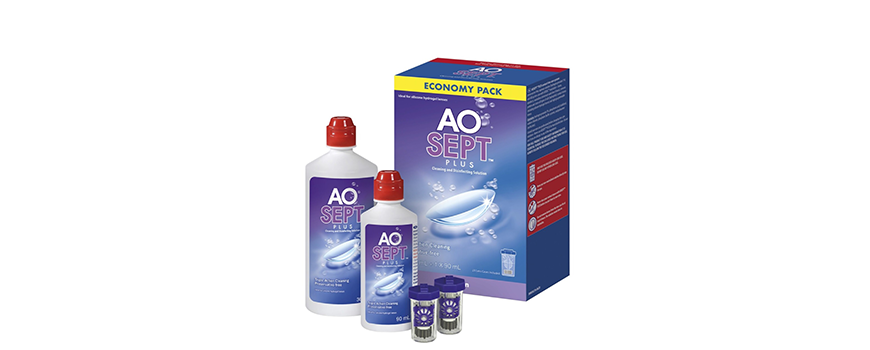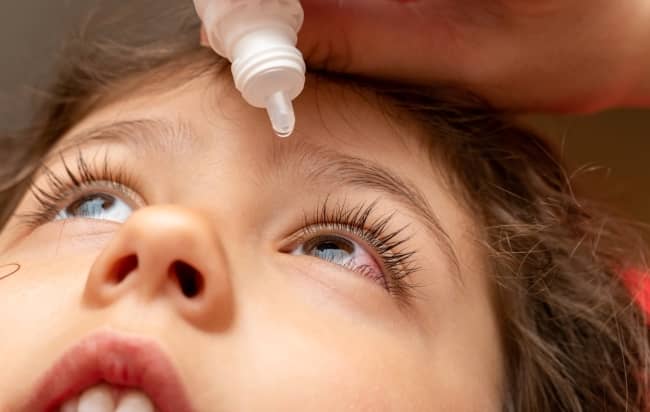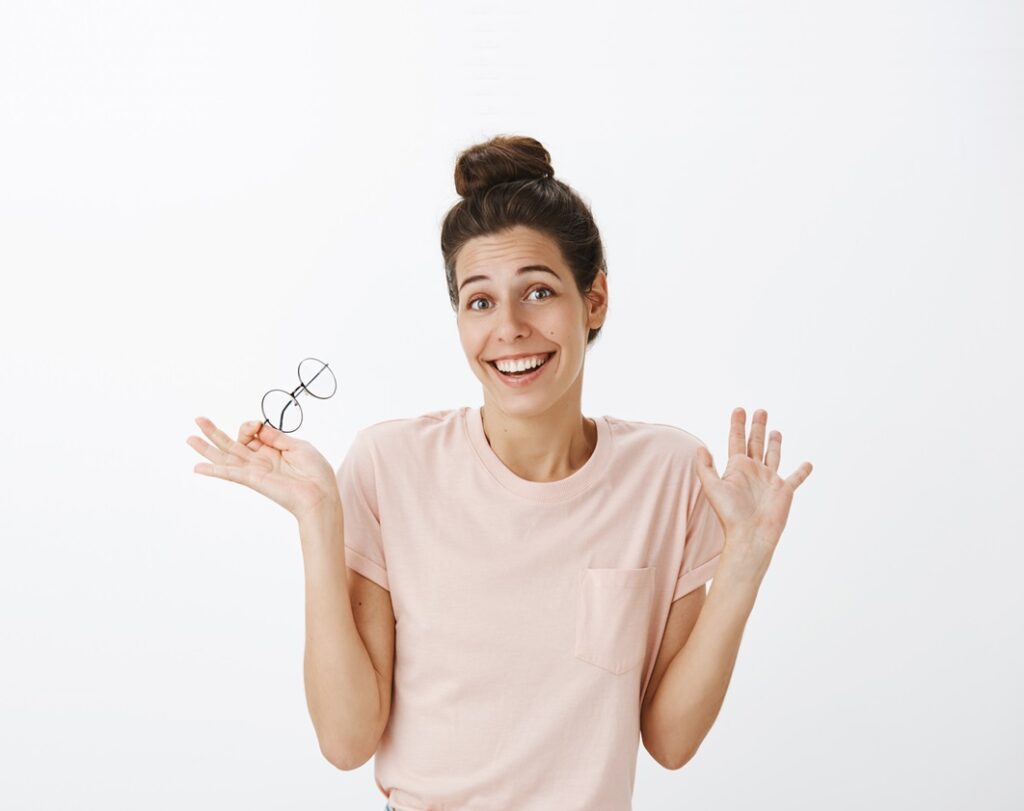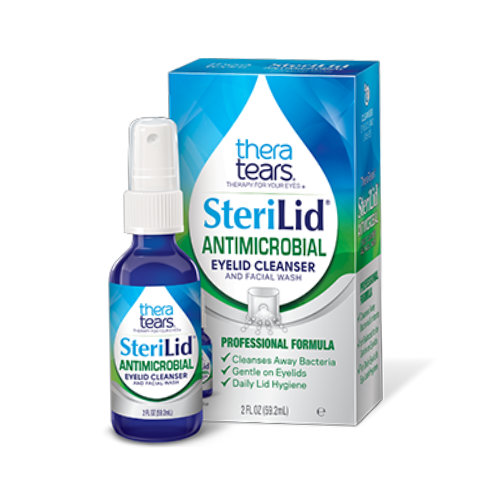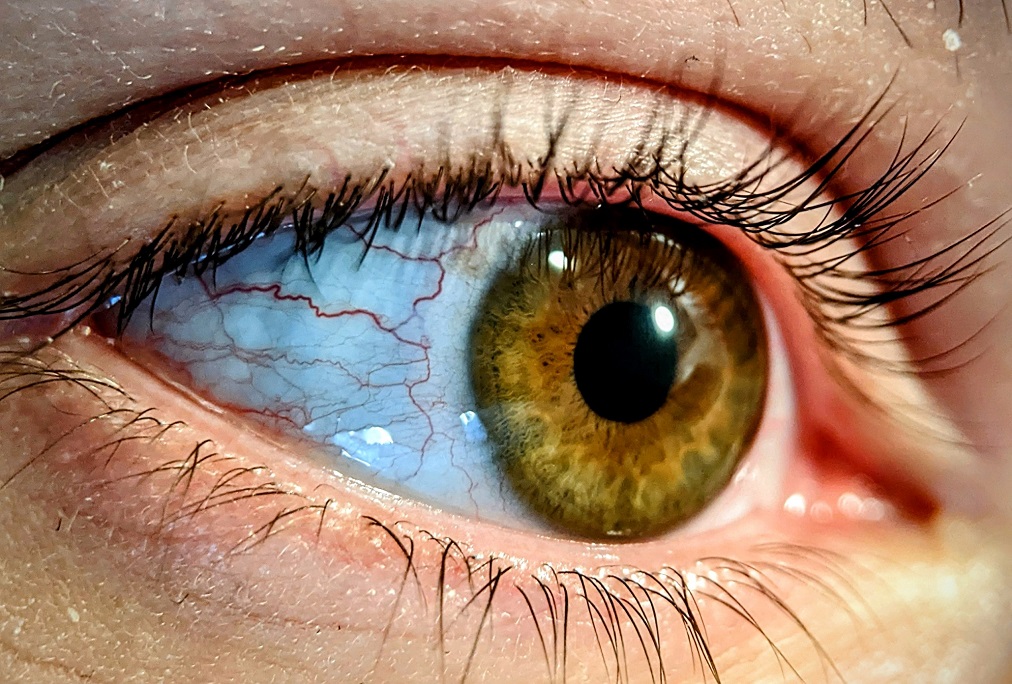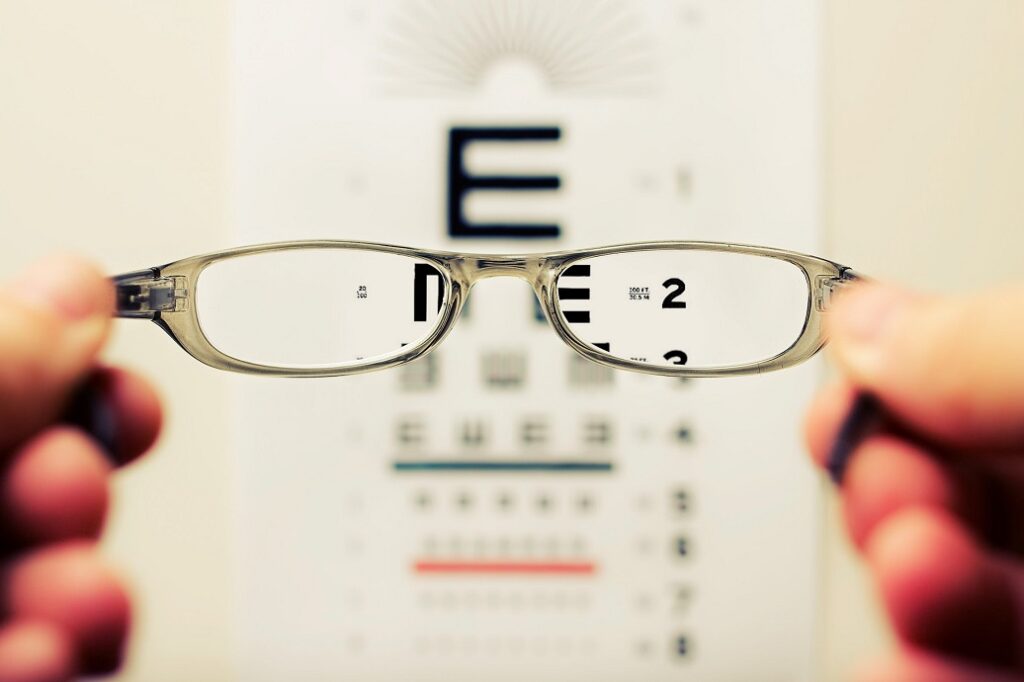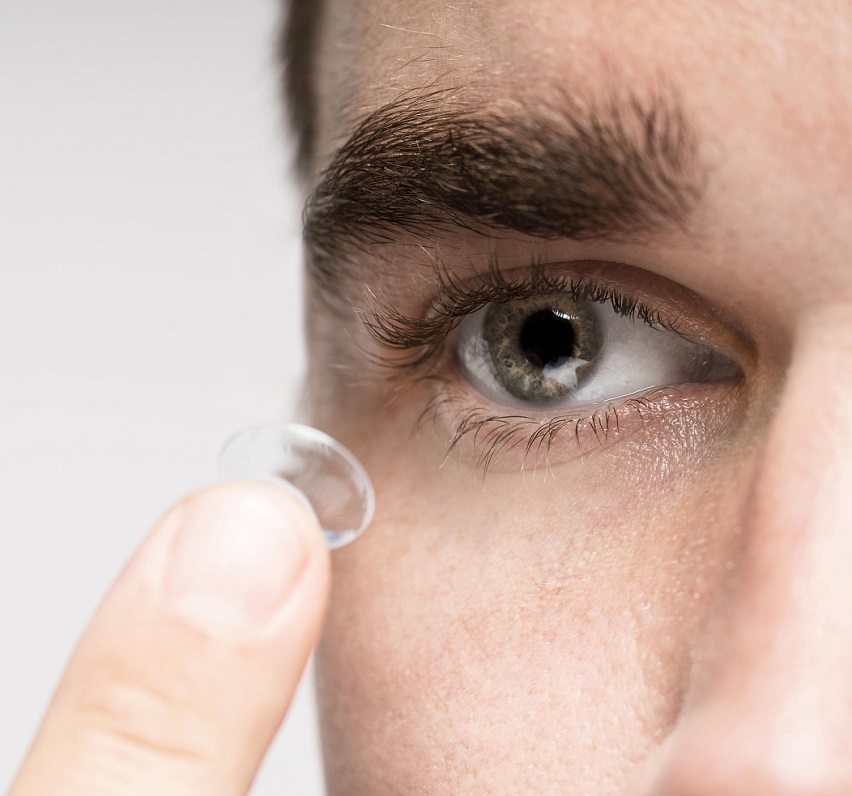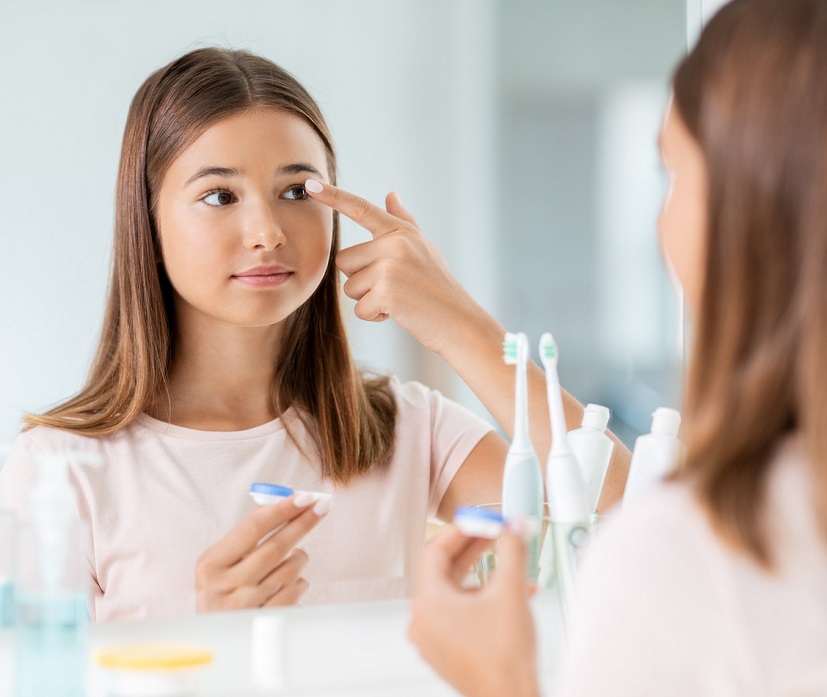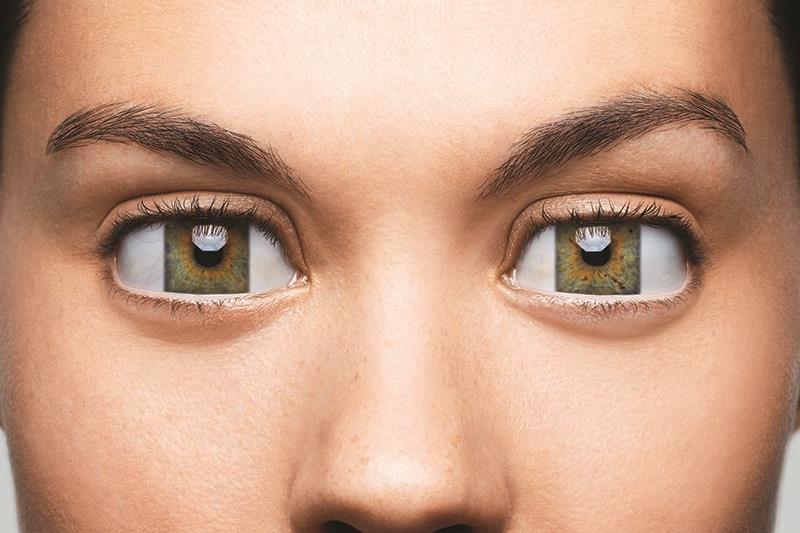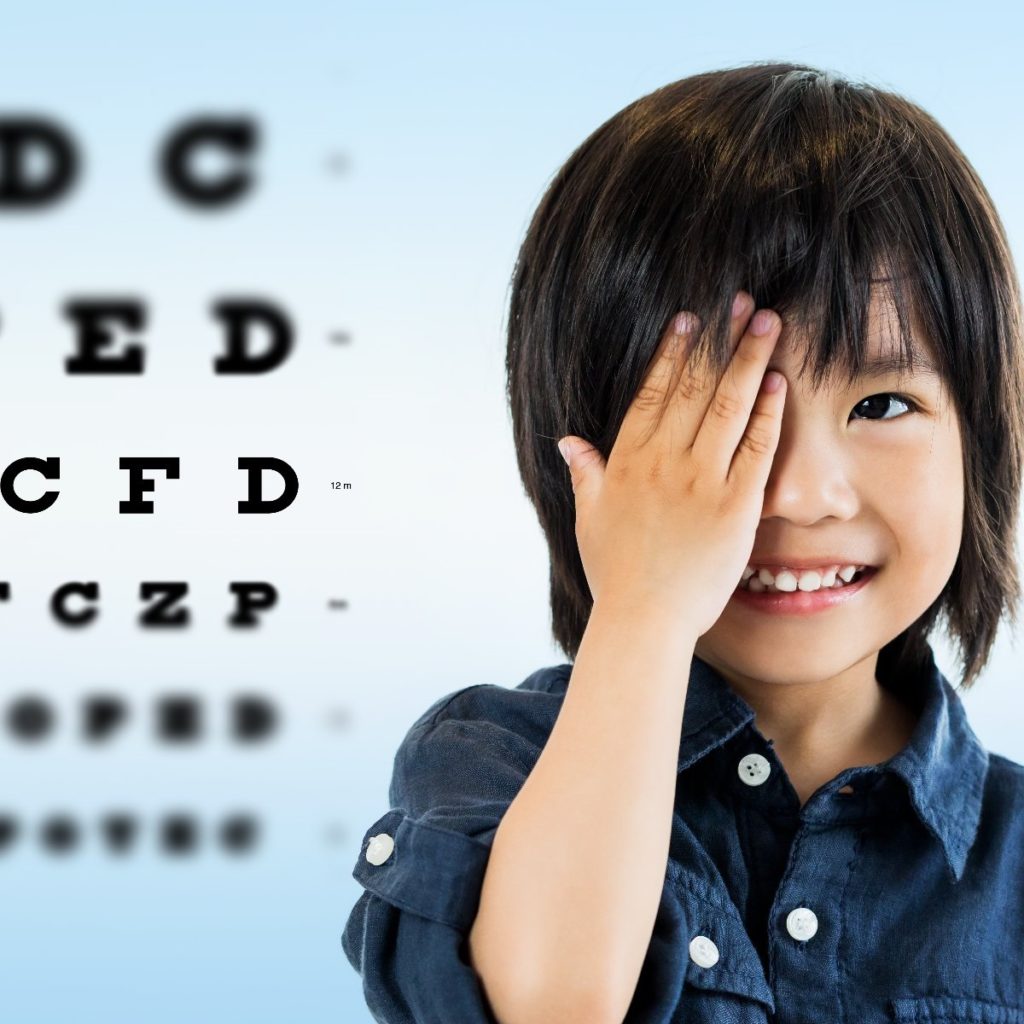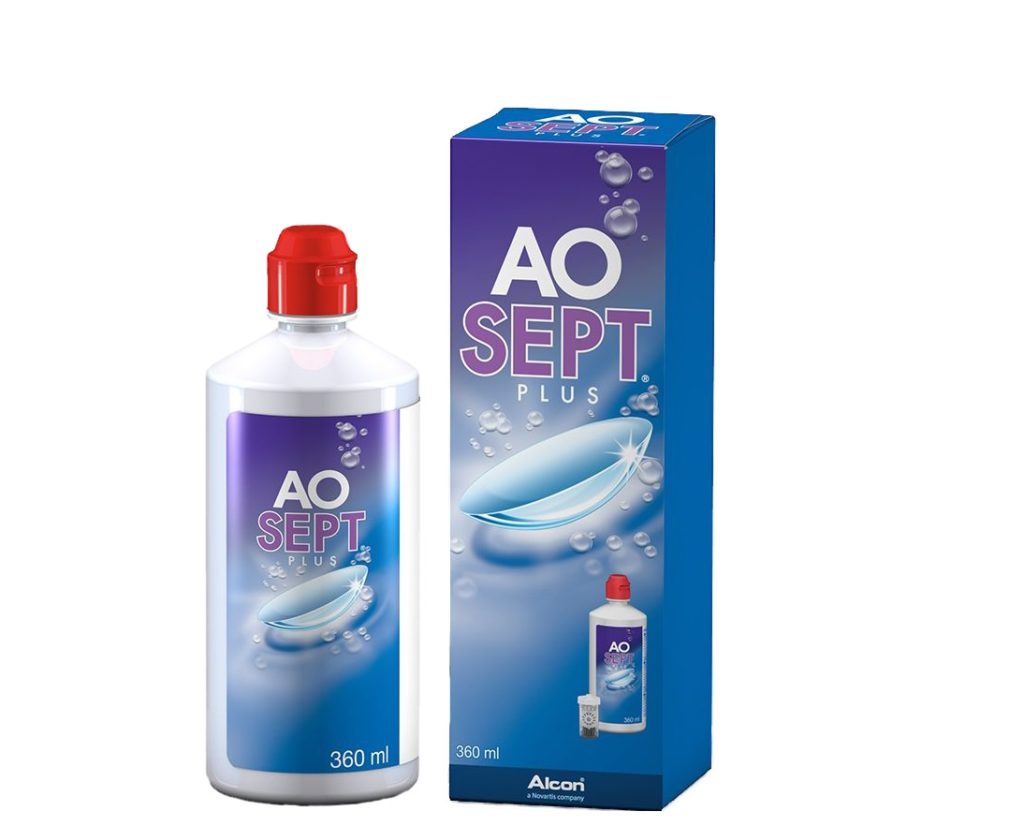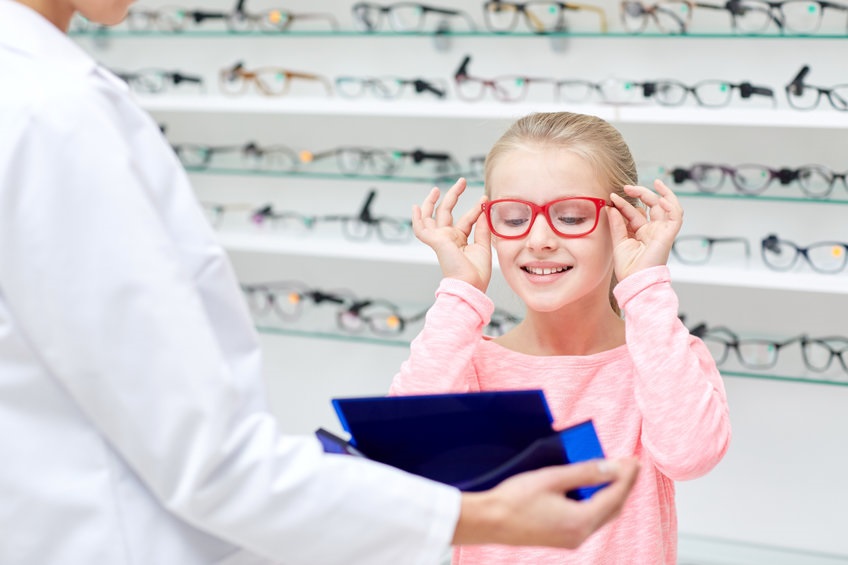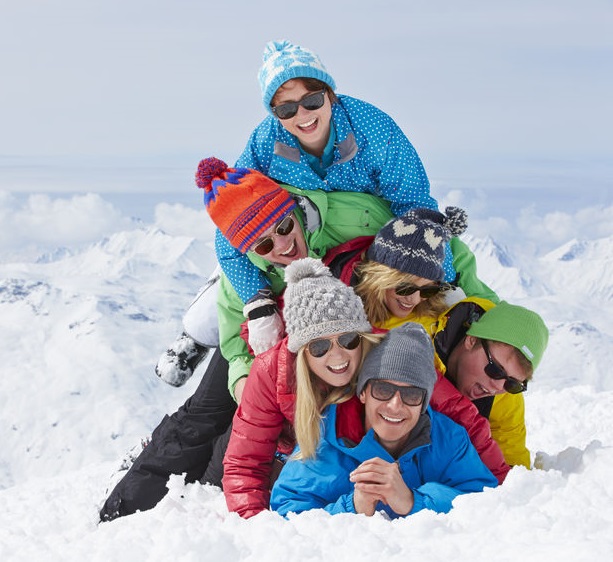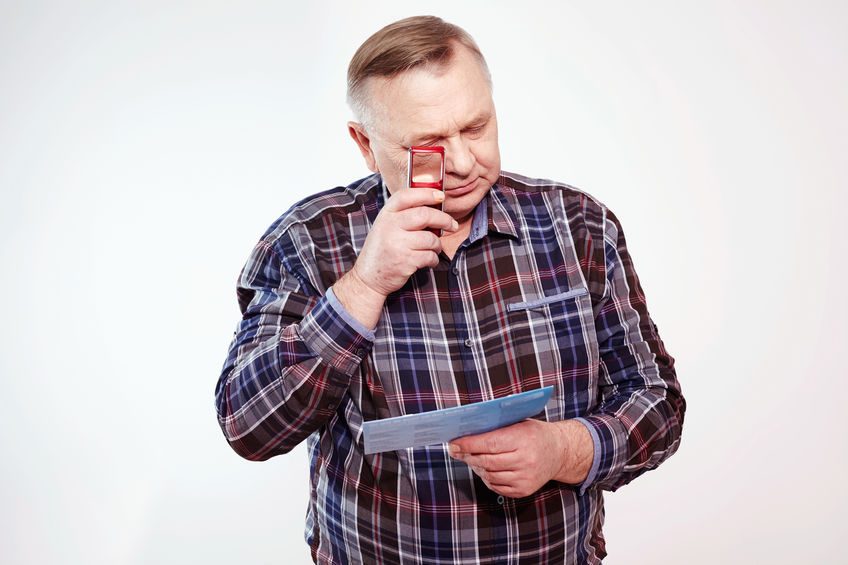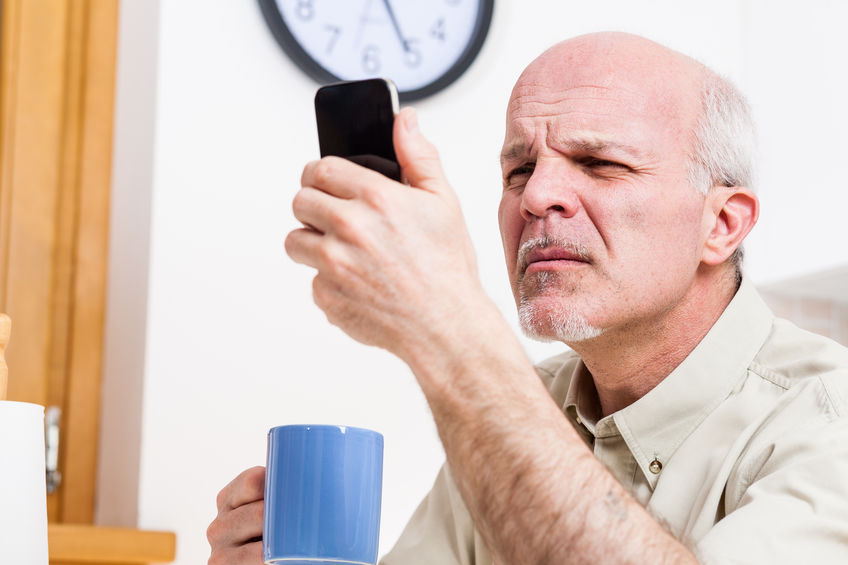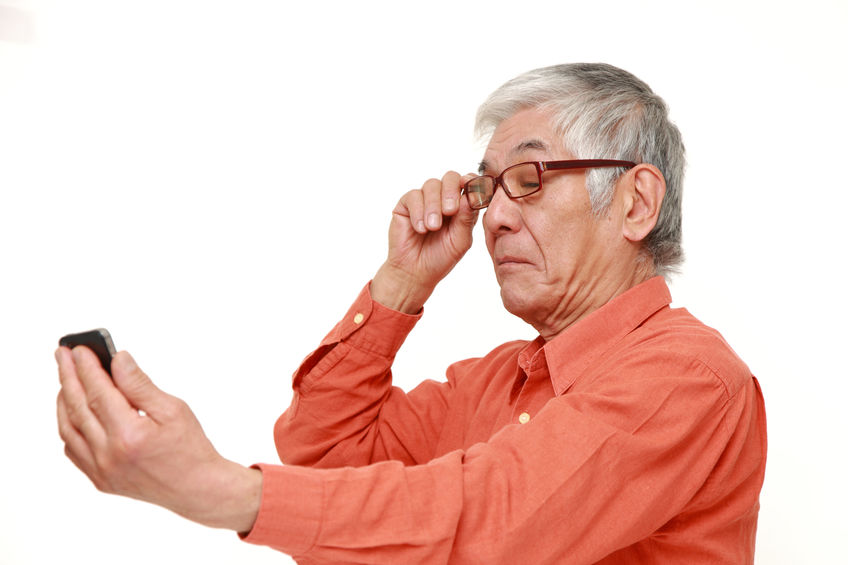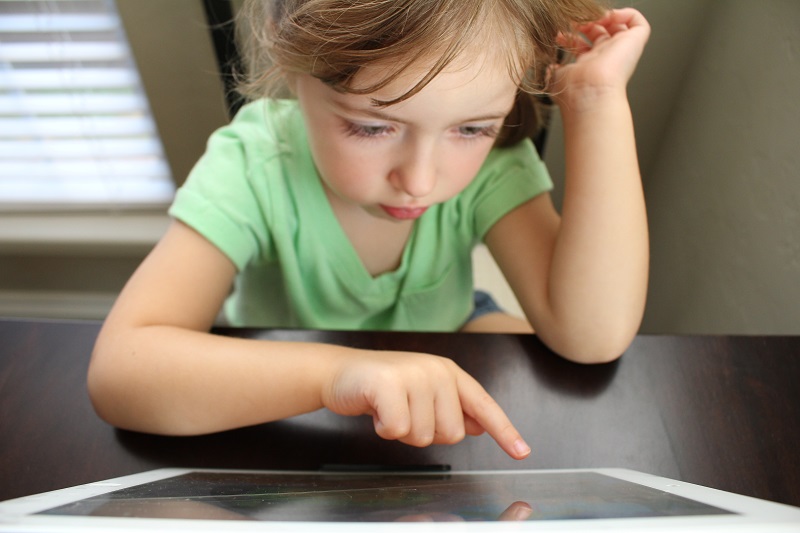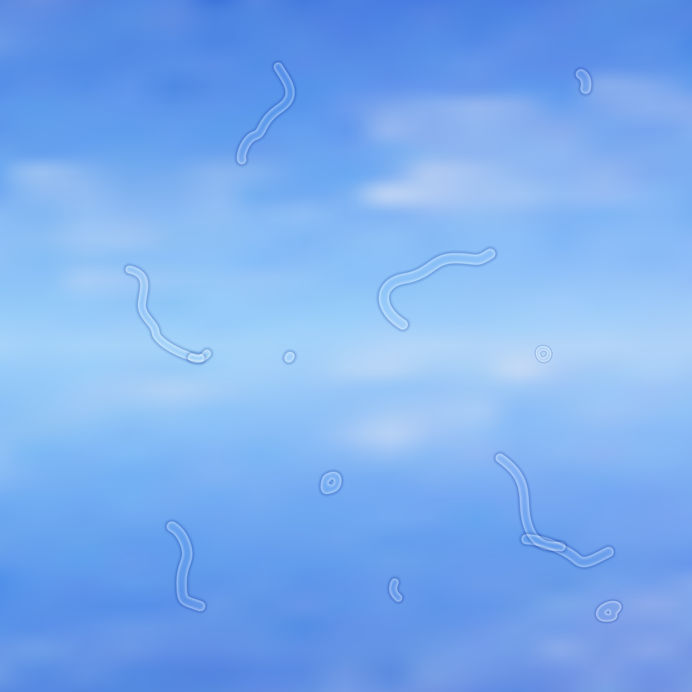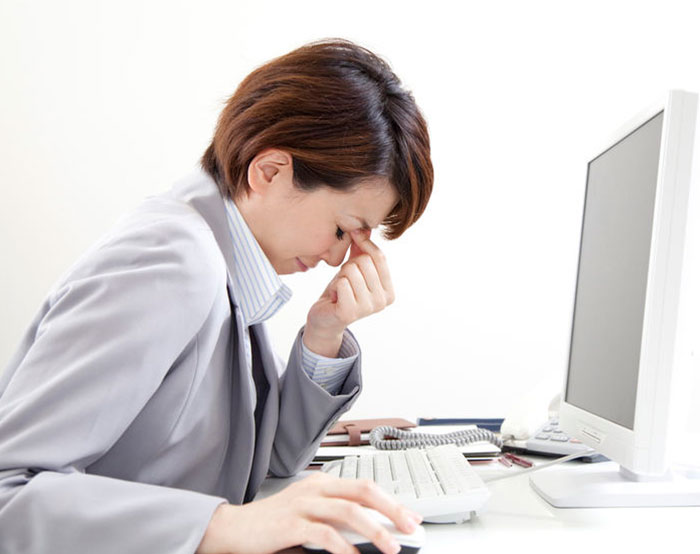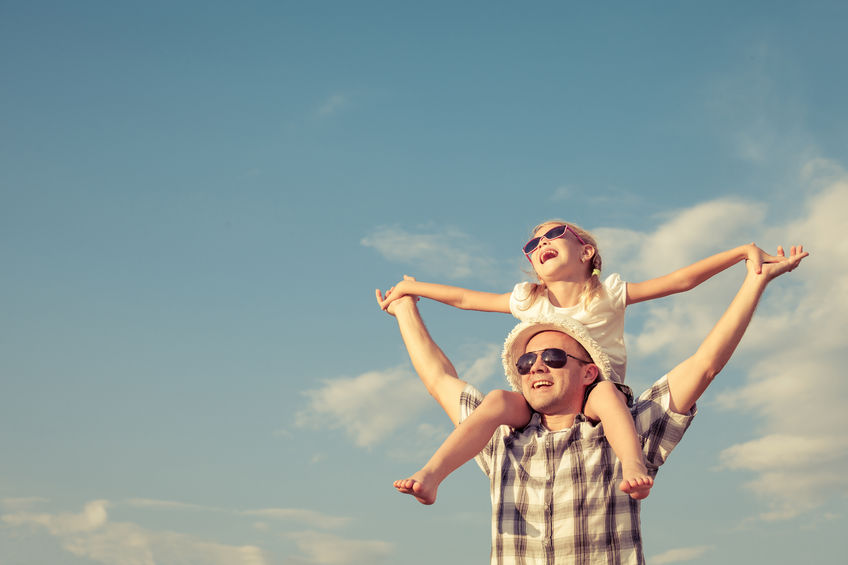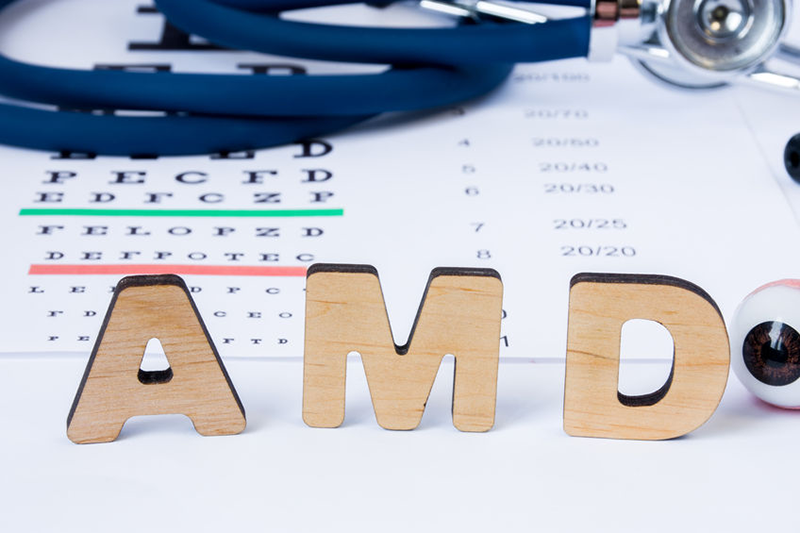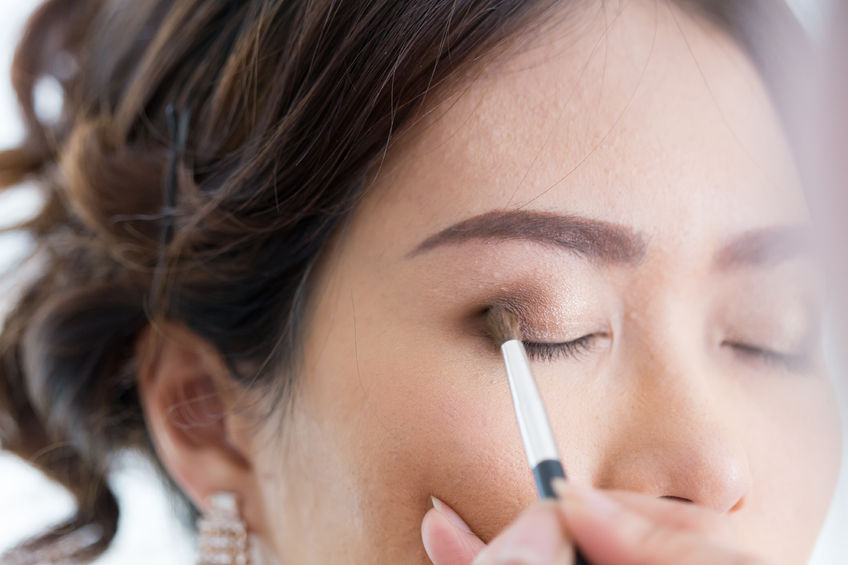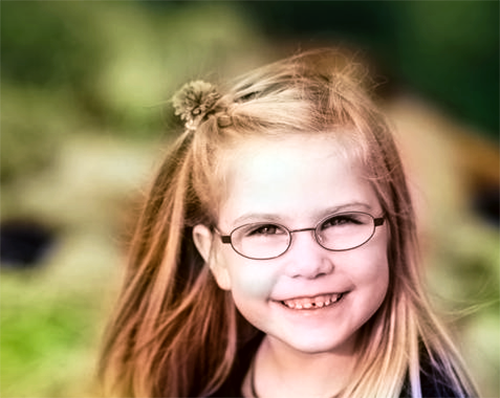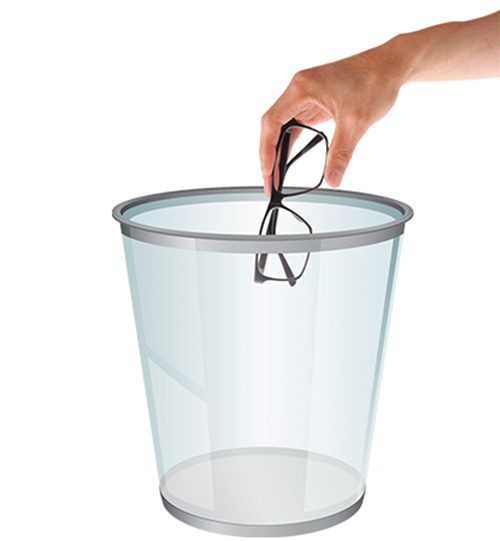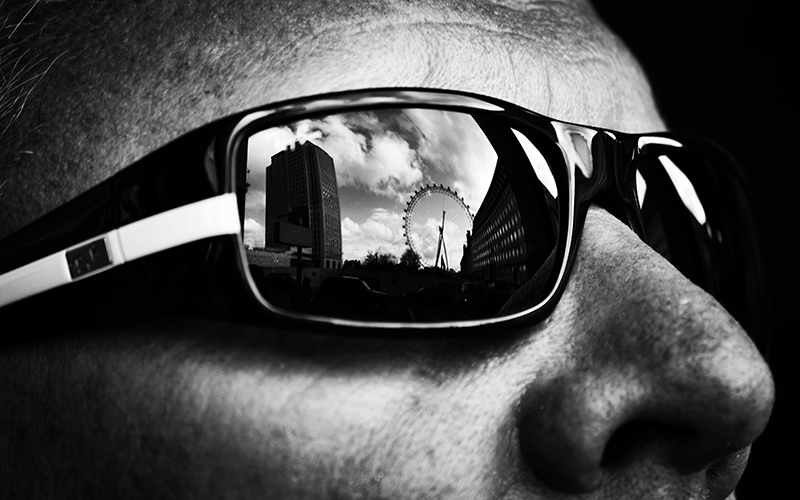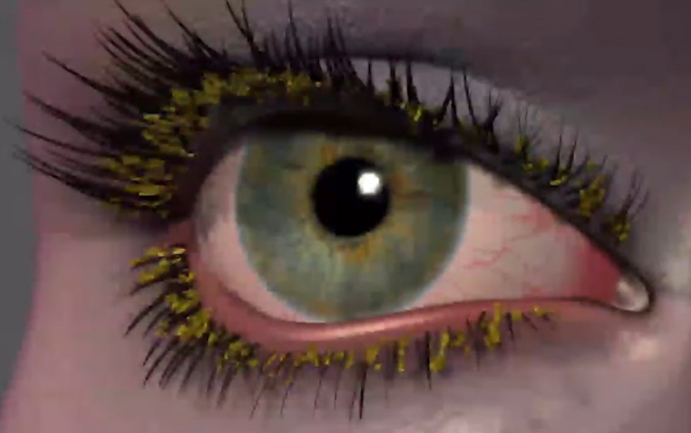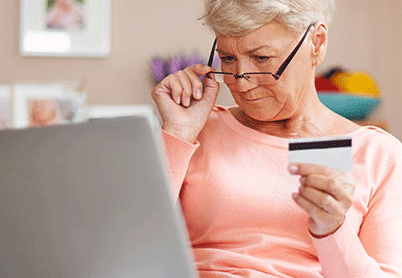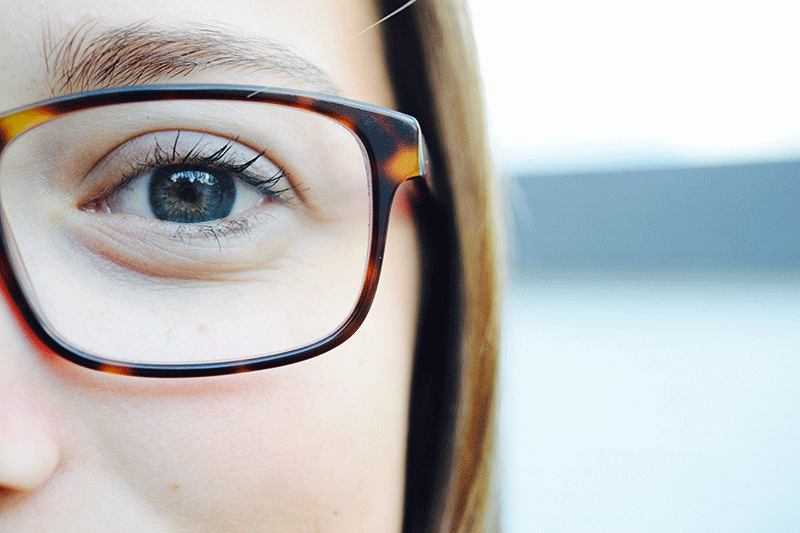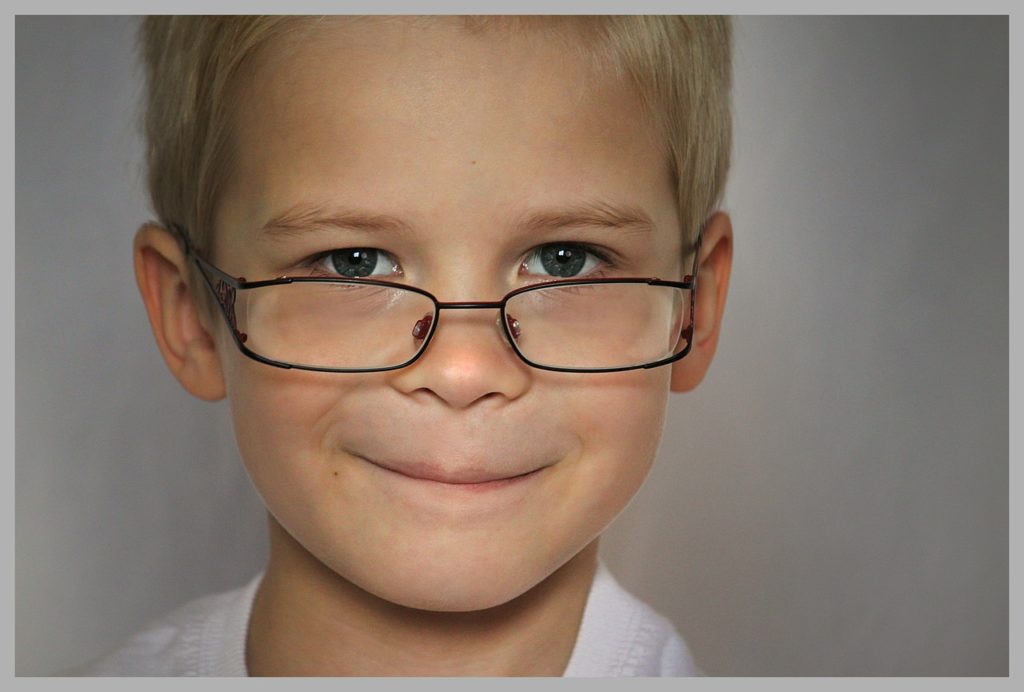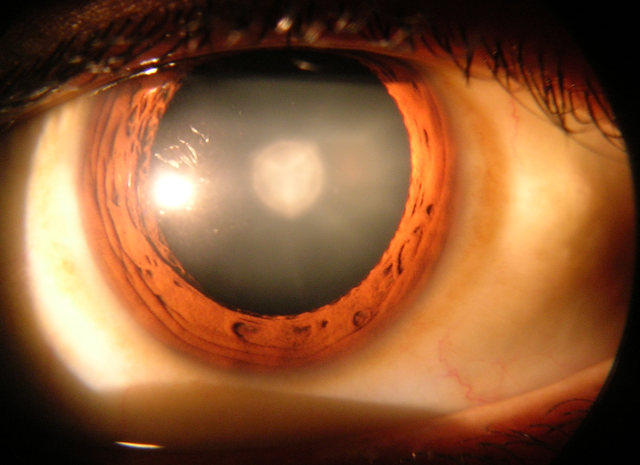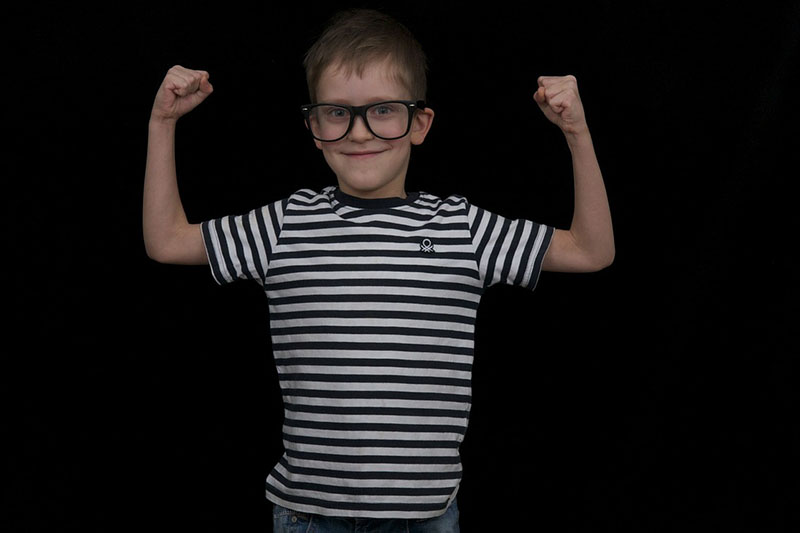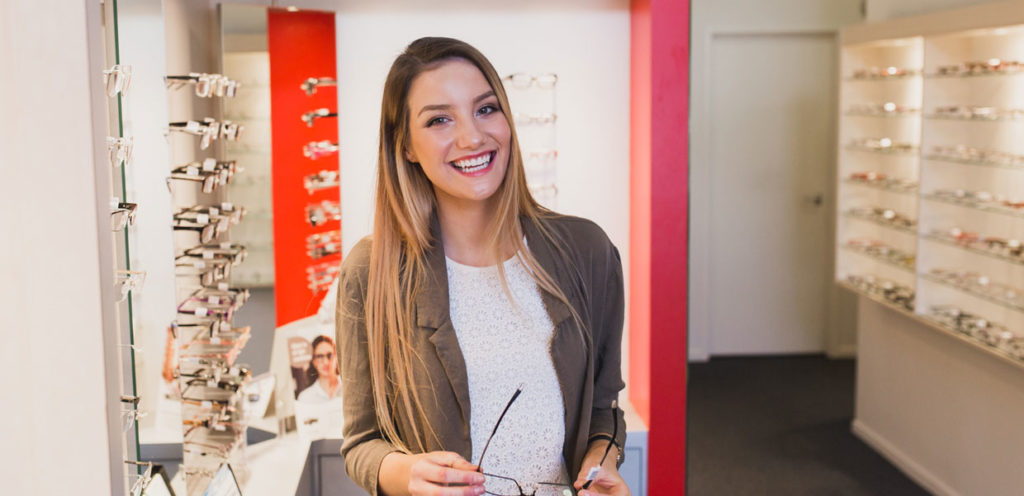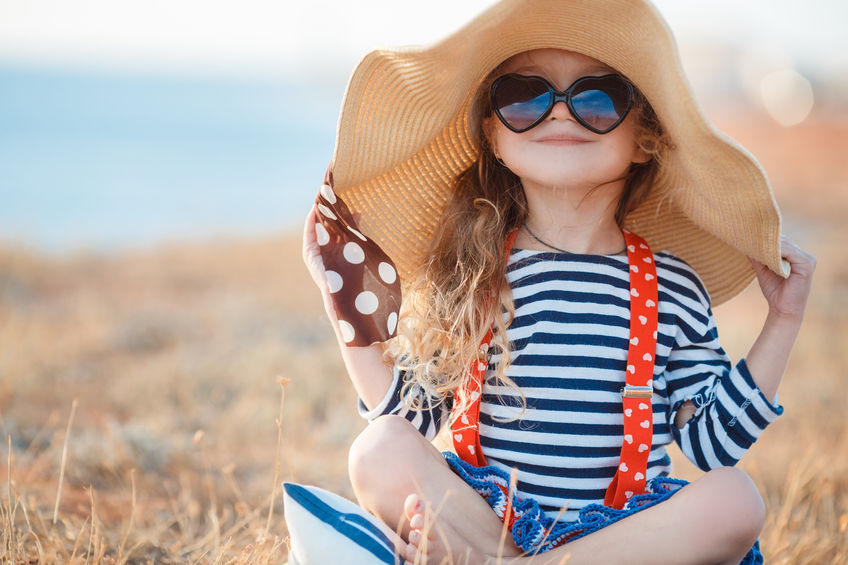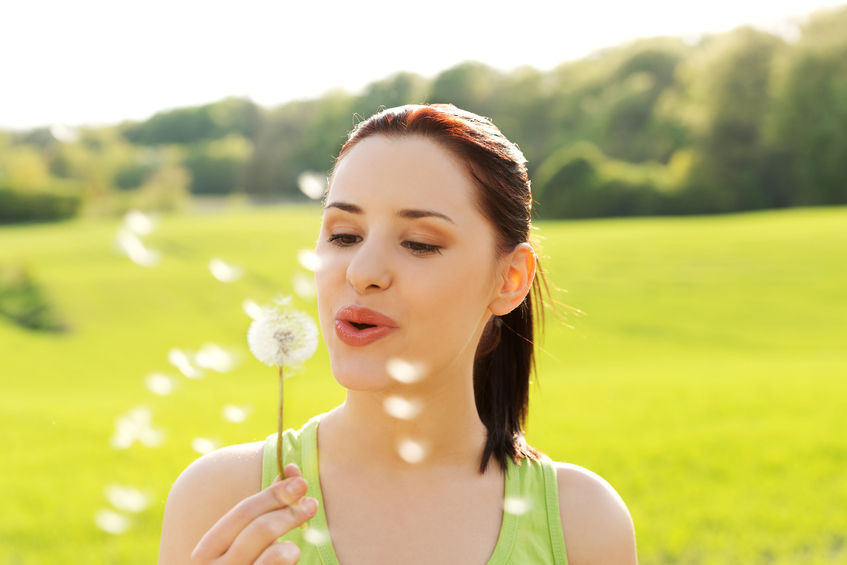About John O’Connor Blog
- All
- Contact Lenses
- Deals
- Eye Conditions
- Eye Health
- Eye Info
- Eye Tests
- Frames
- Prescription Glasses
- Sunglasses
Aosept Plus on sale – Do we have the eye-deal solution for you
Perfect for daily lens wearers, AOSept Plus Economy Pack provides a long-lasting supply of solution and is compatible with all lens types. Get Aosept Plus on sale. AOSept Plus Economy Packs are now available at our exclusive price of $39 per pack. Visit John O’Connor Optometrists in Newmarket or Henderson to take advantage of this unbeatable offer. Your eyes deserve nothing less Alcon AO SEPT Plus is a one-bottle, no-rub, hydrogen peroxide-based contact lens care solution. It is one of the most effective contact lens cleaning solutions available. This pack includes a generous 360ml bottle of AOSept Plus solution, along with a convenient 90ml travel-sized bottle and two contact lens cases. Your lenses will be clean and fresh. Why choose AOSept Plus? AOSept Plus is a trusted name in contact lens care. This solution combines the proven power of peroxide with the convenience of a one-bottle system. Your lenses will safe and comfortable to wear throughout the day. AOSept Plus effectively removes protein deposits, thoroughly cleans all types of lenses and gets rid of harmful bacteria. Got sensitive eyes? Are your eyes prone to infection? Say goodbye to irritation and discomfort. AOSept Plus does not contain the added preservatives found in multi-purpose contact lens solutions, which can lead to contact lens discomfort. Customers rave about the effectiveness of AOSept Plus, particularly those with sensitive eyes or allergies, providing unparalleled hygiene and comfort. Safety and compatibility AOSept Plus is safe for use with all types of contact lenses. Simply follow the included usage instructions. AO Sept solution contains hydrogen peroxide. Over 6 hours in the lens case, the hydrogen peroxide is converted to a neutral solution that is safe for the eyes. Always use the contact lens case provided with the AO Sept as the case activates the neutralisation process. Cleaning your lenses 1) Make sure you wash your hands thoroughly before removing your lenses from your eyes and placing in the Aosept case. The Aosept solution cannot be used with any other case as the hydrogen peroxide will not be neutralised and the solution will burn the eyes. 2) Fill the empty case up to the line with AO Sept solution, then screw the lens basket into place. The solution level will then rise above the line. 3) Leave the case upright for 6 hours. To ensure the neutralisation process, the case must stay upright so oxygen can escape through the holes in the lid. 4) In the morning, or after 6 hours, you can safely remove the lenses and insert them directly into your eyes. There is no need for any additional rinsing. AOSept Plus Economy Pack is the solution you’ve been looking for We have AOSept Plus on sale. Enjoy clean, comfortable lenses with the AOSept Plus Economy Pack. Unsure if AOSept Plus is right for you? Our team of experienced optometrists is here to help and address any concerns you may have. Call our Newmarket Optometrists on 09 522 1283 or our Henderson Optometrists on 09 836 1731 or send us an email via our contact page.
NanoVista glasses – they’re childproof
Childproof glasses NanoVista glasses are recognised in the world of eyeglass frames for being kid-proof. Made using innovative materials, these frames have been designed with our most demanding customers in mind: babies, children and teenagers. The unparalleled durability and flexibility of these frames make them an excellent choice for parents looking for reliable eyewear solutions for their little and not-so-little ones. Designed to safely withstand the rigours of life with a kid, NanoVista frames are known for comfort, safety and longevity. Putting kids in the frame These glasses have been designed specifically for children. Most frames seem to be just a cut-down version of adult-sized glasses. However, a child’s facial features are very different to those of an adult. These frames can fit virtually any child’s face with none of the dangerous metal parts found in other children’s glasses. NanoVista frames offer the highest level of flexibility known in prescription eyeglasses. Unlike traditional children’s eyeglass frames that are rigid and therefore prone to breakage, the curving rubber of NanoVista frames means they can flex and bend without losing their shape or integrity. Built out of Siliflex ™, a new plastic thermomoldable tear-proof material, these frames have ‘shape-memory’. They are guaranteed to revert to their original shape regardless of the level of stress they are put through, even wrenching and twisting. Thanks to the twist-proof special “52” hinge design used in these frames, they are capable of withstanding opening angles above 270°. Comfort is key when it comes to children’s glasses, especially for younger children who may be less tolerant of discomfort. Siliflex ™ frames are 35% lighter than frames manufactured from acetate. The lightweight construction minimises the discomfort often associated with wearing glasses, so your child can wear their glasses comfortably from morning until bedtime. Parents worry about their kids’ safety, especially when it comes to eyewear, and NanoVista glasses are all about safety and comfort. They have been designed with rounded edges and smooth contours, with no metal parts or sharp edges. Even kids can’t break them As optometrists, we know how much parents value not having to change their children’s glasses every two seconds because they have broken. Kids lead active lives filled with play, exploration, and more than the occasional mishap. NanoVista frames are engineered to be virtually indestructible. These frames can withstand the inevitable bumps, drops, and twists that accompany childhood adventures. But wait there’s more. Kids love them. Available in a variety of pretty cool colours, shapes, and sizes, these frames cater to every child’s individual preference and personality. Whether your child prefers bold and vibrant or classic and understated, NanoVista has a frame to suit. And they can be used with changeable temples or switched to wear as a headband. With their flexible design, comfort and style, NanoVista frames are a practical choice for active kids. Even better, they are the perfect solution for parents wanting indestructible, flexible children’s glasses that can handle pretty much anything that a kid will throw at them. Come and see us. John O’Connor Optometrists is a 100% New Zealand company known for quality eyeglasses Auckland families can trust with their vision. For everything you need to know about these hardworking children’s glasses, call 09 522 1283 for our Newmarket optometrists. To speak to an optometrist in Henderson call 09 836 1731.
Pros and cons of atropine eyedrops for myopia control
Myopia, or nearsightedness, impacts millions of individuals worldwide. Particularly concerning is its impact on children, whose eyes are still developing. Myopia causes distant objects to appear blurry, making activities like reading the board in school or participating in outdoor sports challenging. At John O’Connor Optometrists, our team is committed to providing comprehensive solutions to help manage and control myopia. One solution gaining attention is the use of atropine eyedrops. In this blog, we’ll explore the pros and cons of atropine eyedrops for myopia control, so you have the information needed to make informed decisions about your child’s eye care. Understanding myopia Myopia occurs when the eyeball is too long, or the cornea is too curved. This causes light rays to focus in front of the retina instead of directly on it. This results in blurred distance vision while near vision remains clear. Myopia typically develops during childhood and tends to worsen as the eyes continue to grow, often stabilising in early adulthood. Additionally, myopia can increase the risk of eye conditions such as cataracts, glaucoma, and retinal detachment later in life. What are atropine eyedrops? Atropine eyedrops are commonly used in ophthalmology for dilation of the pupil, management of certain eye conditions, and, more recently, as a treatment for myopia control. Atropine works by blocking the action of acetylcholine, a neurotransmitter responsible for pupil constriction. By dilating the pupil and temporarily relaxing the focusing muscles in the eye, atropine helps to reduce the strain on the eye associated with excessive growth, thereby slowing down the progression of nearsightedness. Recent research suggests that a concentration of atropine as low as 0.05% may be the most effective in slowing myopia progression in children while minimising potential side effects. Typically, you apply these drops once daily. Some pros and cons of atropine eyedrops for myopia control Pros: 1. Effective myopia control: Atropine eyedrops have been shown to effectively slow down the progression of myopia in children, reducing the risk of severe nearsightedness. Simple application: Administering atropine eyedrops is straightforward, usually requiring only a single drop in each eye once a day. Minimal side effects: Compared to other myopia control options, such as orthokeratology or multifocal contact lenses, atropine eyedrops generally have fewer side effects. Cons: 1. Pupil dilation: Atropine causes temporary pupil dilation, which can result in sensitivity to light and difficulty focusing on near objects, particularly in brightly lit environments. 2. Blurry vision: Some people may experience temporary blurry vision, especially when transitioning between near and distant objects. 3. Long-term effects: The long-term effects of using atropine eyedrops for myopia control are still being studied, and further research is needed to fully understand their implications. See a trusted eye expert While atropine eyedrops show promise as a treatment option for myopia control, it’s essential to consult with an eye care professional to determine the most suitable approach for your child. At John O’Connor Optometrists, we take a comprehensive, holistic approach to your child’s vision and our experienced team can provide guidance and support to help manage your child’s myopia and safeguard their long-term eye health. Whether you visit our Newmarket or Henderson Optometrists, you can trust that your child’s vision is in caring, expert hands. To schedule an appointment or learn more about our services, please contact us at 09 522 1283 for our Newmarket Optometrists or 09 836 1731 for Henderson. Alternatively, you can reach out via our contact page.
Pros and Cons of Miyosmart Lenses for Myopia Control
Are you on the lookout for solutions to address your child’s myopia? This blog post takes a look at both the pros and cons of Miyosmart lenses. To help you make an informed decision about how to manage myopia progression, we will explore the efficacy of these lenses as well as some potential drawbacks. Understanding Myopia and its impact Before we examine Miyosmart lenses in detail, however, we’ll take a quick look at myopia and how it affects children’s vision. Myopia, or shortsightedness, can make distant objects appear blurry. Beyond the blurred vision, myopia is associated with potential long-term eye health issues. Research indicates a correlation between myopia progression and later-life eye conditions. As parents, you can help your child’s outlook by being proactive in addressing myopia progression. Advantages of Miyosmart lenses Miyosmart lenses are recognised for their effectiveness in slowing myopia progression in children. That early intervention with these lenses can make a substantial difference in your child’s vision is backed by numerous studies. Children wearing Miyosmart lenses have shown a significant decrease in myopia progression compared to traditional lenses. These lenses focus on slowing down the lengthening of the eyeball. Miyosmart lenses intentionally have parts that blur what wearers see around the middle of the lens. This encourages the side vision or peripheral vision to do a bit more work. This seems to have an impact on how the eye grows, slowing down the process that makes vision more nearsighted. Comfort and convenience As children may wear glasses for extended periods, Miyosmart lenses are comfortable even during long hours of use. Designed with lightweight materials, Miyosmart lenses are not heavy on the face, making them more comfortable to wear, especially for children. Outdoor usage adaptability Miyosmart lenses accommodate both indoor and outdoor activities. The lenses adapt to the conditions, so whether your child is inside or outside, these lenses adjust to different lighting. Very handy for kids who spend time both indoors and outdoors. Disadvantages of Miyosmart lenses to consider Financial investment While providing effective myopia control, Miyosmart lenses might not be the most budget-friendly option for some families. Maintenance requirements To reap the benefits, these lenses require proper care and maintenance. If your child is prone to misplacing things, this might be an extra concern. Limited availability Miyosmart lenses may not be universally accessible. However, if you’re looking for an optometrist in central Auckland, then John O’Connor Optometrists provide professional advice and sell Miyosmart lenses from their Newmarket optometrist. They also have a branch in Henderson. So, if want to see the best optometrist in West Auckland for help with myopia, then John O’Connor Optometrists is the place to go. Myopia control choices Apart from Miyosmart lenses, various other treatments exist for myopia control. Lifestyle can certainly contribute to its progression. Encouraging outdoor activities, limiting screen time, and adopting healthy eye habits can complement the benefits of Miyosmart lenses. Specialised eye drops and specific visual exercises may also be some alternatives worth exploring. Remember, every child is unique, so consult with your optometrist for personalised guidance to find the best fit. John O’Connor Optometrists – Supporting myopia management Ready to secure your child’s eye health amidst the challenges of myopia progression? Whether you opt for Miyosmart lenses or explore other avenues, make an informed choice. Reach out to professionals, like the team at John O’Connor Optometrists, for advice and support. Our commitment to eye health ensures a comprehensive, holistic approach to your child’s vision. You can reach our Newmarket Optometrists at 09 522 1283 or our Henderson Optometrists at 09 836 1731. Alternatively, you can send us an email via our contact page.
The advantages and disadvantages of Orthokeratology overnight lenses
Myopia, or nearsightedness, impacts distance vision. It often stems from irregularities in the eye’s structure, such as an elongated eye shape or an overly curved cornea. Its onset usually occurs during childhood and can progress as the eyes continue to grow. Factors such as genetics, extended near work, and limited outdoor activities also contribute to its development. Orthokeratology, or OrthoK therapy, is a non-surgical treatment for correcting nearsightedness. Orthokeratology lenses are rigid, gas-permeable moulds that work their wonders overnight. Users remove the lenses upon waking, immediately experiencing clearer and sharper vision without needing glasses or daytime contact lenses. The lenses are specially crafted for each patient and gently reshape the cornea during sleep. To create the correct contact lens for each individual, the surface curvature of the cornea is mapped using a topography machine. This information, as well as the patient’s refraction is then used to design the customised lens. However, the improved eyesight is not permanent. Myopia begins its slow return after approximately 12 hours. Over time, the duration of clear vision can extend; some people may experience perfect vision for up to two days. And, it’s not for everybody. Let’s look at the advantages and disadvantages of Orthokeratology. Advantages of Orthokeratology for myopia control Non-invasive treatment One of the standout advantages of Ortho-K is its non-invasive nature. These lenses are worn overnight, reshaping the cornea during sleep. This appeals to individuals wary of surgical interventions, providing a gentler alternative for myopia control. Daytime freedom Ortho-K offers users the freedom of clear daytime vision without the reliance on glasses or daytime contact lenses. This advantage is particularly significant for those with active lifestyles, allowing seamless participation in sports and outdoor activities. Slows Myopia progression Scientific studies suggest that Ortho-K may play a pivotal role in slowing the progression of myopia, especially in children and adolescents. As unchecked myopia in early years can lead to higher myopia in adulthood and is associated with an increased risk of eye diseases, this is definite plus. Peripheral vision improvement By addressing the central corneal curvature, Ortho-K lenses have the potential to enhance peripheral vision. This is of special benefit for tasks such as driving and sports, where a broad field of clear vision is essential. Disadvantages of Orthokeratology for myopia control Adaptation period Initially, some users may experience discomfort or temporary visual disturbances. However, that these issues often lessen with continued use as the eyes adjust to the lenses. Maintenance Proper lens care is crucial with Ortho-K lenses. As with all forms of contact lenses, there is a slight risk of infection. This is extremely rare and that is why we give careful cleaning instructions and advise regular follow-ups with our optometrists to monitor eye health and ensure the lenses are fitting correctly. Not Universally suitable Ortho-K lenses may not be suitable for everyone, particularly people with certain eye conditions or irregular corneas. A thorough eye examination is necessary to determine eligibility and suitability. Cost considerations While Ortho-K lenses present long-term benefits, the initial investment and ongoing maintenance costs may be higher when compared to traditional contact lenses or eyeglasses. However, when it comes to effective myopia control and the long-term benefits, many users find the advantages outweigh the costs. Tired of wearing glasses or contacts or want a more convenient and effective way to correct your vision? Ortho-k lenses may be the solution. Orthokeratology can be a good choice for dealing with nearsightedness, but not everyone is suited. Knowing how nearsightedness can be different for people of different ages and stages shows why it’s so important to be clear on the advantages and disadvantages of Orthokeratology. The optometrists at John O’Connor are really skilled at working with nearsightedness and can suggest solutions that fit each person. Are you a candidate for Orthokeratology? The best way to determine if you are a good candidate would be to book in for a full eye examination with us. Our optometrist will carefully assess your eye health, corneal shape, lifestyle and visual requirements to ensure that the treatment is right for you. Interested in better vision? Send us an email here, to find out more or give us a call to book in for a free chat with one of our optometrists about the advantages and disadvantages of Orthokeratology and whether it’s right for you. You can reach our Newmarket Optometrists at 09 522 1283 or our Henderson Optometrists at 09 836 1731. Alternatively, you can send us an email via our contact page.
SteriLid anti-microbial cleanser for the health of your eyes
If you’ve been dealing with persistent and highly irritating blepharitis or dry eyes, you know how much they can impact your daily life. The discomfort, inconvenience, itching, and blurry vision that come with it can drive you crazy. SteriLid Anti-Microbial Spray might just be the solution you’ve been looking for. Understanding Blepharitis Blepharitis is not just a minor irritation; it’s a condition caused by an overgrowth of bacteria around the eyelids, leading to inflammation of the oil glands, redness, itching, crusty debris at the base of your eyelashes and eyelids and a constant need to blink and rub your eyes. Blepharitis can be particularly challenging to manage, but if left untreated, it can lead to more serious issues like hordeolum (a bacterial infection of the oil glands) and chalazion (a bump on the eyelid). These conditions can be painful and may even cause your eyelashes to grow in unnatural directions, potentially scratching your cornea and creating ulcers. Keeping your eyes clean People with dry eyes tend to rub their eyes, a lot. Eye rubbing can cause inflammation and infection. Sterilid anti-microbial cleanser is ideal for the delicate skin of the eyelid. It is very important to clean your eyes and maintain good eyelid hygiene, every day. SteriLid eyelid cleanser is a prescription-strength eye wash. It cleanses your eyelids and also helps in managing the symptoms of blepharitis and dry eyes. Its gentle, no-rinse, soap-free formula effectively eliminates bacteria and build-up on your lashes, providing relief and it’s safe for daily use. SteriLid – a natural disinfectant One of the key ingredients in SteriLid is Hypochlorous Acid. This is a natural disinfectant already present in your immune system that your body produces to fight off infections. This natural powerhouse is used in various fields, including eye care, dentistry, wound care, and dermatology. Hypochlorous Acid (HOCl), significantly reduces the bacteria around the eyelids and eyelashes, controlling blepharitis and alleviating symptoms of chronic dry eyes. How to use SteriLid Using SteriLid anti-microbial cleanser is easy. It comes in a convenient spray bottle. The gentle formula cleanses away debris and bacteria, leaving your eyes feeling refreshed and revitalised. Simply spray it onto a cotton pad, and gently spread it along your eyelids and lashes. The key here is to be gentle, don’t apply too much pressure. There’s no need for excessive rubbing or rinsing. Your ocular well-being matters Your eyes are precious, and taking care of them is important. If you’re experiencing symptoms of dry eye or blepharitis, don’t hesitate to talk to one of our optometrists. They can guide you on the best course of action and recommend suitable products for cleansing, care and the relief of symptoms. If you are interested in trying SteriLid, then talk to our eye care professionals at John O’Connor Optometrist. Call our Newmarket optometrist on 09 522 1283 or our Henderson branch on 09 836 1731 for more information!
Managing Dry Eye | Causes & treatments
Dry eye is a common eye condition that can really impact how you see the world. Read on to learn more about its causes and, most importantly, effective treatments to keep your eyes feeling refreshed. What is Dry Eye? Dry eye, also known as dry eye syndrome or keratoconjunctivitis sicca, occurs when your eyes don’t produce enough tears or when the quality of your tears is compromised. Tears play a crucial role in maintaining the health and comfort of your eyes. They lubricate the ocular surface, reduce the risk of infection, and provide essential nutrients to the cornea. Common causes Age: Dry eye becomes more prevalent as we age because tear production tends to diminish over time. Environmental factors: Exposure to dry or windy conditions, air conditioning, and heating can evaporate tears more quickly, leading to dryness. Screens: Blinking keeps the eye surface humid and hydrated. However, extended screen time can reduce the frequency of blinking, so the tear film is not spread across the entire cornea causing the eyes to become dry and irritated. Medical conditions: Certain health conditions, such as diabetes, thyroid disorders, and autoimmune diseases, can increase the risk of dry eye. Medications: Some medications, including antihistamines, decongestants, and antidepressants, can affect tear production. Effective Dry Eye treatments While this condition can be uncomfortable, there are treatments available for managing Dry Eye and alleviating symptoms. At John O’Connor Optometrists, we recommend the following treatments: Warm compression: Start with warm compression therapy using a wheat bag for about 10 minutes. This helps to stimulate the production of natural oils in your eyelids. Eyelid cleaning: Use an antimicrobial sterilid spray on a cotton wool pad to gently clean your eyelids and eyelashes daily. This step is crucial for removing any debris or bacteria that may contribute to dry eye. Manuka Honey Eye Drops: Optimel Manuka Honey Eye Drops are a natural and effective way to soothe dry eyes. Apply these drops three times a day for relief. Eye lubricants: Eye lubricants, such as eye drops or gels, used during the day help to keep eyes moist and comfortable. Lifestyle adjustments: Try taking regular breaks from screens, using a humidifier in dry indoor environments, and protecting your eyes from windy or dusty conditions. At John O’Connor Optometrists, we’re all about clear vision and good eye health. If you’re suffering from symptoms of dry eye, such as itching, burning, redness, or a gritty sensation, don’t hesitate to schedule an appointment with our expert optometrists. We can assess the severity of your dry eye and provide recommendations for managing dry eye and ongoing eye care. With a legacy spanning back to 1978, we’ve been helping New Zealanders see the world better. Our commitment to exceptional patient care, quality eyewear, and reasonable prices is what sets us apart. To make an appointment to come and see us at our Newmarket or Henderson optometry practices, please call us today at 09 522 1283 or 09 836 1731. We look forward to helping you see the world with clarity and confidence.
Treating dry eye with Optimel Manuka Eyedrops and Gel
Dry eye can be bothersome and uncomfortable and affects many people. Dry eye occurs when your eyes do not produce enough tears, the tears evaporate too quickly or there are issues with the meibomian gland. This can result in symptoms such as: Irritation and redness Itching or burning sensation Sensitivity to light Blurred vision Eye fatigue Dry eye can be really irritating It is painful and due to the increased risk of eye infection, like bacterial conjunctivitis and keratitis, dry eyes can result in permanent life-changing damage. Dry eye is an inflammatory condition: the surfaces of the eyes and eyelids swell. It can happen because of bacteria on the eyelids. This bacteria leads to an overgrowth of ocular flora or CFUs which in turn affect the oils in our meibomian glands. Reducing the number of CFUs can lower the production of this bacteria. Not only will this make dry eyes feel better, but it can also lower the risk of infections such as bacterial conjunctivitis and keratitis. Importance of treating Dry Eye It is very important you find the right treatment to reduce the dry eye symptoms in their early stages to stop them from developing further. However, antibiotic therapeutic regimens are not recommended for long-term use. So, if you’re looking for a natural and effective solution to soothe and heal dry eyes, and get the bacteria under control then we suggest you try Optimel Manuka eyedrops and gel. Trusted by optometrists and opticians, these bioactive products nourish the eyes and promote natural healing. Why choose Optimel for Dry Eye relief? Optimel Manuka eyedrops and gel create a protective barrier to reduce moisture loss from the eyes. They are formulated with Manuka honey which is well-known for its potent antimicrobial and anti-inflammatory properties. The drops and gel are specially designed to provide relief for dry eye symptoms while supporting the natural healing process of the eyes. For best results, use Optimel Manuka eyedrops and gel as directed by your optometrist. Optimel Manuka Eyedrops These eyedrops are suitable for long-term use. The drops provide long-lasting lubrication while being gentle on the eyes. The formulation minimises the risk of adverse reactions. Optimel Manuka eyedrops are very user-friendly. Their straightforward application makes for hassle-free daily use. They provide on-the-go relief, whether you’re at home, at work, or on your travels. Optimel Manuka Gel While we recommend Optimel Manuka Honey Eyedrops for use throughout the day to refresh the eye, Optimel Eye Gel is suitable for more severe cases of dry eyes. It is formulated with a higher concentration of Manuka honey for added efficacy, is preservative free and provides intensive hydration for severe dry eye symptoms. Applied at nighttime before bed, it can also significantly help reduce bacteria in cases of chronic lid disease. If you are interested in trying these products, then talk to your eye care professionals at John O’Connor Optometrist. Call our Newmarket optometrist on 09 522 1283 or our Henderson branch on 09 836 1731 for more information!
Protecting your child’s vision: managing myopia with outdoor time and screen limitations
Myopia, also known as near-sightedness, is a growing health concern worldwide. There has been a dramatic increase in its prevalence, particularly among children. Research has shown this rise can be blamed in significant part on the changing lifestyle of many children. Namely, the amount of time spent indoors and on screens. A child or teenager’s visual environment significantly increases the risk of myopia onset and progression. If your child, or someone in your care, suffers from myopia, or shortsightedness, there are things you can do to make a difference. In this blog, we’ll explore factors influencing myopia development and recommendations for managing myopia and your child’s vision health. The benefits of outdoor time for myopia control Researchers have shed light on the positive impact of outdoor activities on managing myopia. A growing body of research supports a clear and important connection between outdoor activity and myopia. Children’s eyes need fresh air as much as their bodies do. Each additional hour per day spent outdoors has been found to have a positive effect on slowing the progression of myopia. It allows their eyes to focus on different distances while providing a much-needed break from close-up work and screens. Exposure to natural light: When children are outside, their eyes are exposed to brighter natural light. This is beneficial in slowing the onset and progression of myopia. Focusing on different distances: Being outside allows your child’s eyes to focus on objects at different distances. It also provides a break from near work associated with screens and books. This variation in focusing distances can help alleviate eye strain. Our recommendations for managing myopia Aim for your child to spend at least an hour per day engaging in outdoor activities, although we recommend around 2 hours per day on average. This can include participating in sports, playing in the park, going for walks, bike rides or simply hanging out in the garden or on the lawn. Increasing your child’s time spent outdoors can help reduce the chances of myopia worsening while enhancing your child’s overall health and well-being. The impact of digital devices on myopia development Excessive use of digital devices, such as smartphones, tablets, and computers, has been linked to an increased risk of myopia. We strongly recommend monitoring the amount of time your child spends on screens and reading. We suggest you consider the following: Limit screen time: Encourage your child to spend no more than three hours a day on close work activities, including reading, homework, and screen time. This limit should be in addition to school time. Proper positioning and breaks: Ensure that when using a computer, it is positioned correctly to avoid eye strain. Encourage your child to take breaks every 20 minutes by looking across the room for 20 seconds. Partner with John O’Connor Optometrists for myopia control Incorporating outdoor time and implementing strategies to limit screen time can make a significant difference in myopia progression. At John O’Connor Optometrists, we are committed to providing high-quality and affordable eye care and providing you with vital information to help manage your child’s myopia effectively. When you visit our Newmarket or Henderson Optometrists, we will offer expert advice and recommendations based on the latest research findings, and our experienced optometrists will also discuss myopia control treatments tailored specifically to your child. Schedule an appointment today To schedule an appointment with our New Zealand-owned optometry practice in Auckland, call 09 522 1283 (Newmarket) or 09 836 1731 (Henderson).
Treatment option overview for myopia control
Shortsightedness, also known as myopia, is a condition that is rapidly increasing worldwide. Different treatment options are available to manage and control the progression of myopia. John O’Connor Optometrists, in Auckland, provides various innovative treatments to combat myopia progression. This blog looks into five treatment options, briefly evaluating their advantages and disadvantages. Hoya Miyosmart Glasses Hoya Miyosmart glasses incorporate innovative lens technology to slow down the progression of myopia. Pros: Designed for children and teenagers, providing clear vision and myopia control in a single solution Uses innovative Defocus Incorporated Multiple Segments (DIMS) technology to reduce eye elongation Lightweight, comfortable, and suitable for everyday use Stylish and convenient, just like regular glasses Helps reduce the reliance on traditional corrective eyewear. Cons: Requires consistent wear to be truly effective May not be as effective for all prescriptions or eye conditions, such as high myopia cases or for individuals with rapidly progressing myopia Regular adjustments and follow-up appointments may be necessary. Orthokeratology Lenses Orthokeratology lenses, also known as Ortho-K lenses, are rigid gas-permeable lenses worn overnight. These lenses gently reshape the cornea to temporarily correct myopia during the day. Pros: Provide clear vision without the need for glasses or contact lenses during the day Non-surgical and reversible Suitable for active individuals, especially athletes They are a reversible treatment option, and the effects wear off if the lens use is discontinued Ortho-K lenses can be a viable alternative for those who are not suitable candidates for refractive surgery. Cons: Requires meticulous lens care and hygiene Potential discomfort during the initial adaptation period The corneal reshaping effect may take several weeks to stabilise, and vision improvements may vary from person to person Not suitable for everyone, including individuals with certain corneal conditions. Atropine Eyedrops Atropine eyedrops are available in different concentrations: 0.01%, 0.02%, and 0.05%. Recent research suggests 0.05% may be more effective. The drops dilate the pupil and relax the eye’s focusing mechanism. Typically you apply these drops once daily. Pros: Widely studied and recognised for their efficacy Easy to administer and non-invasive Suitable for individuals with rapid myopia progression. Cons: Pupil dilation and near-vision blurring may be temporary side effects Long-term effects and safety of higher concentrations require further research Require regular monitoring of eye health. Misight Soft Disposable Contact Lenses These employ a dual-focus design to help slow down the progression of myopia. Pros: Offer the convenience of daily disposable lenses Correct vision while simultaneously reducing myopia progression Easy to use and suitable for children with active lifestyles Non-surgical and reversible Cons: Require regular lens replacement and compliance Daily disposable lenses can be costly when compared to other options Potential discomfort or dryness associated with contact lens wear May not be suitable for individuals with certain eye conditions. Red Light Therapy Low-level red-light therapy is an emerging treatment option for myopia control in children. This therapy involves exposure to specific wavelengths of red light to potentially slow down the progression. Pros: Non-invasive and painless Promising results shown in some research studies Can be combined with other myopia control methods for enhanced results Minimal side effects reported. Cons: Limited long-term data and research available Optimal treatment protocols and duration are still being investigated Not widely available at present. Tackling myopia and taking care of their vision When it comes to myopia control, multiple treatment options are available, each with its own set of advantages and limitations. Hoya Miyosmart glasses, Ortho-K lenses, atropine eyedrops, MiSight soft disposable contact lenses, and red-light therapy offer promising approaches for slowing down myopia progression. However, consulting with an optometrist to determine the most suitable treatment option for you or a child in your care is crucial. If you have questions about treatment options for myopia, John O’Connor Optometrists is here to help. You can reach our Newmarket Optometrists at 09 522 1283 or our Henderson Optometrists at 09 836 1731. Alternatively, you can send us an email via our contact page. Our experienced optometrists will be delighted to schedule an appointment to discuss the best options for myopia management. Remember, taking proactive steps to control myopia progression can lead to improved vision and overall eye health. You can make big changes by simply being outdoors 2-3 hours per day and taking frequent breaks from close-up work. Talk to us about what else you can do!
Hoyalux iD Workstyle3 – the latest in occupational lenses
With the seemingly never-ending time many of us spend on computers, smartphones and tablets, we are constantly switching between multiple viewing distances. For those of us who have to rely on glasses to see what we’re looking at, standard reading glasses only offer a limited solution. Forever taking glasses on or off or pushing them to the end of your nose and lifting your head up and down like a yoyo can lead to eye strain, dry eyes, neck pain, blurred vision and headaches, not to mention frustration. But help is at hand. Hoya specialises in clever lenses for eyeglasses One of their latest breakthroughs in occupational lenses is Hoyalux iD Workstyle3. These smart lenses are ideal for people who spend a lot of time working on computers or doing tasks that require near and intermediate vision. Wear these prescription lenses and when you’re looking at objects at arm’s length, such as a computer screen or a book, everything will be in clear focus instantly. Hoyalux iD Workstyle3 lenses make it easier to focus on the job at hand for longer periods of time. Without the correct lenses, computer and close-up work can be a right pain in the neck. Hoyalux iD Workstyle3 The Hoyalux iD Workstyle3 lenses provide better focus and a wider field of vision for near to intermediate-range distances. They have a larger intermediate area than traditional lenses. Our optometrists can then optimise the lenses for your individual prescription. The result is a lens that provides clarity across all distances: close-up, intermediate, and far away. They make everything crystal clear in a split second. No more eye strain, fatigue and poor posture. Seeing clearly at all distances The iD Workstyle3 has a progressive design, so you can see clearly at all distances. Gone are the days of having to endlessly switch between pairs of glasses. The different parts of the lens are optimised for different distances. The upper part of the lens is designed for distance vision. The middle is for intermediate vision, and the lower for near vision. You can switch from one device to another, across a range of distances, and still see what you’re doing. Coatings for eye and lens health We can also combine The iD Workstyle3 lens with light-reactive tint lenses and blue control technology. Light-reactive or transition lenses darken when exposed to sunlight. They then return to their clear state when you go back indoors; very helpful if you work in an environment where frequently you move between indoors and out. Blue control technology is designed to reduce the amount of blue light entering your eyes. This is the high-energy visible light that the digital screens of our smartphones, tablets, computers and televisions emit. Blue light can lead to eye strain, fatigue poor sleep. By reducing the amount of blue light that enters your eyes, you can enjoy relaxed vision, better ocular health and make working on a computer for long periods of time easier. If you want to keep your Hoya lenses safe and in good condition for years, the iD Workstyle3 lens can come with a diamond coating anti-reflective coating. This ultra-hard coating reduces the chance of scratches to an absolute minimum. It will also reduce glare and reflections from the surface of the lens. Reflections cause irritation and eye fatigue. An anti-reflective coating can take away these reflections. That is particularly helpful if you work in an environment with bright lights or if you use a computer screen for long periods of time. An excellent choice for people who wear prescription glasses If you spend a lot of time working on a computer and wear reading glasses, these lenses may be a good choice for you. iD Workstyle3 lenses can help reduce eye strain and fatigue and provide clear and comfortable vision across all distances. Talk to our optometrists so you can wear the right tools to help you see and work better. We have optometrists in Newmarket and Henderson. To schedule an appointment, call us on 09 5221283. You can speak to our Henderson Optometrists by calling 09 836 1731.
Choosing lenses for your glasses
All lenses are not created equal Most people spend a lot of time choosing the frames for their glasses; we all want to look good. But it is also very important that you see good, too. After all, that is why you have come to see an optometrist. A big part of picking the right pair of glasses is selecting a suitable lens material. There is a wide range of lenses available that offer protection as well as give you clear, sharp vision. The type of material used for the lenses will affect their durability, thickness, weight, and impact resistance. The lens brand and the manufacturing processes can also affect their quality. You need to choose lenses that are right for your vision and your lifestyle. This will need a bit of time, consideration and some expert help from our eye specialists. What lenses should you choose? Single vision lenses are tailored-made to match prescription and correct eye conditions such as myopia, hyperopia and astigmatism. The lens design will affect how the lenses work. Progressive lenses, for example, provide a gradual change in prescription power from the top to the bottom of the lens, allowing for clear vision at all distances without the need for multiple pairs of glasses. These are very helpful for people who are less young and suffering from presbyopia (where your arms get short). Special coatings on lenses can protect your eyes as well as enhance the lens performance and durability. For example, anti-reflective coatings can reduce glare and improve vision in low-light conditions, while scratch-resistant coatings can help protect the lenses from damage. Photochromic lenses are light-sensitive and adapt to varying degrees of brightness. Anti-glare or anti-reflective lenses allow light to be transmitted through the lens without the glare. This is because too much light can affect the amount of contrast we see. It can make your eyes uncomfortable and prevent you from seeing sharp images. Blue light protection lenses filter harmful light emitted by televisions, computer screens and cell phones. Other protective coatings keep eyeglasses clean, and comfortable and help them last longer. For example, anti-scratch coatings. John O’Connor uses Hoya lenses When choosing lenses for your glasses it is worth your time to consider all the available options. It is also important to know that at John O’Connor Optometrist we use Hoya lenses in all our glasses. Hoya is a well-known brand and is well-regarded for the quality of their lenses. They have been in the business for over 75 years and have invested heavily in research and development. They use the latest manufacturing processes and make lenses with different prescription strengths, designs, and coatings, which can be tailored to suit individual wearers. Whether you need lenses for distance, reading, or progressive lenses, they have a solution. Thanks to the thin, lightweight design, their lenses are comfortable and easy to wear for extended periods. Hoya is a trusted brand in the optical industry. Their lenses are widely used by optometrists worldwide and they are a good choice if you want high-quality, durable, and effective lenses that can be customised to suit you perfectly. See the experts At John O’Connor Optometrists we offer high-quality eyecare and eyewear at affordable prices. A New Zealand-owned and operated optometry practice since 1978, we provide quality care and quality prescription lenses. We have optometrists in Newmarket and Henderson. To schedule an appointment, call us today on 09 522 1283 or 09 836 1731.
Daily contact lenses – to wear or not to wear?
Contact lenses At John O’Connor Optometrist we are focused on getting you the best comfort and vision. So, let’s look at contact lenses and whether they are the answer for you. Most people are able to wear contact lenses. Contacts can correct vision issues due to presbyopia, hyperopia, myopia, and astigmatism. With newer technology, they are now more comfortable than ever. They are convenient and hygienic. Their greater flexibility makes them a popular alternative to glasses. Soft contact lenses Contact lenses come in a variety of types, including daily disposable lenses. These are a great option for those who want the convenience and comfort of contact lenses without the hassle of cleaning and maintaining them. They are designed to be worn for a single day and then discarded, making them ideal for those who lead an active lifestyle. However, it’s important to note that there are also potential disadvantages to wearing daily contact lenses. Notably, the cost and environmental impact. If you are considering wearing disposable contact lenses, it’s important to weigh the pros and cons carefully. Then come and talk to one of our Auckland optometrists about which type is best for you. Advantages of wearing daily contact lenses: Convenience: You don’t have to worry about cleaning and storing them as you would with other types of contact lenses. Instead, you simply throw them away at the end of the day. Then start with a fresh pair the next day. No need for solutions: You save money on cleaning solutions and cases. Not needing cleaning solutions is also beneficial for those who have allergies or sensitivities to the chemicals found in some of them. Comfort: Made from a soft and flexible material that conforms to the shape of your eye, most people find them very comfortable to wear, even for extended periods. Hygiene: Because you’re using a fresh pair every day, you don’t have to worry about the buildup of bacteria and other harmful microorganisms that can cause eye infections. This is especially important for those who are prone to eye infections or have sensitive eyes. Visual acuity: They are designed to sit directly on your eye, providing a clear and crisp view of the world. Additionally, because they conform to the shape of your eye, they provide an even better level of visual acuity than glasses. Flexibility: Unlike glasses, you don’t have to worry about contacts falling off or getting in the way during physical activity. Nor do they fog up in cold weather or become smudged as glasses can. Aesthetics: Some people prefer their appearance without glasses. Disadvantages of wearing daily contact lenses Cost: Daily contact lenses are more expensive than other types of contacts, as they need to be replaced daily. Environmental impact: Daily contact lenses generate a lot of waste. Because they are typically packaged in individual blister packs, they are far from being environmentally friendly. Dry eyes: Some people may experience dry eyes when wearing contact lenses, particularly in air conditioning or dry environments. Inconvenience: While convenient to wear, daily contact lenses can be inconvenient. You have to remember to carry them around with you if you are travelling or visiting friends overnight. Difficulty with handling: Some people may find it difficult to handle daily contact lenses, particularly if they have dexterity issues. Inserting and removing contact lenses requires some practice and patience, and it may take some time to get used to doing it. Availability: Daily contact lenses may not be available for all prescriptions. If you have a high prescription or a complex vision problem, you may not be able to find suitable daily contact lenses. What are the best options for me? For you to see the world clearly, there are a number of options available. Ultimately, the choice between prescription glasses and contacts should be based on individual preferences, lifestyle, and vision needs. It is important to consult with an optician or optometrist to determine what’s right for you. If you would like to try daily contact lenses, they can evaluate your eyes and see which contacts may suit you best. Between our Henderson optometrists and our optometrists in Newmarket, we sell most international brands of contact lenses including Johnson & Johnson, Bausch & Lomb, Ciba and Cooper Vision. If you’d to talk about changes in your vision and your options, call 09 522 1283 to schedule a comprehensive eye test.
Contact lenses for “old eyes”
As we age, our eyes undergo various changes. One common condition is presbyopia: age-related loss of near vision. In fact, the term “presbyopia” comes from Greek meaning “old eye.” This condition is common among people over the age of 40. Presbyopia occurs when your eye’s lens becomes less flexible. This makes it harder to focus on objects that are close up, such as when reading or working on a computer or performing other near tasks. Glasses or not? One option to correct presbyopia is to wear reading glasses. But if you’re someone who doesn’t like wearing glasses, multifocal contact lenses may be an option. Multifocal contact lenses give you more than one prescription all on a single lens. Multifocal contact lenses are designed to provide both distance and near vision correction. They work in a similar way as bifocal glasses, with different prescription zones on the lens that allow you to see clearly at different distances. They also offer a more natural-looking vision correction than bifocal or progressive glasses. Because the prescription zones are integrated into the lens, there is no visible line between the distance and near zones. You, therefore, don’t have to worry about adjusting your glasses or finding the right angle to see clearly. Made from a soft, flexible material that conforms to the shape of your eye, these soft contact lenses are comfortable to wear for long periods. If you’re considering wearing contact lenses instead of reading glasses, here are some advantages and disadvantages to think about. Advantages of soft disposable multifocal contact lenses Convenience: They are convenient and require little maintenance. They are especially good for activities like exercise or sports where glasses may slip or get in the way. Nor will they fog up in cold weather. Easy to care for: You replace soft disposable multifocal contact lenses on a regular basis. This means you don’t have to worry as much about cleaning and care as you would with traditional contact lenses. Simply dispose of them after wearing them for the recommended time period and pop in a fresh pair. Clear Vision: These contact lenses provide clear vision at various distances. You will be able to see clearly up close, far away, and at intermediate distances, which can be helpful for reading, driving, and other daily activities. Comfort: Soft disposable multifocal contact lenses are made of soft, flexible materials that conform to the shape of your eye. Appearance: Some people prefer the appearance of contact lenses over glasses. Disadvantages of soft disposable multifocal contact lenses Cost: Soft disposable multifocal contact lenses can be more expensive than regular contact lenses or reading glasses. However, the cost may be worth it for people who prefer them. Adaptation: It may take some time to adjust to wearing multifocal lenses. Because the prescription zones are integrated into the lens, it can take some time for your brain to adjust to the different focal lengths. Some people may initially experience difficulty with focusing on different distances or depth perception. This can lead to temporary blurred vision and headaches. Soft disposable multifocal contact lenses have become increasingly popular in recent years due to their comfort and convenience. Speak to one of our experienced staff to determine if you’re thinking about contact lenses instead of reading glasses. We can help you find the right corrective options to suit you and your lifestyle. We can also keep an eye on you in the first few months to make sure you’re happy with your choice. Contact lenses for see changes Between our Henderson optometrists and our optometrists in Newmarket, our staff has dedicated over 35 years to helping Aucklanders through many a see change. If you’d to talk about changes in your vision and your options, call 09 522 1283 to schedule a comprehensive eye test.
Contact lenses that treat myopia
Looking better without glasses If you’re a busy, active kid, wearing glasses can be a real nuisance. Glasses can fall off your face or break if you play sports. Children’s glasses are constantly needing to be fixed, adjusted or replaced because they get broken or are scratched to the point of uselessness. Imagine a world where your child didn’t have to wear glasses. They could see clearly, and at the correct distance, all the while their nearsightedness, or myopia, progression is being managed. Innovative technology can help make his or her life easier. MiSight® contact lenses help slow down the progression of their myopia while they get on and enjoy themselves. MiSight® 1 day daily disposable contact lenses are proven to treat short-sightedness (myopia) in children. Developed by Cooper Vision, they are worn during the day and are an excellent alternative for kids who don’t like glasses but cannot wear orthokeratology (ortho-k) lenses at night. When worn as directed and under the supervision of a qualified eye care professional, they are considered to be a safe and effective option. How do MiSight lenses work? MiSight® lenses work by altering the way light enters the eye. The lens has two treatment zones and two correction zones. The two treatment zones move the image to focus in front of the retina rather than behind it, which helps to slow axial elongation. The other two correction zones help correct myopia in all gaze positions and allow clear vision. Myopia is a condition where the eye is too long or the cornea is too curved. This causes light to focus in front of the retina instead of on it, resulting in blurred vision for distant objects. MiSight® lenses are designed to slow axial elongation and correct vision. Additionally, the lenses are made of a material that allows oxygen to pass through to the eye. This is important for corneal health. Studies have shown that children who wear MiSight® lenses have a slower rate of myopia progression compared to those who wear glasses or traditional soft contact lenses. However, the lenses must be worn regularly to slow axial elongation and myopia progression. What is orthokeratology? Orthokeratology, also known as OrthoK therapy, is a non-surgical way of correcting nearsightedness, or myopia. Orthokeratology contacts are rigid, gas-permeable moulds designed to be worn overnight. They are specially designed for each patient and work by gently reshaping the cornea to help the eyes focus better. People with mild to moderate myopia (nearsightedness) are the primary candidates for OrthoK therapy. OrthoK therapy can also help people with astigmatism and hyperopia (farsightedness). A clearer way to see the world If you’re looking for a safe and effective way to treat eye problems such as myopia (nearsightedness) in your child, we think MiSight® lenses are a truly great option. Children can take back the freedom to play sports, and live their busy lives without the hassle of wearing glasses. It is important to note that MiSight® lenses are not a permanent solution. Children also need to have regular eye checks. It’s recommended you consult with a qualified eye care professional before deciding if MiSight® lenses or any other contact lens or correction method is right for your child. The best way to find out if your child is a good candidate for MiSight® or orthokeratology is to have their eyes checked. Come in and see one of our eye care specialists at John O’Connor Optometrists in Auckland. Our friendly opticians will explain all the ins and outs of MiSight® lenses and OrthoK therapy. Keen? Call our Newmarket Optometrists on 09 522 1283 or Henderson Optometrists on 09 836 1731. You can also send us an email enquiry via our contact page. We’d be happy to organise an appointment for you to talk to our optometrists at a time that suits.
Lenses made for screens, unlike your eyes
Hoya’s SYNC III lenses Digital eyestrain symptoms such as tired eyes, headaches, blurred vision, dry eyes, light sensitivity, poor night vision, and blurred vision can present themselves in as few as two hours. Tired eyes – also called asthenopia – is a common complaint and a catch-all for a variety of digital eyestrain symptoms. Headaches are a result of stress and strain. Blurred vision is a common complaint that computer users often just accept as normal. Dry eyes are common because we blink at almost half the rate we normally do when reading or focused on something up close. Also, the constant staring at a bright screen results in light sensitivity. Anti-fatigue lenses Hoya SYNC III lenses are designed to reduce visual fatigue and strain that can be caused by prolonged use of digital devices, such as computers, smartphones, and tablets. If you get tired eyes and suffer impaired vision as a result of spending too much time in front of screens, these new spectacle lenses could be the answer. They are incredibly helpful to adults and adolescents who spend two or more hours a day focusing on digital screens. They are equally beneficial for people who focus on near-sighted tasks for long periods. Hoya SYNC III lenses are designed to let muscles relax and focus more easily, helping to relieve eye strain and provide visual comfort. How do Hoya’s anti-fatigue lenses work? SYNC III lenses have the distance power for everyday use plus a ‘boost zone’ at the bottom of the lens. The way many of us use our eyes has changed. We are now constantly switching between devices and screens. This sort of movement forces our eyes to work even harder, causing even more strain than staring at small screens at short distances for extended periods of time. The power boost specifically targets how we work with ‘devices’ and screens. The boost zone is an area with an increased amount of relaxing power. Because the eyes can relax, it reduces eye strain during prolonged up-close activities such as looking at digital screens, reading or any ‘near task’ activities. Hoya Sync III-5, Sync III-9 and Sync III-13 The three options for the lens address all levels of eye strain. All three will provide visual comfort throughout the day. See an expert about computer lenses It’s always a good idea to consult an eye care professional before deciding on eyewear. The optometrists at John O’Connor can help you determine whether Hoya Sync III lenses are a good fit for you. They can also provide recommendations for other types of lenses or eyewear that may be helpful. Schedule an appointment today! A family-owned and operated optometry practice since 1978, we have optometrists in Newmarket and Henderson for your convenience. Call us today on 09 5221283 to schedule an appointment. You can also speak to our Henderson Optometrists by calling 09 836 1731.
How hay fever affects the eyes
Sneezing, sniffling, stuffy nose, itchy throat and itchy, red, dry eyes: Auckland hay fever sufferers know all too well what comes with springtime. Hay fever can really ruin your day. But, with a bit of planning, and some of our help, you can win the battle and get relief. Seasonal allergies are caused by high pollen levels released by trees, grass, outdoor moulds and weeds. For many, about 20 per cent of us, this means suffering through months of misery. But there are things you can do to ease your symptoms and get relief. How do allergies irritate eyes? Allergies can often cause a great deal of discomfort. When our bodies’ natural defences over-react to what should be innocuous substances like pollen, dust, and animal dander, we get allergies. The immune cells in our eyes produce a chemical called histamine. It is this substance that produces all the: Watery eyes Itchy, red, burning eyes Puffy eyelids Dark circles under the eyes Light sensitivity Blurred vision Contact lens discomfort These are symptoms many of us are all too familiar with. But wait. Our Auckland Optometrist can help hay fever sufferers. Treatments for itchy eyes caused by hay fever include eye drops, pills, and nasal sprays. However, we must check that it is actually hay fever you are suffering from. If you are experiencing eye allergy symptoms, make an appointment with our team. Come in for a consultation and we will use specialised tools to detect the presence of allergies and thoroughly examine your ocular health. We can give you an accurate diagnosis and recommend the appropriate treatment. We can also recommend strategies to manage or avoid exposure to those irritating allergens. To help itchy eyes caused by hay fever, we do have a few tips to get you through allergy season: Wear sunglasses to keep allergens away from your eyes when you’re outside As soon as you come back inside wash your hands thoroughly Shower and wash your hair before bed to remove pollen from the day. Don’t dry clothes outdoors on a sunny day—hay fever sufferers are especially allergic to pollen released during this time, dry your laundry indoors rather than outside when you can. Limit dust accumulation. Wash your bedding frequently, using hot water. Clean shelves with a wet rag and floors with a mop, instead of dry-dusting or sweeping. Use Metservice’s pollen forecast as a guide for knowing when it’s safe to go outside or not. Stay indoors as much as possible on days when the pollen count is high. Keep your windows closed and use air conditioning at home or in the car. Good news for anyone who hates mowing the lawn; this is one chore you can excuse yourself from. Avoid mowing the lawn. Resist the urge to rub your eyes—this will only make them itch more. Stay away from food that produces histamine, such as pickles, cured and smoked meat and fish, cheese and nuts. Although tempting to relax with an alcoholic drink on a hot summer’s day, alcohol is packed with histamine, so avoid it. Try placing cold compresses on your eyelids. This can be done with a cloth soaked in cool water. Cucumber slices also work well. Flush out irritants with artificial tears or other lubricating eye drops. Following these tips can help make allergy season a little more bearable. If you’re struggling with symptoms, be sure to talk to our Auckland optometrists for more help. You don’t need to suffer with hay fever eyes Our team can help get your hay fever under control so you can start enjoying the outdoors again. Come in and see us today to get started on feeling better! Here’s how we can help relieve itchy eyes Our optometrists can help you find the right eyedrops to reduce irritation and inflammation. Artificial tears both moisten the eyes to soothe irritation and wash away the allergens. They can be used as often as needed. Antihistamines can also help reduce itchiness and redness. We can prescribe antihistamine-mast cell stabiliser eye drops like Patanol. These eye drops prevent the release of histamine that causes an allergic reaction. Being a combination eye drop to treat and prevent eye allergies, they work best if used before allergen exposure to prevent itching. They can be applied twice a day for fast, long-lasting relief of itching, burning, tearing, and redness. Oral antihistamines can be mildly effective in relieving the itching associated with eye allergies. However, care is needed. They can dry eyes out which actually worsens allergy symptoms. Don’t suffer hay fever symptoms any longer If you struggle with itchy eyes during the allergy season, be sure to see us for help. With the right treatment plan, you can get relief from your symptoms and enjoy the sunny weather. Book an appointment with John O’Connor optometrist. Email our Auckland Optometrists or phone Newmarket Optometrist 09 522 1283 and Henderson Optometrist 09 836 1731.
Miyosmart glasses are worth it
John O’Connor Optometrist and Miyosmart glasses by Hoya – Together, we can tackle myopia in children Myopia, or near-sightedness, is a growing epidemic worldwide. It is estimated that by 2050, half of the world’s population will be myopic. As far as available treatments to slow the progression of myopia go, Miyosmart lens technology by HOYA has been proven the most effective, by a long shot. Myopia can lead to your child developing more serious conditions such as retinal detachments or glaucoma if left untreated. That’s why it’s so important to find an effective way to control the progression of myopia in children. Are Miyosmart glasses worth it? Absolutely! Miyosmart lenses are the best choice for myopia control in children. John O’Connor optometrists are an authorised accredited optometry practice to provide Miyosmart lenses for your child. See us for the latest promotions from Hoya. Miyosmart lenses are designed for myopia control in short-sighted children with or without astigmatism. In a two-year clinical trial, Miyosmart lenses showed a 60 per cent reduction in myopia progression. For children not keen on the idea of contact lenses, or are not a good fit, MiyoSmart lenses offer an excellent alternative in the battle against myopia. What is myopia? Myopia, or nearsightedness, occurs when light falls in front of the retina instead of directly on it. The eye grows too long to focus images clearly on your retina. This results in objects in the distance being blurred. Axial length is the distance between the front of the eye and the back of the eye. The longer the axial length, the more severe the myopia. It is the growth or lengthening of the eye that causes a child’s myopia to worsen. Myopia causes eyestrain, which can lead to headaches and chronic eye conditions in older adults. It is a progressive condition and will get worse over time. What causes myopia? There are a variety of factors that can contribute to the development of myopia, including being born into a family with a history of myopia. However, the Singapore Eye Research Institute attributed the recent dramatic increase in the prevalence of myopia worldwide to the time children spend on various devices and screens and the lack of time spent outdoors. How do Miyosmart lenses work? Innovative DIMS (Daylight Illumination Modulation System) technology utilises nano pigments that selectively filter harmful blue light while admitting beneficial levels of natural daylight. This combination leads to changes in the shape of the eyeball by suppressing axial eye growth. Put more simply, Miyosmart lenses tell the eyeball to stop growing too ‘long’. The MiYOSMART lens has your child’s full prescription in the centre so they can see clearly in the distance. However, 400 hundred small ‘lenslets’ surround the centre area and alter the peripheral vision. These little lenses allow some of the light rays to focus further forwards inside the eye which signals to the eye to slow down its growth. Because light enters the eye from the side, it is focused in front of the retina. This appears to send a strong signal to the eye to stop growing so quickly, thereby helping to prevent myopia from worsening. Miyosmart glasses for busy Kiwi kids Miyosmart® lenses are made from a high-quality polymer material so they are very durable and scratch resistant. With its Eye Shield, young patients get the added assurance of an impact-resistant material and UV protection. MiYOSMART lenses can also fit with any glasses frames. Managing your child’s myopia Are Miyosmart glasses worth it? Yes. If you’re looking for an effective way to control your child’s myopia progression, bring them to John O’Connor Optometrists for a fitting for Miyosmart lenses today. Not all optometrists can sell these MiyoSmart lenses. John O’Connor optometrists are one of the authorised practitioners who can. We offer the latest promotions from Hoya so that you can get the best possible care for your child. Our experienced team will help you find the right frame and ensure a perfect fit, so your child can enjoy clear vision and protection from worsening myopia. Book an eye test by calling our Newmarket optometrist on 09 522 1283, Henderson Optometrists on 09 836 1731 or sending us an email via our contact page. What is myopia? We’d be happy to talk you through the causes and discuss how MiYOSMART lenses can help your child see life more clearly.
Life not clear? You might have astigmatism: what is that?
Astigmatism is a common vision problem that causes blurred vision. It happens when the eye does not focus light evenly on the retina, the part of the eye that receives and processes images. Astigmatism is very common. In fact, most people have a small amount of astigmatism and don’t even know it. But if you have a lot, it can cause headaches and eye strain and cause problems with both near and far vision. Astigmatism can occur in children and adults and often runs in families. A type of refractive error that occurs when the eye is unable to focus light evenly on the retina, the common signs and symptoms of astigmatism include: Blurred vision at all distances Eye strain or headaches Squinting Difficulty driving at night. If you experience any of these symptoms, it is important to see our Auckland optometrists as soon as possible. Astigmatism can normally be corrected with glasses or contact lenses. In some cases, surgery may be an option to correct this condition. What causes astigmatism? Astigmatism occurs when the cornea (the clear front layer of the eye) or the lens (the transparent structure inside the eye that helps focus light) is not perfectly round. This irregular shape prevents light from focusing properly on the retina (the back layer of the eye that converts light into electrical signals sent to the brain), resulting in blurred vision at all distances. Different types of astigmatism There are two common types of astigmatism: – Regular Astigmatism: when your cornea is curved more in one direction than it is in another, like an egg. – Irregular Astigmatism: when your cornea or lens isn’t smooth and even. It can be caused by conditions like keratoconus (a disorder that causes your cornea to slowly thin and change shape). The early detection and treatment of astigmatism are important If you think you may have astigmatism, it is important you see an optometrist for a comprehensive eye exam. The good news is that it is easily treated. Our optometrists will do a complete eye examination to determine the cause of your blurred vision. We may use the following techniques to examine your eyes: – Visual acuity test: This test measures how well you see at different distances. – Retinoscopy: This test is used to determine the refractive error of your eyes. – Keratometry: This test measures the curvature of your cornea. – Refraction: This test assesses how the eyes focus light, and it involves placing a series of lenses in front of the eyes. John O’Connor Optometrist in Auckland can help We will prescribe the best possible treatment for you so that you can enjoy clear vision. We offer high-quality eyecare and eyewear at affordable prices. It is also important to then see our optometrists regularly to make sure that your vision is properly corrected, and your eyes are healthy. Schedule an appointment today! A family-owned and operated optometry practice since 1978, we have optometrists in Newmarket and Henderson for your convenience. Call us today on 09 5221283 to schedule an appointment. You can also speak to our Henderson Optometrists by calling 09 836 1731.
Worried about being long-sighted?
Are you having trouble seeing close-up objects, and suspect you might be long-sighted or have hyperopia? Do you strain your eyes when trying to read smaller print on items like books or screens? Don’t worry. If you’re long-sighted, our optometrist can prescribe great-looking glasses or contact lenses to help see clearly. What are the symptoms of farsightedness or hyperopia? The most common symptom of farsightedness or hyperopia is not being able to things clearly up close. Your eyes feel tired or sore because it takes more effort than what should be normal to focus on an object. Your eye doesn’t let light focus correctly on your retina. The length of your eye, the shape of the cornea and the shape of your lens determine your eye’s ability to refract or focus light sharply on the retina. Hyperopia or farsightedness is one of the three most common eye conditions caused by these refractive errors. If the eyeball grows too short from front to back, or there are problems with the shape of the lens, people can’t see clearly. If the eye is too short, or the lens is too flat, your eye can’t correctly focus the light that enters, and the result is farsightedness. Light focuses behind the retina instead of it so when looking at nearby objects, you may get headaches. Farsightedness usually is present at birth and tends to run in families. There are varying degrees of farsightedness. Children with severe farsightedness may also be at higher risk for other eye problems, such as lazy eye or being crossed-eyed. Degrees of hyperopia and near vision problems If you have mild farsightedness or hyperopia, you may not notice any symptoms. That’s why it’s important to get regular eye exams. Our optometrist can make sure you’re seeing as clearly as possible. At John O’Connor Optometrist in Auckland, we focus on providing high-quality eyecare and eyewear at affordable prices. If our team of experts diagnoses you as long-sighted, we can prescribe the perfect treatment plan for you. We can easily help with prescription glasses or contact lenses and you certainly do not have to compromise style for functionality. Our collection of designer frame eyeglasses will allow you to see great, look great and feel great and we have premium frames to fit every budget. Our staff can help you choose the right frames and sunglasses so you’ll look great, see great and feel great! Schedule an appointment today! If you’re having trouble seeing things up close, but don’t want to spend a fortune on glasses, John O’Connor Optometrists can help. We offer high-quality eyecare and eyewear at affordable prices. A NZ family-owned and operated optometry practice since 1978, we provide quality care and quality products tailored to your needs. We have optometrists in Newmarket and Henderson for your convenience. Schedule an appointment today! Call us today on 09 5221283 to book an appointment. You can also speak to our Henderson Optometrists by calling 09 836 1731.
Eye Tests for Children: When is the Best Time to Have One?
Did you know that one in five school-aged children has an undiagnosed vision problem? This is why it’s important to take your child for an eye test at the earliest opportunity. After the last few years of more learning-from-home and increased screen time, it’s more important than ever to remember to get your children’s eyes tested by a reputable optometrist. Close work and increased time in front of a screen can lead to digital eye strain and myopia (short-sightedness). Even if your child isn’t complaining of specific eye issues, it’s still important to take them for an eye test. Young people may find it difficult to explain any difficulties they’re having with their eyesight. In fact, they may not even be aware they have any problems at all. They may not realise that the way they look at the world isn’t ‘normal‘. What an eye test will see An optometrist can diagnose Myopia, which is a growing problem worldwide, and help manage any vision problems your child may have. An eye test also looks at the overall health of the eye, not just sight. Good eyesight is essential for your child’s development, so don’t wait. Eye tests for children can be done at any age – call us today to book an appointment! Myopia is a problem that is becoming increasingly common worldwide, with estimates suggesting that half the population will be nearsighted by 2050. This condition can have a significant impact on your child’s development, so it’s important to get them checked out as soon as possible. Myopia is serious, but with early diagnosis and treatment, we can help your child maintain healthy vision for years to come. Eye tests for children carried out by a skilled optometrist can help identify Myopia and manage any other vision problems your child may have. So don’t delay – call us today and book an appointment! How do I know if my child has an eye problem? If your child is having difficulty seeing the board at school or holding books close to their face, these may be signs of an eye problem. Other symptoms include squinting, headaches, and rubbing their eyes frequently. If you notice any of these signs, it’s important to schedule an appointment with an optometrist as soon as possible. Early diagnosis and treatment of myopia, or nearsightedness, is important in order to prevent vision problems later in life. If your child is diagnosed with myopia, there are a number of treatment options available. These include glasses, contact lenses, and MiyoSmart lenses which have been found to reduce the progression of myopia for 60 per cent of children aged eight to 13 years. In addition, the new lenses completely stopped further vision loss in 21 per cent of trial the participants. When should my child have an eye test? If you’re wondering when is the best time to have an eye test for your child, the answer is: it’s never too early! Visiting our optometrists will mean that one of our eye experts can spot and manage vision problems that may affect your child’s development. For your child to develop to their full potential both at school and socially, good eyesight is key. The eye is still developing during early childhood so if problems are treated early, it can make a lasting difference. If you’re concerned about your child’s vision, don’t hesitate to book an appointment with our Newmarket optometrist. Paying for eye tests for children The New Zealand Ministry of Health can help pay for eye tests, eye patches and glasses through the Enable Spectacle Subsidy. If you are a parent/guardian of a child 15 years of age or under, you have a valid community services card, or the child has a high-use health card then your child may well be eligible. The subsidy also covers repairs to glasses and a higher-level subsidy is available for children with vision needs that require 6 monthly monitoring or more extensive intervention. Eye tests for children of all ages can make a lasting difference and our team of experienced professionals will be able to provide your child with the care they need. Call us today on 09 5221283 to book an appointment. Henderson Optometrists are also available on 09 836 1731. .
Catching Glaucoma Symptoms Early
See us straight away If at any time you suffer from symptoms, such as ‘fogs’ and pressure in either eye, flashes, headaches or loss of vision, please see one of our experienced team immediately and we will carry out a comprehensive assessment of your eyes. Spotting glaucoma symptoms early can make the world of difference to your sight. What is Glaucoma? Glaucoma is no laughing matter. It is the second leading cause of blindness worldwide, but early diagnosis and modern treatment mean glaucoma can be well managed. Glaucoma damages the optic nerve and leads to vision loss. The pressure inside the eye is maintained by fluid. If the eye’s drainage system is not working properly, the pressure inside the eye can increase, causing damage to the optic nerve: the ‘cable’ that sends images from the eye to the brain. Can Glaucoma be treated? Each person’s actual risk of vision loss will depend on how advanced the glaucoma is when it is first diagnosed. The more advanced glaucoma is, the greater the risk. Catching glaucoma symptoms early is vital. Regular, comprehensive eye examinations with trusted eye professionals are critical. Glaucoma becomes much more common as we age. In its early stages, there are few symptoms, which is why it is sometimes referred to as the “silent thief of sight”. It can slowly sneak up and causes irreparable harm before you know it. The sight thief It is often not until the late stages of the disease, after significant damage has already been caused, that people with glaucoma begin to notice eye problems, such as a loss of peripheral vision and slow vision loss. We want our optometrists to check your eyes before symptoms appear so that if glaucoma does develop, it is caught early when treatment is most effective. Then with regular follow-ups and adherence to the prescribed treatment, we can slow or stop the Glaucoma’s stealthy progression. Regular eye exams at John O’Connor Optometrists include examining the optic nerve through a microscope, as well as measuring pressure within the eye. We also recommend digital retinal photography, so our optometrists can see even more of the retina and thereby detect the very earliest signs of disease. Keep an eye on your family Glaucoma has a hereditary and non-hereditary form, meaning everyone is at risk of developing it. However, individuals with a family history of the disease are more likely to be affected. So, If you have a close relative who has been diagnosed with glaucoma, make sure our optometrists are fully aware of it. We can then take retinal images, and by comparing your photos from year to year, we can spot even the most subtle of changes to your eye health. See us for regular, comprehensive eye tests We recommend a comprehensive eye exam once every two years for people aged 40 to 54, and every one to two years for those aged over 55, even if there are no known problems with eyes or vision. To get answers to all your questions about glaucoma, call 09 522 1283 to speak to our Newmarket optometrists. To speak to an optometrist in Henderson call 09 836 1731.
Aosept Plus available in Auckland
See brilliantly Aosept Plus hydrogen peroxide is in stock at John O’Connor Optometrists in Auckland. An update from Alcon on 27 April said that their shipment of Aosept Plus to New Zealand has been further delayed, with hopes that it could arrive in mid-May. If you need this contact lens care solution for your Ortho K retainer lenses, rigid gas permeable contact lenses, or two-weekly or monthly replacement soft disposable lenses, we can help. Call our Newmarket Optometrists on 09 522 1283 or Henderson Optometrists on 09 836 1731 or send us an email via our contact page. AOSEPT PLUS cleaning and disinfecting solution, the global leader in hydrogen peroxide-based solutions, provides excellent antimicrobial and cleaning to deliver all-day comfort. Incorporating a built-in contact lens cleaner, hydrogen peroxide to penetrate the contact lens and a bubble boost to remove protein, Alcon AO SEPT Plus deep cleans and disinfects without the added preservatives found in other multi-purpose contact lens solutions that can cause eye irritation. A one-bottle, no-rub, hydrogen peroxide-based contact lens care solution, Alcon AO SEPT Plus can be used to clean, disinfect and store all soft contact lenses (including silicone hydrogel lenses) and rigid gas permeable lenses, including Ortho K retainer lenses. Alcon provides innovative products to help people worldwide see better. See what they have said about Alcon AO SEPT Plus on Amazon: JAzon5.0 out of 5 starsTHE BEST lens care solution – it renders such fresh contacts next morning once immersed overnight.It’s the best way to clean reusable contact lenses. Once the lenses are immersed in this solution over night, the freshness of the lenses the next morning is unmatched. Previously, I used to store my lenses in saline solution and use it again the next day, but AOSEPT plus has been a game changer ever since I discovered it. Andrewd5.0 out of 5 starsHave been using this cleaner for years. If you read the instructions and follow advice from your optician there is no better solution in my opinion. Simon Sea5.0 out of 5 starsThis is a great productThis is the best contact lens cleaning solution I have ever used. I have been using contact lens for medical reasons now for 25 years.BUT if you cannot read or have difficulty understanding simple instructions do not use this product.You have to put this solution in the cleaning pot supplied and leave them to soak for 6 hours and then DO NOT put a drop on the lens before putting your contact in. This contains hydrogen peroxide and the supplied container has a catalyst in it which over the 6 hours acts on the hydrogen peroxide to neutralize it, after the 6 hours it is perfectly safe to put the lens in with no extra cleaning. It is a great system for anyone of moderate intelligence! 4.0 out of 5 starsGreat productIt’s a 5-star product if you follow the instructions carefully. It keeps your contacts lasting longer and cleaner than using regular saline solution. 4.0 out of 5 starsPreservative free and great for sensitive eyes and I will use againPreservative free and great for sensitive eyes and I will use again. Recommended by my optician. PJB5.0 out of 5 stars as describedHave used this product before. Does a really good job of cleaning gas permeable lens. Need to read instructions carefully if you haven’t used before. Will definitely purchase again Hilary5.0 out of 5 stars Easy to useVery easy to use. I have difficult hard lenses. My optician practitioner only used this product. Excellent Adeperry5.0 out of 5 stars Very good cleanerThis is a contact lens cleaner and contains hydrogen peroxide (a bleach/cleaning agent). It is NOT a saline solution. The packaging quite clearly states that and equally clearly states that it should not be placed directly into your eyes. It is a lens cleaning solution and if used properly, it is quite safe.Each bottle comes complete with a jar to hold the contact lenses in over night. When you place the liquid in the jar with the contact lens holder, you will see small bubbles being created. The holder has a small catalytic attachment that is slowly neutralising the hydrogen peroxide. Left overnight, you end up with a neutral solution that is eye safe holding your clean, guaranteed bacteria free lens.Tomoko Kuroki 5.0 out of 5 stars best lens cleanerWhen used properly this works better than any solution I’ve ever used for overnight soaking. For the 10-15 hours I wear my lenses they are completely comfortable and I can’t even feel them. It’s not a saline replacement as I still use saline for emergencies or general cleaning before plopping them into their ao sept jar for the night, but it’s a great addition to my contact lens routine. Get your Aosept Plus solution Our opticians are here to explain all you need to know for a clearer, brighter future. Call our Newmarket Optometrists on 09 522 1283 or our Henderson Optometrists on 09 836 1731 or send us an email via our contact page. We’d be happy to organise an appointment for you to come in talk to our eye health experts at a time that best suits you.
MiYOSMART glasses for controlling short sightedness
Nearsightedness is growing Myopia is growing alarmingly worldwide, especially in East Asian populations. There are estimates that by 2050, half the world’s population will be nearsighted. However, there’s some promising news in sight, at least for children. Effective interventions for myopia management and reduction have appeared in the form of MiyoSmart glasses. MiyoSmart glasses can potentially curb your child’s myopia progression by an average of 60% and are now available in New Zealand from John O’Connor Optometrists. How do MiYOSMART lenses work? Very basically, in a normal eye light entering the eye from straight ahead focuses perfectly on retina, so you have crisp, clear distance vision. In a myopic eye, light rays focus in front of the retina instead of on the retina. Children’s eyes change and when the eyeball grows fast and becomes too long, or the cornea is too curved and thick, images that should focus on the retina focus in front of it. This causes blurred distance vision. It is the growth or lengthening of the eye that causes a child’s myopia to increase. To put it another way, the axial length (and thereby shape) of the eyeball is affected by where an image is projected in relation to the retina. If a projected image is always in front of the retina, the axial length of the eye becomes shorter. So, if images can be projected both in front and on the retina at the same time, both axial growth and therefore myopia progression can be controlled. So, how do we do this? Well, a very clever way would be to signal to the eyeball to stop growing too ‘long’ and clever researchers have discovered that if light enters the eye from the side (peripheral vision) and is focused in front of the retina, this appears to send a strong signal to the eye to stop growing so quickly. These clever eye people then developed a very clever lens – MiYOSMART lens. The lens has a centre button in the lens that has the child’s full prescription, so they can see clearly in the distance. However, surrounding the centre are also 400 hundred small ‘lenslets’ – they look like dimples on a golf ball. These lenslets alter the peripheral vision and allow some of the light rays to focus further forwards inside the eye which signals to the eye to slow down it’s growth. MiYOSMART lenses appear to help nearsighted kids Results of a three-year study show the MiYOSMART lens can slow and in some cases halt myopia progression. MiYOSMART lenses were found to reduce the progression of myopia for 60 percent of children aged eight to 13 years who took part in the study. In addition, the new lenses completely stopped further vision loss in 21 percent of trial participants. A growing need to slow myopia Near-vision strain can occur when someone looks at anything close up, such as cell phones, tablets, and computers. Studies also show that more time spent outdoors can reduce the risk of myopia. However, as lifestyles have changed and young people are spending more and more time indoors, myopia is becoming an epidemic. Technologies like these smart lenses can help reduce the incidence of the life-altering effects of the progression of myopia. Safe, smart lenses for busy, active kids MiyoSmart® lenses are safe. Designed for children, they are made from thin, light material, are impact resistant, and come with UV protection, vital in New Zealand. Their water-repellent and anti-reflective coating make them easy to maintain and wipe clean. MiYOSMART lenses can help Early, customised intervention myopia control plans have proven that the progression of myopia can be significantly slowed down or even stopped, and the subsequent risks from associated diseases also reduced. Get an eye test Early diagnosis of myopia can save your child’s sight. Book an eye test by calling our Newmarket optometrist on 09 522 1283, Henderson Optometrists on 09 836 1731 or sending us an email via our contact page. What is myopia? We’d be happy to talk you through the causes and discus how MiYOSMART lenses can help your child see life more clearly.
Eyesight myths debunked
According to the New York Times article, The Age of Misinformation, “we are in an era of endemic misinformation” and that “sharing and believing misinformation is on the rise.” Sometimes, we hear information repeated so often we accept it as truth. When it comes to eyesight myths and your eye health though, you can’t afford to take every rumour at face value. So, next time you hear someone say they’re going to eat carrots so that they won’t need glasses, or that wearing glasses makes your eyesight worse over time, you can feel confident that by smiling and walking away you won’t be caught up in the spread of misinformation. Here at John O’Connor Optometrists in Auckland, we’re all about helping you seeing things clearly which is why we’ve put together a list of some of the most common eyesight myths and misconceptions surrounding glasses. Myth #1: Wearing prescription glasses will weaken my eyesight This is not true. Glasses don’t change or weaken your eyes. Wearing glasses neither fixes the physical issues within your eyes nor causes any other problems. Refractive errors occur when the eye cannot clearly focus, resulting in blurred vision. Nearsightedness, or myopia, one of the most frequent refractive defects, usually starts in childhood. Presbyopia, or age-related farsightedness, affects most middle-aged adults after the age of 40. Wearing glasses does not worsen presbyopia or cause a child to become more myopic. Wearing glasses does not cause muscle atrophy around the eyes. The idea that pushing your eyes to focus without glasses, or that wearing a lower prescription than you require, will prevent refractive problems from worsening is incorrect. Myth #2: Regular eye exercises will keep you from needing glasses Poor vision occurs because of the shape of your eye, your lenses, cornea, and the health of your eye tissues. These are the factors that dictate how well you see. Nonetheless, there are those out there that believe eye exercises can prevent you from needing eyeglasses. According to Harvard Medical School, eye exercises can help delay the need for glasses or contacts in some people but exercising eye muscles will not eliminate the most common issues that need prescription lenses – namely, nearsightedness, farsightedness, astigmatism, and presbyopia. These are what glasses are for. Eye exercises may have some benefits but pushing the eyes to concentrate without the help of glasses to strengthen the muscles around the eyeball and thereby slow the progression of refractive errors is not one of them. Granted, it is tempting to believe this is the case. Our lenses use flexing ligaments to change shape in order to adjust the amount of light that reaches the retina, but exercises won’t help you see better for longer. Permanent lens shape changes occur as we age and exercising these muscles will not reshape the lens sufficiently to see properly. Myth #3: Wearing eyeglasses makes you dependent on them Wearing glasses doesn’t make your eyes dependent on them. Some seem to believe that by constantly wearing prescription lenses, you force your eyes to become reliant on them so that when your glasses come off, your vision worsens. This is far from the case. When you feel like you need to wear your glasses more frequently, you’ve just got used to your improved vision. Often people will wait quite some time before they start wearing corrective lenses, but once they do, they realise they have been putting up with quite a lot of blur. Stop wearing glasses and they feel their eyes have weakened because blur is no longer OK. Also, with nearsightedness early in life, there is a natural progression to stronger and stronger lenses. The same occurs with presbyopia. Glasses or contact lenses have not weakened the eyes. Glasses do not make any changes to your eyes. They simply alter the way light enters your eye, which allows your eyes and brain to see objects in front of them more clearly. Relying on your prescription glasses simply comes from getting used to seeing the world more clearly. Myth #4: A weaker prescription will train your eyes to see better The idea that wearing a weaker prescription to somehow train your eyes to see better is often put out there by the many eye exercise programme proponents. And while it’s true that some people wear stronger glasses than they need, wearing weaker lenses than you need won’t help, especially once presbyopia kicks in. Myth #5: Wearing the wrong prescription can damage your eyes. If you wear someone else’s glasses, or your prescription is too weak or too strong, you won’t see as clearly as you would with the proper prescription. When you wear the incorrect prescription, the light rays that enter your eyes aren’t what your eyes need to see properly, so your vision will not be corrected. You may get a headache or feel dizzy if you wear the wrong prescription for too long, but you won’t damage your eyes. Myth #6: Taking a break from wearing your glasses is good for your eyes and allows them to rest Glasses don’t weaken your vision or cause any eye problems, so if you take a break from wearing them, you’ll simply strain your eyes and tire them out faster. However, if your eyes are tired from excessive close-up work — such as staring at the computer — visual breaks to focus on objects at longer distances are a good idea. Remember the 20/20/20 rule. Myth #7: Eating carrots while protect your eyesight While it’s true that carrots contain Vitamin A, which is good for your eyes, dark green leafy vegetables and fresh fruit are actually better; they can protect the eyes from cataracts and age-related macular degeneration — serious diseases that require professional medical help. Myth #8: Glasses make you look bad Whoever created this crazy myth just doesn’t know style. Glasses make you look cool. This stereotype that glasses are not attractive finds its roots in mainstream media as far too often we’ll see a ‘nerdy’ character
Kids’ eye care
Looking after children’s eye health at school Research shows that around 20% of school-aged children have an undiagnosed vision problem. For your child to develop to their full potential both at school and socially, good eyesight is key. The eye is still developing throughout early childhood so if problems are treated early, it can make a lasting difference. It’s never too early to have a sight test and visiting an optometrist will mean you can spot and manage vision problems that may affect your child’s development. How do I know if my child has an eye problem? Some eye conditions do not display any signs or symptoms, and children are usually not able to tell you if they can’t see well; they may find it difficult to explain any difficulties they’re or may not even know when their vision is not normal. Signs of excessive blinking, rubbing, unusual head tilt, or too-close viewing distances are worth a visit to an optometrist. We can keep an eye on our children, but the only way to know for sure if your child’s vision is 20/20, is to take your child for a sight test with an optometrist. In fact, we recommend that all children come and see one of our optometrists for a sight test around the age of three so that conditions are picked up and treated early. What is a sight test? A sight test is a comprehensive check which can pick up many conditions, including colour vision defects, problems with the development of 3D vision and any need for glasses. Children’s eye tests are different from eye test for adults. As we need to test children’s’ eyes even if they are unable to read, the tests usually involve bright lights, coloured lenses or our optometrists use specially designed charts with shapes, pictures, or letters to match, or they use picture books and other visuals to test for colour blindness and how clearly your child can see. After the first test it is a good idea to return every two years. Paying for an eye test The New Zealand Ministry of Health can help pay for eye tests, eye patches and glasses for kids aged 15 years and under who have eyesight problems. Kids’ eye care – what can I do to look after my child’s eyes? Teaching kids eye care and safety habits instils in them the importance of looking after their precious eyesight for lifetime. Building awareness about how your overall health habits affect your eyes and vision as well as how to keep your eyes safe from injury and infection at a young age will help to create vision health for a lifetime. Encouraging and reminding children to follow these tips can go a long way to looking after eye health now that they are back at school. Exercise: Regular play and exercise can help with eye health. Studies show we should aim for two hours of outdoor activity a day. Drink: Make sure kids drink enough fluids. The eye is surrounded by fluid, which protects the eye by washing away debris and dust every time you blink. Staying well hydrated is very important to maintain a healthy balance of fluid in the eye. Use Eye Protection: Protecting eyes when playing sports is important. Speak to us about the correct eye protection. It can prevent serious eye injuries and kids still look cool. Wear Shades: Children can protect eyes from the sun by wearing 100% UV blocking sunglasses and a hat with a brim when outside. Teach children to safeguard their eyes by never looking directly into the sun. Be Aware: Talk to children about what to do if they notice any changes in their vision. They should tell a teacher if their eyes hurt or if vision is blurry, jumping, double or if they see spots or anything out of the ordinary. Don’t Rub: If they feel something in their eye, don’t rub it – it could make it worse or scratch the eyeball. Remind them to ask an adult to help wash the object out. Give Your Eyes a Break: With the digital age, there is much well-warranted concern about kids’ posture when looking at screens. Remind children not to hold digital devices too close to their eyes. A comfortable viewing distance it is the distance from the chin to the elbow. Also, when looking at screens, remind them to follow the 20-20-20 rule: take a break every 20 minutes, for 20 seconds, by looking at something 20 metres away. Keep Them Clean. Always wash hands before touching eyes. This is for both eye health and to keep unwanted viruses away! See us for kids’ eye care If you suspect vision changes in your child, make an appointment for a comprehensive eye test with one of our Auckland optometrists by calling 09 522 1283 or 09 836 1731. Concerns can be discussed, and your eye-care practitioner will recommend the best path forward for you and your child.
Keratoconus and itchy eyes
Spring and summer means allergy season for many of us: seasonal allergic rhinitis or hayfever affects about 20 per cent of the population and common symptoms include itchy, red, dry, or watery eyes. What causes eyes to react? We have receptor cells called mast cells on the mucous membrane covering the white surface of our eye and the inner lining of the eyelids. When we come in contact with an allergen, it binds to the mast cells which releases a chemical called histamine that stimulates the nerves in the eye to make it itchy and watery. This is our body’s way of trying to remove the allergen. Histamine also causes dilation of the blood vessels on the eye and makes your eyes red. But be careful. Eye rubbing causes more histamine to be released and increases itching and the urge to rub. We do know that people with keratoconus tend to have a higher incidence of eye allergies. Eye-rubbing can aggravate keratoconus. What is keratoconus? Keratoconus is an eye disease that affects the cornea. Instead of being a round shape, the cornea becomes structurally weakened and becomes cone-shaped. Images therefore become distorted or blurred. Common symptoms of keratoconus include ghosting, multiple images, glare, halos, starbursts around lights and blurred vision. The cause of keratoconus is unclear, but it is most prevalent in those who are near-sighted. Some research indicates a correlation between keratoconus and itchy eyes; keratoconus tends to affect those with allergies more often, making the urge to rub eyes almost irresistible. Although it is not proven that eye rubbing can cause or worsen keratoconus, it is a good idea to keep from rubbing the front of your eye as this will only make your eyes feel worse. How to spot keratoconus If you have any sudden changes in sight, such as darkening around the edges of your vision, dark spots in front of your eyes, halos around bright lights, a loss of vision in one part of your field of sight or any other noticeable change, you should see our eye care professionals at John O’Connor Optometrists immediately. Regular eye examinations are a must. Keratoconus and itchy eyes can go hand in hand. Eye tests ensure our optometrists has a chance to detect any conditions like keratoconus before they become a bigger problem. Even if you suspect your eyes are uncomfortable as a result of seasonal allergies, be sure to book an appointment with your John O’Connor optometrist just to make sure the itchiness is not caused by keratoconus. Email our Auckland Optometrists or phone Newmarket Optometrist 09 522 1283 and Henderson Optometrist on 09 836 1731 to get an appointment.
Summer allergies
The summer season is upon us; it’s the perfect time for a break away from work, exam stress, or even just the stuffy confines of the indoors. However, it can be difficult to relax and enjoy yourself if you’re suffering from itchy eyes from hay fever. Along with beautiful weather, comes the blooming of flowers and trees sending pollen flying through the air. Warm, dry, and windy days and early in the morning when pollen counts are high can wreak havoc for people with seasonal allergies. What causes itchy eyes? Allergies occur when our body’s natural defence over-react to harmless allergens such as pollen, dust and animal dander. Our immune cells, a mucous membrane covering the white surface of our eye and the inner lining of the eyelids called mast cells, then release a substance known as histamine which causes those pesky allergy symptoms, swelling and inflammation. Pollens from seasonal plants, such as grass pollens can cause hay fever or allergic rhinitis, resulting in a runny, stuffy nose, sneezing, itchy throat, sensitivity to light and red, itchy, watery eyes as well as swollen eyelids. Antihistamine relief for hay fever Many hay fever suffers will visit the local pharmacy to pick up an oral antihistamine for relief. However, you need to exercise caution with use of over-the-counter oral antihistamines. While antihistamines treat hay fever by blocking the action of the histamines, helping with runny noses and sneezing, they can cause dry eyes. Reduced tears make it more difficult to flush out allergens on the eyes and they remain on the eye longer, making things worse. Dry eyes also cause burning and stinging. Avoiding allergens So, if your itchy eyes are caused by high pollen counts and hay fever, what can you do? The most effective way to avoid red, itchy, watery, burning eyes is to avoid pollen completely. However, if the last thing you want to do over summer is to lock yourself away indoors, shower and change clothes after any and all outside activities and keep all your doors and windows shut, we can help. Here are some things you can do to relieve itchy eyes from hay fever: Wear sunglasses outside to protect your eyes from airborne allergens – this will shield them from harmful UV rays while you’re at it. Wearing wraparound sunglasses and a hat does an even better job of preventing pollen from getting onto your face and eyes. Wash your hands as soon as you come back inside. Showering when you get indoors also removes pollen from your skin and hair Avoid drying clothes outdoors. Remember to check Metservice’s pollen forecast. Don’t rub your eyes: it could make things even worse. Eye rubbing causes more histamine to be released and increases itching and the urge to rub. It can also potentially cause long-term damage. Place cold compresses on your eyes, for example with a cold wet towel, this can help relieve the itching sensation. Flush your eyes with lubricating eye drops after being outside to remove allergens. Try putting them in the refrigerator to give a cool, refreshing sensation when they are placed in the eyes. Here’s how we can help relieve itchy eyes See us for artificial tears. Lubricating eye drops can remove allergens. We can help you out with a personalised treatment. An antihistamine-mast cell stabiliser eye drop like Patanol can be prescribed to help relieve symptoms of itchy eyes from hay fever. If you’re experiencing red, watery, itchy eyes thanks to what you think is hay fever, you should still see one of our opticians to receive an accurate diagnosis and proper treatment. Book an appointment with your John O’Connor optometrist to check your eyes. Email our Auckland Optometrists or phone Newmarket Optometrist 09 522 1283 and Henderson Optometrist 09 836 1731. If you’re experiencing eye pain and thick or mucus-like discharge as well as itchy eyes from hay fever, you may be dealing with something more serious so make sure you contact our eye experts as soon as you can.
Children’s vision changes after lockdown
Eye doctors had planned to celebrate 2020 as the year of vision (as in seeing 20/20). Instead, thanks to Covid-19, it will be known as the year that worsened the world’s vision for decades to come. Some optometrists across New Zealand are noticing a spike in children’s vision problems as we emerge from COVID-19 lockdowns. We are seeing even more new cases of nearsightedness, or myopia in children recently, and as has also been reported internationally, some children who were already nearsighted now seem to experience worsening vision at a faster-than-expected rate. Distance learning up close and personal When schools closed down and we switched to distance learning and outdoor activities were limited due to social distancing restrictions, many children turned to smartphones, tablets and other devices to keep them educated and entertained; they stayed indoors and spent longer than ever staring at screens up close. In a recent parent survey in the USA, 60% of parents said their children spent no more than three hours on devices pre-pandemic. Now, 70% estimate their kids spend at least four hours with screens. This indoor screen time has created a heap of issues for children’s eyesight because being outdoors is one factor thought to lower the risk of myopia. Direct sunlight as well as the long-range focusing while playing outdoors can delay the onset of myopia. Look out for myopia Symptoms of myopia, nearsightedness or shortsightedness include squinting, rubbing eyes frequently and complaining of blurry vision. It’s important to watch for the signs because kids often adapt to vision changes and may not complain. That could mean that parents may not even know their children has a visual disorder affecting their schoolwork and day-to-day life. Children’s vision development For a child with myopia, distance vision is blurry while near vision remains clear. In the past, the increase in myopia diagnoses from year to year was given little thought, since it was correctable with glasses or contact lenses. However, eye-care professionals now know that the younger a child becomes myopic, the higher their prescription may eventually become, and high prescriptions are bad news for eyes. A number of eye conditions are more prevalent in highly myopic adults including cataract, glaucoma, retinal detachment, retinal degeneration and other ocular diseases that can have a lifelong impact on their vision. Getting kids’ eyes on track for the way ahead Preventing or keeping myopia from progressing is very important. Good vision is key to a child’s physical development, success in school, and overall well-being, so visit an optometrist. Between our Henderson Optometry practice and our optometrists in Newmarket our staff has dedicated over 35 years’ to children’s eye care and we can check for any vision changes after lockdown and it’s greater screen dependence . We recommend having your child’s eyesight evaluated routinely as many symptoms go unnoticed. Do not assume a child can see well. There is no substitution for an examination with an eye-care professional. The pandemic has already caused widespread hardship. By acting now, parents can help minimise its impact on the vision and ocular health of your child into the future. If you suspect vision changes after lockdown in your child, get an appointment with one of our Auckland optometrists right away. Call 09 522 1283 or 09 836 1731 to schedule a comprehensive eye test. Concerns can be discussed, and your eye-care practitioner will recommend the best path forward for you and your child.
Eye health during lockdown
For many of us, living through a Covid-19 lockdown has meant many of our habits have changed and we’re spending a lot more time staring at a screen than we did before the pandemic. So this month’s blog is again reinforcing just how important it is to look after our eyes when we’re in front of computers and devices during lockdown and about giving our eyes a rest. Lockdown and tired eyes One of the more common questions our optometrists are being asked is about tired eyes, and what we can do to make eyes feeling less strained when we’re looking at computers. Basically, eyes feel tired when they’re dry; not getting sufficiently lubricated by our tears. If you’re blinking less, the tears have more time to evaporate. Blink Every time we blink, it rewets the ocular surface. When we’re on computer screens, staring at one fixed distance, we very often don’t blink enough and therefore don’t rewet the ocular surface as often as we should. So, the first tip is to remember to blink. At John O’Connor Optometrists, we think it can be a good idea for people to put a sticky note on their screens with ‘BLINK’ as a reminder to do so Hydrating dry eyes Staying hydrated also helps with dry eyes. That can be hydrating by remembering to drink as well as hydrating the eyes by using lubricating eye drops. They can make eyes feel a lot more comfortable. Talk to our optometrists about Optimel Manuka Honey Eyedrops. We also recommend eyedrops such as the Theratears Eye Drops, which replace tears while providing your eye surface with the electrolytes it needs. Eye drops top up your eyes with extra artificial tears. They don’t have any side effects and are not going to affect the number of tears you produce naturally. They can refresh eyes, relieving the symptoms of dryness and you can’t overdo them. Take a break The other thing we try really hard to remind people of is the importance of giving eyes a rest. As we’ve mentioned elsewhere in our blogs, following the 20/20/20 rule is a very good idea. Basically, every 20 minutes, take a 20 second break, and look at something at about 20 metres in the distance. We think children, in particular, should really walk away from screens for at the very least 10 minutes every hour. Reduce the glare Remember, glare is not good for eyes. If light from a window causes glare on your computer screen, try having your computer screen at a slight right angle and make sure the brightness level of your computer is not too high. Computer glasses To protect and enhance your vision we sell a variety of eyeglasses for computer work. Computer glasses differ from regular eyeglasses or reading glasses; they put the optimum lens power for viewing your computer screen in the intermediate zone of vision, closer than distance vision, but farther away than reading or near vision. Computer glasses give a clear, wide field of view, reducing the need for excessive focusing effort. The lenses can also incorporate special filters such as the HOYA BlueControl coating and anti-reflection coatings. Blue control lenses Wearing blue control glasses while you use your computer, phone or other devices can prevent headaches, disrupted sleep, dry eyes and eye fatigue. If you spend a lot of time in front of a computer, blue control lenses are a fantastic choice. Blue control glasses greatly eliminate the dangers of overexposure to blue light from digital devices and reduces the likelihood of suffering from macular degeneration later on in life. We offer blue control lenses for computer glasses and for most prescription lenses. The Hoya BlueControl finish neutralises the high energy visible light emitted by LCD and LED screens. They will help your eyes feel less strained, dry, and irritated after using your digital devices for long periods of time. Ask us if you’d like to know more about the benefits of blue control lenses and if they’re right for you. Call 09 522 1283 or 09 836 1731 to schedule a treatment for dry eye should you need it. We can still see you during lockdown.
Covid lockdowns and myopia in children
Children’s reliance on screens during lockdown makes the battle for digital-free time even tougher Covid-19 certainly doesn’t seem to have helped the running argument in many NZ households: children demanding more screen time, parents wanting less. And it seems parents are right again: studies have drawn a link between lockdowns and childhood myopia. A study from the Chinese University of Hong Kong found the eyesight of some children who were already near-sighted worsened more quickly than expected during lockdowns, while other children developed myopia at a greater rate than optometrists had seen prior to 2020 and Covid-19 changing our worlds. Devices and eye health During lockdown, many parents find it challenging to keep children occupied, and because many caregivers are working from home, they very understandably succumb to allowing their children more screen time. We know that hours spent staring at screens damages eyesight. The use of gadgets for communication, education and entertainment, especially when watched in the dark, has led to an epidemic of eye strain and myopia around the world. Our eyes are not built to read on screens. Spending more time indoors and on screens because of Covid 19 has been linked to an increased rate of short-sightedness or myopia in children. Constantly forcing our eyes to focus while looking straight out could be increasing strain, eventually leading to near sightedness. So, to save children’s vision, the study suggests we must make limiting screen time a priority. Tips to protect children’s eyes during the lockdown Get outside for an hour per day at the very least. A growing body of research supports the link between time spent outdoors and a lowered risk for myopia. Basically, children’s eyes need fresh air as much as their bodies do. Being outside gives eyes a chance to focus on different distances and provides a rest from close-up work and TV screens. But it also exposes kids’ eyes to brighter, outdoor light. Take a break. As we all know, policing screen use can be a right pain; you end up sound like a stuck record and even bore yourself. So, use rules and games to help kids give their eyes a break. They are great tools to keep track of healthy eye intermissions. Use alarms and timers to monitor screen time. Get the kids get up and running a circuit of the house between virtual classes or alarms. Ask children to look outside the window, find five objects and write them down. Consider tracking these eye breaks with a chart or setting up a reward system. Make children aware of how much they blink. Blinking helps spread tears and mucus across your eyes. If you’re blinking less, the tears have more time to evaporate, which results in red and dry eyes. Only after looking away from something you’ve been staring at do eyes relax and the normal blink rate returns. The simplest thing to do is to remind children to blink when watching the screen or reading. We recommend the 20/20/20 rule: look away from the screen every 20 minutes and focus on an object at least 20 feet (about 6m) away for at least 20 seconds. Children really should walk away from screens for at the very least 10 minutes every hour. Dull it down. The brightness of the monitor reflecting onto eyes can also contribute to dry eyes, so adjust screen brightness to match the level of light in the room and check for glare. Increasing the screen contrast can help reduce eye strain. Only watch screens in an appropriately illuminated space: not in a dark bedroom. Use bigger screens and position them farther away. A monitor placed at arm’s length from the head is better than a phone or tablet held close to the face. Place the screen at least 45 to 60 cms away from your child at eye level. Using digital devices while lying down or reclining can mean screens are too close to children’s eyes. Sleep. It’s vital for eyes to have enough recovery time at night. Lack of sleep can cause eye strain, burst blood vessels and dry eyes. Covid lockdowns and myopia – what to look for Symptoms of myopia include squinting, rubbing eyes frequently and complaining of blurry vision. It’s important to watch for the signs because kids often adapt to vision changes and may not complain. Focussing on children’s eye health Between our Henderson Optometry practice and our optometrists in Newmarket our staff has dedicated over 35 years’ to children’s eye care. If you’re at all worried about Covid lockdowns and myopia, call 09 522 1283 or 09 836 1731 to schedule a comprehensive eye test. We’re here to help New Zealand kids see a clearer future.
Treatment for dry eye
Do you suffer from dry eye syndrome? Horrible, isn’t it? Treatment for dry eye includes cleansing, massage and heat and our team can help improve your outlook on life. Dry eye syndrome is a debilitating, common condition. Although it can develop at any age, it is more common amongst older people. The good news is that it can be easily treated. Help for dry eyes Our Auckland optometrists specialise in treatment for dry eye. Between our Henderson Optometry practice and our optometrists in Newmarket our staff has dedicated over 35 years’ helping dry eye sufferers. We offer an effective in-house treatment to help clear glands and return your eyelids to normal function and we can show you how you can maintain a treatment plan at home. But firstly, what is dry eye, what causes it, how do you know you have it, and what can be done about it? What is dry eye? Dry eye is a condition that occurs when your eyes are not being sufficiently lubricated. Your eyes may be not producing enough tears, or the tears you do have may not be oily enough to lock moisture in, so the water in your tears evaporates too quickly. Lack of tears can lead to an increased risk of infection and, in severe cases, progressive eye disease, such as ulceration of the corneas. Dry eye may also be caused by oil glands getting clogged and inflamed. What causes dry eye? Dry eye can be caused by wind exposure, air-conditioning, smoke, dust, dry heat and low humidity and prolonged computer use, which can lead to less frequent blinking and replenishing of tears. Medications, alcohol and caffeine can also be contributing factors. How do you know you have dry eye? Dry eye symptoms may include redness, itchiness, eye fatigue grittiness, stinging, blurry vision, and an annoying feeling that there is something stuck in your eye, or watery eyes due to the eyes trying to re-hydrate themselves. Treatment for dry eye Treating dry eye not only relieves discomfort, it can help avoid infection or even scarred corneas. Here is how we can help. Treatment for dry eye involves soothing the eyelids, unplugging any blocked meibomian glands and clearing out any stagnant oily secretions. This daily routine consists of three parts: heat, massage and cleansing. Heat Heated wheatie bags hold heat better and longer than warm towels. They provide a steady, continuous warmth that effectively unblock oil glands by melting oils so it can flow freely. Heat up the bag in the microwave, then apply the bag to the eyelid area for about ten minutes. Next, massage your eyelids from the inside of your eye to the outside. We sell wheatie bags tailor made for just this job. Eye massage Massaging helps to push out the oily fluid from the tiny, clogged glands, and we suggest the 4-point approach. Press on four points from the inside of your eye to the outside, extremely gently. Press and hold for four seconds at each point and repeat five to ten times. Do this twice a day for best results and make sure you look up when massaging the lower lids and down when massaging the upper lids so that you are not pressing on the cornea at the front of the eye.To massage the eyelids, gently rub along the length of the upper and lower eyelids towards the lashes, sweeping downwards along the upper eyelid, and upwards when moving along the lower eyelid. One of our Auckland optician team can show you how to do eye massages comfortably and safely. Cleanse People with dry eyes tend to rub their eyes, a lot. If you suffer from dry eye, it is very important to clean your eyes and maintain good eyelid hygiene, every day. Eye rubbing can cause inflammation and allow dust to enter the eyes and debris can also build up on the lashes, causing inflammation and infection. Cleansing will remove any build up along the eyelid or on the eyelashes. We recommend an eyelid cleanser, such as Sterilid anti microbial cleanser, a gentle, pH-balanced cleansing solution that is ideal for the delicate skin of the eyelid. Eye drops Lubricating eyedrops can provide dry eye relief by replacing tears, while providing your eye surface with the electrolytes it needs. Talk to our optometrists about eyedrops for mild cases of dry eye. We recommend Optimel Manuka Honey Eyedrops for daytime use. They refresh the eye, combat bacteria and reduce inflammation. It may be that you use these in conjunction with lubricating eye drops, such as Theratears Eye Drops, which replace tears while providing your eye surface with the electrolytes it needs. Eye gel For more severe cases of dry eyes, we recommend Optimel Eye Gel applied at night time to lower lid margins. It can significantly help reduce bacteria in cases of chronic lid disease. Call 09 522 1283 or 09 836 1731 to schedule a comprehensive eye check and treatment for dry eye should you need it.
Blephasteam for dry eye relief
Computer vision syndrome, MGD and Blephasteam After staring at a monitor for hours on end, have your eyes ever felt dry, itchy or just plain annoyed? Has your vision become blurry, or have you even seen double? Do you get headaches from all the squinting and straining? The amount of time you spend staring at a computer screen can affect your eyes. Computer vision syndrome, or digital eyestrain is incredibly common. In fact, over half of people who work in front of a computer screen have some symptoms of eye trouble, studies show. People usually blink around 18 times per minute, which refreshes the eyes naturally. But blink rates are reduced when staring at a computer screen. According to the University of Iowa Hospitals and Clinics, a person blinks up to 66 per cent less frequently while using a computer. Blinking is important because it helps spread tears and mucus across your eyes. If you’re blinking less, the tears on your eyes have more time to evaporate, resulting in ‘dry eye’. Blinking and MGD A reduction in blinking can also cause MGD or meibomian gland dysfunction, a very common type of dry eye disease. Symptoms include sore eyes, dry eyes, teary eyes, blurry vision, double vision, light sensitivity, difficulty focusing on images, neck pain, headache or a combination of all of the above. MGD occurs when the film of tears covering the eye is inadequate. Normally, a layer of tears keeps the eye moist, and the glands in your eyelids, around 30 of them in each upper and lower eyelid, produce oils which form the outermost layer of these tears. This oily layer seals the tear film, preventing tears from evaporating. If your blink rate is reduced, these oils will not be secreted as often which means the watery element in your tears evaporates more quickly and the concentration of salts in the tears rises. This salty environment becomes toxic, and nerve endings at the front of the eye are exposed to external forces such as wind and irritants in the air. Dry, salty eyes When the meibomian glands do not secrete enough oil or the quality of the oil is not good, the glands can block, leading to meibomian gland dysfunction (MGD) and eyes drying out too quickly. If the signs of meibomian gland dysfunction or MGD are suspected, it is important to treat the issue to prevent cell damage. If left untreated, MGD may become so severe that it interferes with work and normal life activities. Instead of turning a blind eye to the damage computers are doing to your eyes, there are quick and easy steps you can take to reduce eyestrain triggers. The first step is to get an accurate diagnosis from an optometrist. See an eye expert If you suffer from dry eye symptoms, it might be time to get your eyes evaluated. Make an appointment with one of our optometrists to see if we can help relieve your symptoms. We specialise in managing and treating dry eye Talk to us about our available treatments to relieve dry eye and MGD symptoms and improve quality of life. We have Blephasteam heat goggles in our Auckland clinic to safely and gently warm the eyelids to help unblock the meibomian glands and provide longer-lasting dry eye relief. Blephasteam Goggles have proven to be a very effective treatment. The earlier dry eye is detected, and treatment started, the better. Blephasteam treatment This procedure involves a pair of goggles similar to swimming goggles but with an inbuilt heating mechanism. The goggles are pre-heated before being placed on your face for about 10 minutes. Disposable paper rings soaked in water are placed inside the electric goggles and heat makes the paper rings produce steam, melting the waxy oils in the eyes. The glands need to be warmed up to a temperature where the oil secretion blocking the glands melts to a liquid state. The ideal temperature is normally just above 40 degrees. The amount of moisture produced by the goggles doesn’t steam up the lenses, so you can read, watch television or use a computer while wearing them. Once the oils in the glands began to cool, we can help you express the unhealthy oils from the glands so they are replaced by clearer, healthier oils. This is a simple therapy to open the glands in your lower eyelid. Blephasteam treatment frequency Once the nature of your specific dry eye syndrome or meibomian gland dysfunction has been confirmed, a tailor-made Blephasteam programme can be developed. Depending on the quality of the oils expressed, it is usually recommended that you have a few of these procedures, several weeks apart. You don’t have to put up with the discomfort of dry eyes any longer. Studies have shown that Blephasteam Goggles reduce discomfort and symptoms and are safe, hygienic and easy to use. Change your view on dry eye syndrome Our Auckland optometrists specialise in treating dry eye and MGD. Between our Henderson Optometry practice and our optometrists in Newmarket our staff has dedicated over 35 years’ helping dry eye patients enjoy more comfortable lives. We offer effective in-house treatments to clear the glands and we can show you how you can maintain a treatment plan at home for good eye health. Call 09 522 1283 or 09 836 1731 to schedule a comprehensive eye check and treatment plan.
Polarised sunglasses for skiing
Why buy polarised sunglasses? With snow falling in the South Island and the ski season underway, it’s time to make sure you’ve got a pair of polarised sunglasses for skiing and snowboarding to protect your eyes from the sun’s harmful rays before you hit the slopes this winter. Eye protection from sun and glare while on the snow is crucial. Without proper glasses, it can only take a few seconds to feel the pain and strain when eyes are exposed to the bright light reflected off snow and ice. We’re exposed to UV and scattered blue light whenever we go outside, but at high altitude there is less atmosphere to filter UV rays and the sun’s reflection off the snow is much brighter; UV exposure is nearly doubled because snow reflects almost 80% of the UV radiation. Without the proper protection, these harmful rays can cause both temporary damage and long-term issues, such as macular degeneration, cataracts, skin cancer on the eyelids and growths, or pterygium, on the whites of the eyes. So what are some of the things you should consider when looking for the proper protective eyewear? By simply wearing polarised sunglasses, you can protect your eyes and prevent vision strain. Polarised sunglasses prevent eyestrain by blocking the glare from snow and ice, instead of merely dimming your field of vision as standard sunglasses do. Normal sunglasses mean squinting to make glare more bearable, which can cause headaches and muscle fatigue around the face. Polarised lenses absorb glare and prevent fatigue by allowing your eyes to relax; no more squinting, watering eyes and headaches. Why polarised sunglasses are effective When light bounces off snow, it becomes polarised, meaning it travels in a more uniform direction rather than being scattered all over the place as it normally is. This horizontal polarisation creates glare which can be very damaging for your eyes, and this is what polarised lenses target. Polarised lenses are laminated with a filter that blocks out scattered, glary light off reflected surfaces, allowing only vertically directed light to pass through. Since the horizontally angled light is blocked, glare is virtually eliminated. Look for the label The best place to start looking for a quality pair of sunglasses is with your optometrist. Just because sunglasses lenses are dark, doesn’t mean they’re providing good UV protection. That’s why at John O’Connor Optometrists we recommend sunglass brands that clearly state the eye protection factor (EPF) or levels of protection they deliver and tints that provide 100% UVA/UVB protection. Polarised lenses contain a filter that blocks out scattered, glary light and how effective that filter is depends on how the lenses have been made and their quality. In lesser-quality, thinner lenses the polarisation is usually just a layer on the front that can be scratched off. The lenses can also warp a little, which is not good for optical comfort. In quality sunglasses, the polarisation is embedded into a layer within the lens with other layers on top, such as anti-reflective coatings and tints to keep the polarisation protected. Polarised sunglasses make a difference At John O’Connor Optometrists we can help you with eye protection in winter and with polarised sunglasses for skiing. Our Bill Bass polarised sunglasses start from $189. If you wear prescription glasses or contact lenses, we can customise a pair of sunglasses to suit your eyes. Prescription polarised sunglasses using HOYA’s NuPolar lenses provide the ultimate glare protection. Our tinted polarised prescription sunglasses start from $488. Specialty eyewear exists for all winter sports and activities. Talk to us if you have any questions about UV exposure or any specialty eyewear you need to live an active, safe winter lifestyle! UV (or ultraviolet) rays don’t take a break in the winter. Sunglasses should be worn whenever you are outside, even on an overcast winter’s day, but polarised sunglasses for skiing snowboarding, snowmobiling, sledding or just walking or frolicking in the snow are strongly recommended. If you’d like to protect your eyes in winter, give us a call and we’ll find the polarised lenses that are right for you. Call our Newmarket Optometrists on 09 522 1283 or Henderson Optometrists on 09 836 1731 or send us an email via our contact page. We’d be happy to discuss all our eye-saving options with you.
MiYOSMART lenses for controlling short sightedness
DIMS lenses appear to help nearsighted kids Launched in mid-2018, MiYOSMART lenses developed in cooperation with The Hong Kong Polytechnic University can slow and even stop the progression of myopia in children. Results of a three-year study show the MiYOSMART lens with patented Defocus Incorporated Multiple Segments (D.I.M.S.) can slow and in some cases halt myopia progression. The original two-year, double-blind, randomised clinical trial found MiYOSMART lenses were found to reduce the progression of myopia for 60 percent of the young participants. In addition, the new lenses completely stopped further vision loss in 21 percent of trial participants. The recently released follow-up study, conducted on 120 children ages 8-13, included 65 from the original group using MiYOSMART lens and 55 children who moved from using a single-vision lens for two years to the MiYOSMART lens in the third year. At the end of the third year, results in the original group of children using MiYOSMART lens showed that slowing in myopia progression over time was sustained and the group that moved from regular single-vision to MiYOSMART spectacle lens showed a significant and immediate slow-down in the progression of myopia and axial length elongation. Nearsightedness is on the increase Myopia is growing alarmingly worldwide, especially in East Asian populations. There are estimates that by 2050, half the world’s population will be nearsighted. Severe myopia is associated with sight-threatening complications. However, there’s some promising news in sight, at least for children. Effective interventions for myopia management and reduction have appeared in the form of glasses that perform like the contact lenses currently used to slow myopia. The DIMS Spectacle Lens is based on the principle of myopic defocus and simultaneous vision. A dual focus spectacle lens, it consists of a central optical zone (9mm) for correcting distance refractive error and 400 tiny circular micro-lenses with a relative positive power of 3.50D equally distributed throughout the mid-peripheral area in a honeycomb pattern. When the eye moves around different regions of the spectacle lens, the eye still experiences a constant amount of myopic defocus while providing clear vision for the wearer at all viewing distances. A growing need to slow myopia Myopia can happen when your eye grows too long to focus images clearly on your retina or when your eye’s lens is too thick. While people with myopia can usually see well enough to read a computer screen or book, they can’t focus clearly on objects farther away. Near-vision strain can occur when someone looks at anything closer than 1.8m, such as cell phones, tablets, and computers. Studies have shown that more time spent outdoors can reduce the risk of myopia, but fewer children are playing outdoors as they spend increasing amounts of time on electronic devices. As lifestyles have changed myopia is becoming an epidemic and more and more will therefore experience permanent loss of vision associated with degenerative myopia. Technologies like these lenses, which help reduce the progression of myopia, can help reduce the incidence of these life-altering effects. MiyoSmart® lenses are safe. Designed for children, they are made from thin, light material, are impact resistant, and come with UV protection, vital in New Zealand. Their water-repellent and anti-reflective coating make them easy to maintain and wipe clean. MiYOSMART lenses can help Early, customised intervention myopia control plans have proven that the progression of myopia can be significantly slowed down or even stopped, and the subsequent risks from associated diseases also reduced. Get an eye test Early diagnosis of myopia can save your child’s sight. Book an eye test by calling our Newmarket optometrist on 09 522 1283, Henderson Optometrists on 09 836 1731 or sending us an email via our contact page. What is myopia? We’d be happy to talk you through the causes and discus how MiYOSMART lenses can help your child.
Glasses after cataract surgery?
Cataracts are the most common cause of blindness A cataract is a clouding of the lens in your eye that, sadly, is an inevitable consequence of getting older. If your vision is a bit cloudy when you’re watching television, your eyes are sensitive to light and glare, colours are a bit odd, or oncoming headlights have a “halo” around them, it is possible you have cataracts on your eyes. Cataracts cause a progressive, painless loss of vision and are the leading cause of blindness worldwide. 5,000 out of 100,000 people aged 52–62 are affected by cataracts. 46% of people aged 75–85 have significant vision loss due to cataracts. Some people with cataracts describe life as being similar to looking through a window hazed and streaked with dirt. Cataracts and your eye Treatment for cataracts Surgery is the only remedy for cataracts, and is more than 95 per cent successful in restoring vision. Cataract surgery involves replacing the eyes’ natural lenses with new clear intraocular lenses (IOLs). If you opt for standard surgery, it’s likely you will need reading glasses and possibly computer glasses or other special-purpose glasses after cataract surgery. But there also are options that can reduce or even eliminate the need for glasses. Theses could be the combination of laser cataract surgery and premium implantable lenses, such as multifocal IOLs or accommodating IOLs. Another option is monovision cataract surgery where the single vision IOL is customised for each eye. Glasses post-surgery Basically, depending on the strength of artificial lens selected to suit your eye, you will need to change the glasses you wear after your operation. If you normally wear strong short-sighted or long-sighted lenses, we can dramatically reduce the strength of prescription glasses you will need after cataract surgery. Come and see us after your operation and we will give you a thorough eye check to ensure every thing is fine with your new artificial lenses. We will also check your prescription to try and improve your vision even further. Post-surgery issues? Sometimes after cataract surgery, you may find that things start to look cloudy again. This can happen because a lens capsule — the part of your eye that holds your new artificial lens in place — begins to thicken up. The problem may not show up right away; you may notice it months or years later. We can help with that. We will check your vision and if necessary, we will recommend what’s known as YAG to fix it. We will refer you back to your ophthalmologist and they will use a laser to open up the thickening around the lens capsule to let more light get through your artificial lens. That will clear up your cloudy vision. What are cataracts? Worried? See our Auckland optometrists! If you find yourself frequently needing stronger glasses or contacts, you may have cataracts. See our Auckland optometrists if your eyesight is rapidly changing. Your symptoms could also be a sign of another eye-related problem, so seeing one of our optometrists if you are experiencing any changes in your vision is always a good idea. To get all your questions answers call 09 522 1283 to speak to our Newmarket optometrists. To speak to an optometrist in Henderson call 09 836 1731.
Safe glasses for children
The smart phone and tablet revolution has transformed our kids’ lives. Many New Zealand youngsters now see much of their world at arm’s length; they are spending more and more time in front of screens than ever before. This has an impact on their vision and overall health. Seeing through their eyes This increased screen time has seen an increase in headaches, eye strain, myopia and quite probably a decrease in overall fitness. Even though we’d love to fix everything that’s wrong in the world today, sadly that’s not possible, even for the marvellous John O’Connor Optometrists team. But we can help with your child’s vision and we can help with glasses that have been described as “a lens material so light it practically floats on water”. Not only will you child see better, wearing glasses this comfortable means spectacles won’t impinge on them getting outside and running around. The ideal lens choice for every active child Getting kids to wear glasses can be a challenge, and as we know, kids break stuff. So, when it comes to your children’s glasses, you want the strongest, coolest looking, most comfortable spectacles available. When considering glasses, the most important part of any pair is the lens. The lenses in your our child’s glasses have to be strong enough to stand the test of time and everyday wear while still offering unparalleled comfort. Give kids the freedom to be kids At John O’Connor Optometrists, we recommend the use of HOYA’s Phoenix lenses when it comes to glasses for children. Phoenix is the lightest eyeglass lens material in the world yet still meets or exceeds all international standards for impact resistance, including the AS/NZS 1337.6 standard. PHOENIX lenses are tough, lightweight and come in a range of lens options. Their high impact resistance makes them ideal for children’s glasses as well as for playing sports such as tennis, cricket and squash. These lightweight lenses will mean crisp, clear vision and the unbeatable combination of toughness and scratch resistance. Protect your investment in their vision Phoenix lenses are ideal for active children because they are designed to survive just about anything thrown at them. They provide as much as twice the scratch resistance of standard polycarbonate lenses. HOYA Phoenix (PNX) is the ideal choice for your children when it comes to protecting their eyes. Because they are so light and because of their advanced optical properties, your child’s glasses will be comfortable to wear all day long. Glasses For Kids If you’re looking for glasses for children, these tips might help when it comes to choosing them: Let your child choose their own frames Plastic frames are best for children younger than two If your child has chosen metal frames, make sure they have spring hinges, which are more durable An elastic strap attached to the glasses will help active toddlers keep them in place. See an optometrist at our Newmarket or Henderson optometry practices to get a prescription for Phoenix child-safe and sport-safe eyeglasses. We’re here to help and the exceptional clarity, comfort and durability of Phoenix lenses makes our job of taking care of your child’s vision easier. Contact us today on 09 522 1283 or 09 836 1731 for an eye check for your child.
Children’s eye care
Most babies begin life with healthy eyes and as children grow, their eyes change quickly and vision develops without difficulty. Good vision is key to a child’s physical development, success in school, and overall well-being. Focussing on children’s eye care can help catch problems early, while kids’ eyes are still developing. Spotting eye issues Eye health and vision problems can occasionally develop and may be difficult to notice, which is why regular eye tests with our optometrists are so important. Research has shown that in New Zealand around 15% of children have problems with their vision. Experts also say that only around 25% of those kids with sight problems get spotted. This means that almost three-quarters of kids with problems continue to struggle with eyesight and learning at school. If your child is not doing so well at school, ruling out vision problems is a good first step to take to help your child achieve academically and participate comfortably at school both in and out of the classroom. Our eye care professionals can advise patients and dispel common misconceptions around children’s vision. They can also help advise parents on ‘red flags’ for eye and vision problems in their children. Signs of children’s vision problems Parents should be advised to look out for the following: Frequent eye rubbing or blinking Short attention span Avoidance of reading and other close-distance activities Frequent headaches Covering one eye Tilting the head to one side Holding reading materials close to their face An eye turning in or out— this may signal a problem with eye muscle control Losing place when reading Excessive tearing – this may indicate blocked tear ducts Red or encrusted eye lids – this could be a sign of an eye infection Extreme sensitivity to light. If your child exhibits one or more of these signs or symptoms and is having problems in school, call us to schedule a comprehensive children’s vision exam. The sooner vision problems are detected, the better the outcome. At John O’Connor Optometrist we recommend getting your child’s vision assessed early so we can set them up with better vision for life. Contact your Auckland child eye care team today on 09 522 1283 to speak to our Newmarket optometrists. To speak to an optometrist in Henderson call 09 836 1731. Seeing their way It’s easy for poor eyesight to go unnoticed in children. Children, particularly very young children, have no way of knowing if what they see is any different from what others can see. If they do notice, they may find it difficult to explain any difficulties they’re having with their eyesight. Our opticians and optometrists have the skills and expertise to identify if a vision problem is interfering with your child’s ability to access information and take part in social and sports activities. They will look for Nearsightedness (myopia) – the inability to see things clearly unless they are close to the eyes Farsightedness (hyperopia) – the inability to see things clearly especially if they are close to the eyes Astigmatism (distorted vision) – blurs or distorts both near and far objects. These issues can be fully corrected with glasses or contact lenses, which our optometrists can help with. But there are other, less obvious learning-related vision problems such as Eye focusing – the ability to quickly and accurately focus as objects’ distances change Eye tracking – ability to keep eyes on target as they move from one object to another Eye teaming problems – the ability to use both eyes together in movement and in judging distance. Having your child’s eyes checked is fast, easy and can relieve a lot of worry and guess work. Children’s eye tests are different from eye test for adults. As we need to test kids’ eyes even if are too young to read, our optometrists use specially designed charts that allow children to recognise shapes, pictures, or match letters. A comprehensive children’s vision exam includes the tests performed in a routine eye exam, as well as additional tests such as an assessment of eye focusing, eye teaming, and eye movement abilities (also called accommodation, binocular vision, and ocular motility testing). Conditions such as squint and amblyopia (lazy eye) can be treated much more effectively when picked up early and allowed to develop into more permanent eye problems. Our friendly staff have been trained in children’s eye care and have loads of experience. They understand how to help put children at ease and make regular eye checks a pleasant experience all round. Glasses and contact lenses for children Children of all ages, including babies, can wear glasses and contacts. If your child’s eyesight does need some help, our range of glasses for kids is pretty cool: we have some great frames for kids to choose from. Our eye specialists can help you decide what type of eyewear is best for your child’s vision. We offer orthokeratology lenses for myopia control and can also offer new HOYA MiyoSmart lenses for myopia control. This is a new lens by HOYA for spectacles to help control short sightedness and slow the rate of short sighted progression. For more information call 09 522 1283 or 09 836 1731. Paying for eye tests and glasses for children The New Zealand Ministry of Health can help pay for eye tests, eye patches and glasses for kids aged 15 years and under who have eyesight problems. The subsidy also covers repairs to glasses. This is the Enable children’s spectacle subsidy. Who can get the eyesight subsidy? You can get the Enable Spectacle Subsidy for child or young person who is 15 years of age or under, provided: the parent/guardian or child has a valid community services card, or the child has a current high use health card. A higher-level subsidy is also available for children and young people with more complex vision needs which require assessment 6 monthly, possible 6 monthly modification to spectacles, or more extensive intervention. Please ask your friendly John O’Connor optometrist to check if
Retinal Detachment
What is retinal detachment? Retinal detachment occurs when the vitreous jelly pulls away from the retina and the retina moves. This can be a medical emergency so early detection is crucial. What does the retina do and where is it? Very simply, the retina is a light-sensitive area at the back of the eye. It senses light and sends signals to the brain so you can see. The vitreous is the clear gel that fills the space between the lens and the retina. There is a place where that vitreous is tightly stuck to the retina and as we age, the vitreous can shrink and separate from the retina. This is called a posterior vitreous detachment (PVD) and normally does not damage the retina, even though people may see sudden floaters and light flashes. However, sometimes the vitreous fibres can tear a hole in the retina as they pull away. If a retinal tear is diagnosed early, an eye specialist can seal the tear with laser treatment, avoiding visual loss. Retinal damage is serious If you don’t get treatment quickly, this retinal tear can lead to retinal detachment. This is when the vitreous detachment pulls the entire retina away from its normal position at the back of the eye, and this is not good. Retinal detachments are urgent and typically require surgical repair by an experienced retina surgeon. A retinal detachment can require considerable recovery time and, in some cases, create long-term vision problems, or you can permanently lose your vision. The good news though is that if help is sought early, the success rate for a recent, uncomplicated retinal detachment repair is around 90 per cent. What are the symptoms? Retinal detachment itself is painless and warning signs almost always appear before it occurs or has advanced. We all need to keep on the lookout for the sudden appearance of: many floaters or tiny specks that seem to drift through your field of vision. flashes of light in one or both eyes (photopsia) blurred vision gradually reduced side (peripheral) vision a curtain-like shadow over your visual field a sudden decrease in vision. Seek immediate medical attention if you are experiencing any of these signs or symptoms of retinal detachment. What are the risk factors? The following factors increase your risk of retinal detachment: aging — retinal detachment is more common in people over age 50 family history of retinal detachment extreme near-sightedness (myopia) previous cataract, glaucoma or other eye surgery a severe eye injury. What are some preventative steps? You can take the following steps to help prevent retinal tears and detachment: know the warning signs and seek immediate care if you experience any wear protective eyewear during sports and other dangerous activities. get an eye exam if you damage your eye in any way have regular eye exams. The long and short of it Retinal detachment can happen to anybody, but certain people have a greater chance of one happening: people with a high degree of nearsightedness, family history, eye trauma, or previous eye surgery. If you fall into any of these categories, you should have thorough retinal exams regularly. Between our Henderson Optometry practice and our optometrists in Newmarket our staff has dedicated over 35 years’ helping Aucklanders through many a see change. If you’re at all worried about changes in your vision, call 09 522 1283 or 09 836 1731 to schedule a comprehensive eye test.
Keeping An Eye On Age-related Macular Degeneration
What is ARMD? Age-related macular degeneration is a leading cause of vision loss for people over 50, making it an extremely common eye condition. Basically, the macula is tiny and the most sensitive part of the retina and its job is to keep our central vision sharp and accurate. The retina is a thin layer of tissue that lines the back of the inside of the eye, near the optic nerve. The optic nerve connects the eye to the brain. The retina turns light into electrical signals and then sends these electrical signals through the optic nerve, where the brain translates them into the images we see. Age-related macular degeneration (AMD or ARMD) occurs when the macula becomes damaged and arteries that should sustain the macula begin to harden. When this happens, retinal tissues start to weaken and eventually die, causing the centre of your field of vision to appear blurry, distorted, or dark. Types of age-related macular degeneration There are two kinds of AMD: wet and dry. The more common kind is dry AMD, or non-neovascular macular degeneration. Macular degeneration – dry Dry macular degeneration happens when light-sensitive cells in your macula area gradually break down and small particles, called drusen, form inside the eye. Drusen are small yellow or white deposits of fatty proteins (lipids) that build up over time under the retina. There are two different types of drusen: soft and hard. ‘Soft’ drusen are large and cluster closer together, while ‘hard’ drusen are smaller and more spread out. Most adults develop a few hard drusen as the age, which usually do not cause problems or require treatment. As soft drusen get larger, they can cause bleeding and scarring in the cells of the macula, causing AMD. Macular degeneration – wet In wet AMD or neovascular AMD, the eye tries to replace the dead retinal tissues and blocked arteries, but the new blood vessels are not as strong as the old retinal tissues. They can therefore leak fluids and blood in the layers of the retina. When they dry, these fluids leave scar tissue on the retina, and it’s this scar tissue that creates dark spots on people’s vision. The wet form of age-related macular degeneration usually leads to more serious vision loss. Macular degeneration symptoms For some people, AMD can take years to develop. Even while it is developing, it’s often so slow that it’s not noticed until vision loss occurs. Most patients only become aware of AMD once it is quite advanced. Common symptoms include: blurry vision a dark spot or area that appears in the middle of your vision loss of colour vision over time more light is needed to see more time is needed to adjust to a sudden change in lighting conditions less able to see objects clearly over time straight lines appearing curved or wavy. Some of these symptoms are the same as other eye conditions. If you notice any of them, consult an eye care professional at John O’Connor. A comprehensive eye exam will reveal if you have ARMD or not. What causes age-related macular degeneration? Optometrist still don’t still know. But they do know we can reduce our chances of developing AMD through lifestyle choices, such as not smoking, a healthy diet high in antioxidants, lowering blood pressure, wearing sunglasses, and a living a less sedentary lifestyle. Like many other eye conditions, family history increases risk. Macular degeneration treatment When caught in its earliest stages, age-related macular degeneration can stay controlled and maintained. This is why it’s so important to see your optometrist on a regular basis for comprehensive eye exams. Treatments for macular degeneration depend on the stage of the disease and whether it is the dry or wet form. However, for patients with dry AMD, there is no known cure; slowing it down is key. An eye doctor may prescribe vitamins E, C, copper, lutein, zinc, and zeaxanthin as studies have shown that they can positively affect the advance of AMD. When it comes to treating wet AMD, our Auckland optometrists can refer patients to an ophthalmologist or eye specialist who may opt for eye injections every few weeks. Treating with drugs such as Avastin, Eylea or Lucentis may not restore normal vision, but they can help to improve sight and prevent central vision loss from worsening. Laser treatment of abnormal blood vessels is another, less frequently used option. Because ARMD has few symptoms in the early stages, it is important to have your eyes examined regularly. If you are at risk of ARMD because of age, family history, lifestyle, or some combination of these factors, you should not wait to experience changes in vision before getting checked for age-related macular degeneration. If you have experienced any of the above symptoms or are simply worried about your eyesight, contact John O’Connor Optometrists and come and see our eye specialists for an eye test. Call 09 522 1283 to speak to our Newmarket optometrists or 09 836 1731 to speak to an optometrist in Henderson.
UV eye protection
Summer is here and whether you’re fishing, boating, at the beach or just out for a walk, we all know that when living in New Zealand, the first thing we put on over summer is a high SPF sunscreen that protects our skin against UVA and UVB rays. But what about eye protection? Prolonged periods of exposure to sunlight can cause serious damage to your eyes: not only to the cornea, but also the lens of the eye itself. Sun protection for our eyes is extremely important – not only in the summer months, but all year round. At John O’Oconnor we advise that you take the protection of your eyes seriously and we are proud to offer Hoya lenses – the ultimate in cutting-edge lens coatings, tinted eyeglasses, and sunglasses. We’re serious about eye protection, so let’s look at a few options to save your precious sight. Sunglasses Sunglasses protect your eyesight from glare and the sun’s damaging UV rays. But not all sunglasses are created equal. Tinted lenses or polarised lenses While tinted sunglasses are great for reducing brightness, they don’t necessarily eliminate harsh glare like polarised sunglasses can. Polarised lenses are coated with a special chemical film that helps reduce glare. They not only reduce glare caused by water, flat roads and windscreens, they also enhance visual clarity and contrast and reduce eye strain. If you’re shopping for sunglasses that reduce glare, you’ll also want to look for glasses with UV protection. NuPolar Lenses – these polarised lenses eliminate excessive brightness and glare. They provide 100% UV protection and increase visual clarity and colour perception. If you use a prescription, you can still wear polarised lenses. Prescription polarised sunglasses using HOYA’s NuPolar lenses provide the ultimate in glare protection. Prescription sunglasses Prescription sunglasses not only correct your vision, they also protect it. Our opticians strongly recommend you wear prescription sunglasses while out in the New Zealand sun. We can provide a sunglass lens tailored to your prescription, to keep your eyes protected while giving you a clear view. Seek the advice of our optometrists when choosing prescription sunglasses. At John O’Oconnor, we offer a fashionable selection of shapes, designer frames and colours. Transition lenses Light reactive lenses, transition or photochromic lenses, protect the eyes by absorbing harmful UV light. To protect your eyes they instantly detect the presence of UV rays and change accordingly; they darken to sunglasses outdoors and lighten to clear indoors. At John O’Connor Optometrists we stock HOYA Sensity, the latest innovation in photochromic lenses. The advanced technology in these light-reactive lenses means they now react more consistently to light, UV and temperature, providing 100% UV protection. We also stock a large range of fashionable and practical frames, which can be custom designed to suit your lifestyle and visual needs. Talk to our eye experts. They’ll help you choose the right lenses for your lifestyle and frames for your face. For the best eye protection, come and talk to us or call 09 522 1283 to speak to our Newmarket optometrists. To speak to an optometrist in Henderson call 09 836 1731.
Myopia control for children – Hoya MiyoSmart lenses
MiyoSmart® is a new non-invasive myopia management solution for children of all ages. Now available in New Zealand from John O’Connor Optometrists, MiyoSmart lenses can potentially curb your child’s myopia progression by an average of 60%. What is myopia? Myopia, or shortsightedness happens when the eye grows too long. Very simply put, if the eye is too long, the lens of the eye focuses the image in front of the retina instead of on top of it. People with myopia see things that are up close clearly, whereas far objects are blurry. Myopia causes eyestrain, which can lead to headaches and chronic eye conditions in older adults. Myopia is a progressive condition and will get worse over time. Causes of myopia Researchers estimate that by 2050, 4.8 billion people – or almost half of Earth’s population – will be shortsighted. Eyecare specialists are diagnosing myopia in children at younger and younger ages and the incidence of high myopia is increasing. Myopia is progressing most among children between six and 12 years of age. Myopia is generally an inherited condition, especially if both parents are near-sighted. However, a Singapore Eye Research Institute found the recent dramatic increase in the prevalence of myopia worldwide can be attributed to the frequency of near-work activities that children do on various devices and screens and a lack of time spent outdoors. Without early myopia management, children can develop higher myopia – legal blindness without glasses or contact lenses – as they age and they will be more vulnerable to eye problems such myopic macular degeneration, retinal detachment, glaucoma, and cataracts. Myopia control Traditionally, the treatment for myopia has included spectacles, eye drops, contact lenses, orthokeratology or soft multifocal contact lenses. But now MiyoSmart® lenses, developed by Hoya together with The Hong Kong Polytechnic University, provide children and parents with a new outlook. These lenses use the award-winning D.I.M.S. (Defocus Incorporated Multiple Segments) technology to control myopia progression. How do MiyoSmart® lenses work? MiyoSmart lenses are a non-invasive method that effectively manages the progression of myopia. They look and feel just like spectacle lenses, but they work very differently. The lenses use the natural homeostatic mechanism in the eye called ’emmetropisation’ which allows the eyeball to modify itself to receive focused images, just like normal vision. A recent trial done on children aged eight to 13 years old saw their myopia progression reduced by an average of 60 per cent after two years wearing spectacles with MiyoSmart lenses. While myopia progression did not stop completely, it was significantly reduced. Children wearing these lenses had much less progression in their myopia as compared to those wearing single vision lenses. Are they OK for busy NZ kids? MiyoSmart® lenses are safe. Designed for children, they are made from thin, light material, are impact resistant, and come with UV protection, vital in New Zealand. Their water-repellent and anti-reflective coating make them easy to maintain and wipe clean. Early, customised intervention myopia control plans have proven that the progression of myopia can be significantly slowed down or even stopped, and the subsequent risks from associated diseases also reduced. Get an eye test Early diagnosis of myopia can save your child’s sight. Book an eye test by calling our Newmarket optometrist on 09 522 1283, Henderson Optometrists on 09 836 1731 or sending us an email via our contact page. What is myopia? We’d be happy to talk you through the causes and how MiyoSmart lenses can help.
What Is A Cataract?
A cataract is a clouding of the lens in your eye that, sadly, is an inevitable consequence of getting older. Cataracts usually occur when normal proteins in the lens of the eye break down and clump together, clouding the lens. Because the lens is no longer as clear as it should be, rather than following a usual path, incoming light is scattered. The cataract or cloudy lens blocks the passage of light to the retina in the back of the eye, causing distorted or blurred vision, issues with glare and difficulty handling bright light . Basically, a cataract is a progressive, painless loss of vision and the leading cause of blindness worldwide. Cataracts start small and initially may have little effect on your vision. Things might just seem a little unclear. But as they grow, cataracts cloud more of the eye lens and distort more incoming light. Cataract causes and preventions Although cataracts are not completely preventable, and cataracts develop in most of us as we age, their onset can be delayed. How? The simplest and most effective way to protect your eyes against cataracts is to stay out of the sun. Wear a wide-brimmed hat and tinted glasses or sunglasses with a UV filter to protect eyes from harmful UV rays. What else you can do to prevent or reduce the risk of cataracts: if you have diabetes, ensure blood sugar levels are well controlled don’t smoke avoid excess alcohol get enough vitamin C, vitamin A, and carotenoids, found in leafy green vegetables such as kale and spinach get regular eye examinations. What visual changes do cataracts cause? Cataract symptoms include increasing difficulty seeing well at night – especially when facing oncoming car headlights – having to make the text on your phone even larger and sensing that colors are fading. Over time as details become less clear, you may find it difficult to read, watch television, see food on a plate and judge distances accurately. Driving and physical maneuverability can become common safety issues. Some people with cataracts describe life as being like looking through a window streaked with dirt. However, because age-related cataracts generally develop over time, gradually worsening vision may not be noticeable. Without regular eye tests, people often wait, sometimes too long, to do something about them. Are you suffering from double vision clouded or blurred vision colors appearing dull and without vibrancy difficultly with driving, especially at night because of the glare and halo appearing around lights the need got brighter light when reading frequent changes in glasses or contact lens prescriptions headaches? It might be time for action. If vision problems are affecting your day to day life, consider seeing one of our Auckland optometrists to discuss your options. Cataracts can be fixed! Worried? See our Auckland optometrists! You may well have cataract-like symptoms, but those symptoms could also be signs of other eye-related problems. It is always a good idea to see an optometrist if you are experiencing any changes in your vision. We can give you a thorough eye check. If caught early, most eye conditions can be helped. What is a cataract? To get all your questions answers call 09 522 1283 to speak to our Newmarket optometrists. To speak to an optometrist in Henderson call 09 836 1731.
iD Lifestyle 3 Progressive Lenses – very clever
Looking forward through glasses New Zealand has a population of around 4.8 million people, and in 2020 the median age was 38. This basically means that half the people in New Zealand are younger than 38 and half are older. If you are in this top bracket, then either you already have, or probably very soon you will begin to realise that reading material is out of focus. You may also realise that moving stuff further away to bring print into focus is no longer working. Presbyopia, also known as the “short arm syndrome” comes from the Greek meaning “trying to see as old men do”, catches up with most of us sooner or later, usually just after we turn 40. If you’re at all worried about changes in your vision, call 09 522 1283 to schedule a comprehensive eye test. With lifespans increasing, there is a very good chance those of us who become presbyopes can look forward to spending almost half our lives in glasses. What are progressive lenses? Progressive lenses correct your vision at different distances: from reading distance to far distance. There is a continuous gradual change in prescription throughout the lens, so wearers no longer have to constantly take glasses on or off or ‘switch glasses’ for distance and near sight. No more lugging around more than one pair of glasses and swapping between reading glasses, glasses for driving and glasses for seeing a computer screen clearly. The distance vision in the lens is usually directly in front of the pupil, and the near vision in the lower part of the lenses. As we age, our level of presbyopia also increases. (Arms get shorter and shorter.) So, an emerging presbyope, or newly affected 40+-year-old, may find single vision glasses with a boost in the lower half of the lens for near and intermediate work do the trick wonderfully, whereas a general progressive wearer might enjoy the addition an indoor-specific progressive lens for computer working distance. All is not the same Humans have binocular vision: vision produced by two eyes. Our eyes form images on our left and right retinae. Each eye sees the world from a slightly different perspective. The brain combines these left and right images into one clear image. If the images are not equivalent in size or location, the brain will not be able to fuse the images fully, and in extreme cases, double images can happen. And, seven out of ten people have different prescription powers between left and right eyes. Get the picture? Basically, our eyes are different, our lens requirements are different and where, when and how we want to use progressive lenses differs. Progressive lenses are not all created equal What has Hoya done about this? They have worked for continuous advancements in progressive lens design technologies to improve progressive lens wearers’ optical experiences. Why? Primarily because progressive lens design is not a one-size fit all. Hoya have created new iD Lifestyle 3 progressive lenses that are specific to different types of presbyope; the glasses we wear can change as we do. iD Lifestyle 3 progressive lenses LifeStyle 3 lenses provide clear, relaxed vision for all distances, as well as natural progression between near, intermediate and far. The iD FreeForm Design Technology™ is used to provide wider viewing zones and eliminate the virtual blurring effects. Their cunning lenses also, very simply put, balance the power progression for both left and right lenses. And that means both eyes work together, regardless of prescription power differences, to form equivalent images on the left and right retinas. With traditional progressive lenses that don’t cleverly compensate for prescription differences between eyes, the brain receives two different size images in two different locations, making it difficult to fuse the two images into one clear image. BHT, Binocular Harmonization Technology, provides a solution. It compensates for virtually all power differences between the two lenses as we look through the intermediate and reading power zones. Clearer vision Even though that explanation might not be clear, Hoya’s Binocular Harmonization Technology and iD dual side progressive lens design means your vision will be. A short conversation with one of our optometrists will quickly clear up any questions you have on the topic. Clearer head Their iD Lifestyle 3 progressive lenses maximise the field of view and minimise distortion while providing more natural eye rotation. (No more swaying sensation). Their progressive optics also make the transition between distance and near more seamless. The iD design provides optimal progression from the distance zone in the top of the lens to the near power zone in the bottom, while providing a wide usable intermediate area in the lens. Unique advancements in vision technologies HOYA believes that this is unique in the market. By balancing the difference between right and left prescriptions and employing patented Integrated dual side technology, their iD Lifestyle 3 progressive lenses are seen to provide unsurpassed visual performance. Wear them your way Today’s digital device use and outdoor activities require more than one pair and more than one progressive design to meet all of our lifestyle demands. iDLifestyle 3 provides the wearer with choices based on their lifestyle: Indoor, Urban and Outdoor. Indoor places emphasis on near vision focus, Urban wearers enjoy equal focus on all main vision areas, and Outdoor puts its primary focus on distance. Have a chat with one of our optometrists to determine the design variation that is best suited to you. Our opticians are always available for consultations. Call us on 09 522 1283 or 09 836 1731 and we’ll be happy to help! Between our Henderson optometrists and our optometrists in Newmarket our staff has dedicated over 35 years to helping Aucklanders through many a see change.
Anti-reflective coatings
Get HOYA in your eyeglasses Anti-reflective coatings for a sharper look and sharper vision Anti-reflective coatings, or anti-glare coatings, improve vision, prolong spectacle life, lessen eye strain and just make you and your glasses look and see better. Look sharp A range of anti-glare coatings can be applied to your eyeglass lenses to eliminate reflections and enhance vision. Anti-glare coatings allow more light to reach your eyes. Because they get rid of any blur and double images that reflected light might cause, they promote sharper vision. Anti-glare coatings also form a smooth surface layer on your lenses, making them water repellent and easier to keep clean. Do scratches, dirt and reflections dampen your day? Don’t be annoyed. Protect the lenses of your precious prescription glasses with a superb lens coating from Hoya. Call our Newmarket Optometrists on 09 522 1283 or Henderson Optometrists on 09 836 1731 to find out how. Lens Coatings by Hoya Hi-Vision LongLife This anti-reflective diamond finish multi-coating has proven itself to be Hoya’s most durable. Hi-Vision LongLife’s diamond finish will prolong the life and look of your prescription lenses while guaranteeing exceptionally clear, relaxed vision. Seeing the real you People feel uncomfortable looking at a reflected image of themselves. This anti-reflective coating eliminates virtually all reflections from the front and back surfaces of your eyeglasses; the lenses look nearly invisible. People can see your eyes instead of themselves. You look better as more attention is drawn to your eyes and you can make better eye contact with others. Better night sight Adding an anti-glare, or anti-reflective (AR), coating to your eyeglasses can allow more light in and also cuts down on glare. Both of these things can improve night vision and make for safer driving in the dark. Reflections on the lens of your glasses can cause momentary blindness and blurry vision. With Hoya’s anti reflective coating eliminating internal reflections from streetlights, glare and halos around lights and oncoming headlights, you’ll have fewer distractions and better night vision. Better eye health You will see better when using a computer. Digital screens emit glare that can cause eye strain. An anti-reflective (AR) coating eliminates virtually all glare by allowing more light and less artificial feedback directly into your eye from a single angle. This means you can see more clearly and with less stress on the eye’s ciliary muscles. If you work consistently with computers, an anti-reflective coating to reduce light reflecting from your glasses will definitely help you feel more comfortable. No more squinting, and much happier, more relaxed eyes. Computer Lenses – Recharge and BlueControl If you spend most of your working life using a computer or other digital device, we recommend a protective BlueControl coating on your glasses to protect your eyes. It will reduce glare and filter the blue light emitted by digital screens and make your glasses scratch resistant, and water-, grease- and dirt repellent. Blocking these harmful UV rays is important for lasting ocular health. HOYA BlueControl neutralises blue light, thereby preventing eyestrain. It also enhances colour perception and visual contrast between the background and text. Wearing blue control glasses while you use your computer, phone or other devices can prevent the headaches, disrupted sleep, dry eyes and eye fatigue associated with overexposure to blue light rays. Is a Hoya anti-reflective coating worth it? Your glasses last longer, your vision is improved, particularly at night, you don’t squint and rub your eyes as much while working on a computer, and to top it all off, both you and your eyeglasses are more visually attractive. So, yes, we think it is worth it, and many of our clients agree with us. They have told us that anti-reflective coatings on their glasses are definitely worth the added cost. Hoya Hi-Vision LongLife coating is the most consistent in maintaining its anti-reflective lens coating properties and providing good, high-contrast vision that our optometrists have found. Will your glasses go the distance? This diamond finish multicoat gives you the highest scratch resistance available: five times more scratch resistant than standard multicoats. At John O’Connor we recommend Hoya lenses Hoya is a Japanese lens company that has achieved worldwide recognition for their complete range of eyeglass lens designs, materials and designer coatings. They have been at the forefront of lens development for many years. Hoya’s premium lens treatments offer unsurpassed scratch resistance, transparency and ease of cleaning. We carry both Diamond Finish Multicoat and BlueControl and we’d be more than comfortable advising on Hoya anti reflective coatings for your next pair of spectacles. You’ll definitely notice the difference. If you would like to know more about blue control glasses or Hoya anti reflective coatings, call our Newmarket Optometrists on 09 522 1283 or our Henderson Optometrists on 09 836 1731. Alternatively, you can send us an email via our contact page. We’d be happy to discuss all options with you.
Myopia in children
What is myopia? Myopia is blurry long-distance vision, often called short-sightedness or near-sightedness. A person with myopia can see clearly up close – when reading a book or looking at a phone – but words and objects look fuzzy on a blackboard, on television or when driving. Experts across the globe have concluded, with good evidence, that myopia leads to further sight-threatening conditions. Myopia is spreading Research published in the British Journal of Ophthalmology showed 10 million people worldwide suffered from myopia in 2010. By 2050, it is estimated that more than 50% of the world’s population will have myopia, and 10% or almost 1 billion will have high myopia. The proportion of children worldwide with myopia has more than doubled from 7.2 per cent to 16.4 per cent in the past 40 years, and children are developing myopia younger and younger. One report stated that the prevalence of myopia among Australian 12-year-olds has doubled in 6 years. Myopia epidemic in New Zealand According to NewsHub in 2018, the number of New Zealand children with short-sighted vision is at ‘epidemic’ levels and many of the children are pre-schoolers. If left untreated, eyesight problems can impact on learning, confidence and sports, or worse. Myopia in kids tends to worsen throughout childhood. If your child is myopic and already wears glasses, you can do something to stop their vision worsening. What causes myopia? Myopia is most often inherited. A person with one short-sighted parent has three times the risk of developing myopia – or six times the risk if both parents are short-sighted However, the dramatic increase in myopia worldwide strongly suggests environmental causes, such as lack of time spent outdoors and a lot of close work and screen time, such as computer games, drawing or using smart phones and tablets, significantly contribute to its development. There is help available But there is a solution, and that solution is early diagnosis and information. Eye tests to catch the early signs of myopia before it fully develops can help slow both the onset and progression. Myopia control does work. Early, customised intervention and myopia control plans have proven that the progression of myopia can be significantly slowed or even stopped, and the subsequent risks from associated diseases also reduced. At John O’Connor we can show you the amazing options we have available for slowing down the worsening of childhood myopia - there’s much more to it than just spectacles in increasing strength. First things first Get an eye test. Early diagnosis of myopia can save your child’s sight. Your son or daughter might not even know something is wrong. Children with myopia may not be aware that the way they see the world is not the way they could ideally see the world. It is really important for children to have regular eye examinations. Eye tests are even more critical if one or both parents are short-sighted. Myopia control When you come to see our optometrists at John O’Connor, the first thing we will do is talk to you about the methods we can use to try and slow down the progress of myopia. We will talk about OrthoK, overnight reshaping contact lenses that not only provide clear vision during the day, but very effectively protect the eyes from rapidly getting worse. Orthokeratology, also known as OrthoK therapy, is a non-surgical way of correcting nearsightedness. Very simply, myopia is caused by having an elongated eye shape or an overly curved cornea. Orthokeratology contacts are specially designed for each patient and work by gently reshaping the cornea to help eyes focus better. Your child would simply wear the special corneal moulds while sleeping. When they wake up, they would have clear eyesight throughout the day. Magic! No need for glasses or daytime contact lenses. Perfect vision is not permanent, however. Myopia slowly returns after about twelve hours, so users need to wear the Ortho-K lenses at night for them to work their magic again. Over time, clear vision will be longer lasting, and some people even enjoy perfect vision for up to two days! Long-term myopia help People with mild to moderate myopia are the primary candidates for OrthoK therapy, and studies show that this corneal reshaping can significantly reduce myopia progression, especially in children. Slowing myopia During your visit to either our New Market or Henderson Optometrists, we also talk about decreasing screen time and getting kids outside more often. Guidelines for myopia control Limit screen time! It is vital that we limit the total time kids spend on digital devices of all sorts, and that includes TV, video games, Kindle and smart phone as well as computers. Children should not spend more than three hours a day – in addition to school time – on close work such as reading, homework or screen-time, including smart phones. When using a computer, ensure it is properly positioned to avoid eye strain and take breaks every 20 minutes by looking across the room for 20 seconds Outdoor sport and play of at least 90 minutes a day can reduce the risk of myopia – looking at your device when outside doesn’t count! Evidence suggests exposure to outdoor light is beneficial in the slowing onset and progression of myopia, but UV protection is still important, so do forget the sunglasses and hats. Eye strain and learning from home If kids are being home-schooled and need to be on a screen for several hours a day, there are things we can do to reduce the risks to their sight. Make sure the laptop they use has an assigned place, such as a desk, or even one end of the kitchen table, rather than being carried around for use on lounges, in bedrooms or even in bed. This makes it much easier to differentiate between schoolwork and downtime and lessens the never-ending screen time debate. Turn down the brightness and contrast settings on your child’s screen to the lowest setting that allows comfortable viewing. Blue light and high contrast are both factors in digital eyestrain. Pin
Dry Eye Syndrome
Frequently asked questions about dry eye Do your eyes feel sore or watery? Does reading or computer work make your eyes feel gritty and scratchy? If so, you may have dry eye syndrome. Ever suffer from symptoms such as: Eyes feeling gritty Sensitivity to light Sore, stingy or burning eyes Blurred vision Eye redness Watery eyes Tired eyes? Eyes that are not properly protected by tears are vulnerable to dust, debris, and bacteria, leading to eye infections. Dry eye syndrome affects many people, and although it can develop at any age, it is more common amongst older people. Up to 30% of people in their 50s experience dry eye syndrome, and the condition becomes more common with age. The good news is that it can be easily treated. But firstly, what is dry eye, what causes it, how do you know you have it, and what can be done about it? What is dry eye? Dry eye is a condition that occurs when your eyes are not being sufficiently lubricated. Your eyes may be not producing enough tears, or the tears you do have may not be oily enough to lock moisture in, so the water in your tears evaporates too quickly. Dry eye may also be caused by oil glands getting clogged and inflamed. What causes dry eye? Sadly, simply getting older may be the cause of dry eye, as we naturally produce fewer tears as the years go by. However, external factors such as wind exposure, air-conditioning, smoke, dust, dry heat and low humidity may also cause dry eye. As can prolonged computer use, which can lead to less frequent blinking and replenishing of tears. Medications, alcohol and caffeine can also be contributing factors. How do you know you have dry eye? Dry eye symptoms may include redness, itchiness, eye fatigue grittiness, stinging, blurry vision, and an annoying feeling that there is something stuck in your eye. Contact lenses can become more uncomfortable to wear, and night-time driving may also become more difficult. Oddly enough, watery eyes are another symptom caused by the eyes’ efforts to re-hydrate themselves, even if the tears evaporate too quickly to be of any help. The symptoms can worsen as the day progresses. Lack of tears can lead to an increased risk of infection and, in severe cases, progressive eye disease, such as ulceration of the corneas. What can be done about dry eye? Most importantly, dry eyes should not go untreated. Taking care of dry eye not only relieves discomfort, it can help avoid infection or even scarred corneas. After a thorough diagnosis, where we will ask you about and underlying health challenges, medications or lifestyle, one of our optometrists may suggest using eye drops to help lubricate your eyes and decrease inflammation on the cornea. Our optometrist can prescribe artificial tears. Lubricating eyedrops such as Optimel Manuka Honey Eyedrops can refresh the eye, relieving the symptoms of dryness. Traditionally, manuka honey has been used to combat bacteria and reduce inflammation. Due to the inflammatory nature of dry eye, manuka eye drops are an effective treatment for dry eye disease, supporting healing and preventing further damage. It may be suggested you use these in conjunction with lubricating eye drops such as Lumecare Singles Eye Drops. The drops replace tears, while providing your eye surface with the electrolytes it needs. If appropriate, our optometrists could recommend the application of Optimel Antibacterial Manuka+ Eye Gel to lower lid margins. Topical antibiotics can significantly help reduce bacteria in cases of chronic lid disease. But wait … there could be more Dry eyes, which then become very watery, sore and inflamed, could be symptoms of blepharitis. Blepharitis is a very common eye disorder that affects the area of the eyelid where the eyelashes grow. It is characterised by inflammation (redness) of the eyelid margins and sore eyes (especially in the morning) along with itchiness and irritation of the eyelids. It is caused when the oil glands that line the eyelid don’t function as they should, so they tend to produce too much oil. You may get waxy, greasy scales building up on the eyelid margins or unstable tear film, resulting in red, irritated eyes. Blepharitis does need to be treated by an optometrist, not only to ease the soreness, but to prevent it getting a lot worse. It can be very uncomfortable, but it isn’t contagious and permanent damage to eyesight is rare. For patients at our Auckland city optometrists, we have Blephasteam Goggles to warm the eyelid, unblock the oil glands and improve tear quality. These electric goggles are great for treating dry eye and blepharitis. Our optometrists can let you know if using Blephasteam treatment would be helpful for you. What can you do to prevent and treat dry eye syndrome? Eye hygiene It is very important to clean your eyes and eyelids every day. Good eyelid hygiene not only relieves dry eye symptoms, it is the most important part of treating it. The aim is to soothe the eyelids, unplug any blocked meibomian glands and clear out any stagnant oily secretions. This daily routine consists of three parts: warmth, massage and cleansing with a gentle, pH-balanced cleansing solution. We recommend an eyelid cleanser such as Sterilid. Nutrition A healthy diet is essential for maintaining optimal health, all round. Omega 3 fatty acids have been shown to help maintain good vision and eye health and help relieve dry eyes symptoms. Fish and flax are good natural sources of Omega 3 fatty acids, used by the oil glands in our eyelids to make the oily layer of tear film. We sell Thera Tears Nutrition Omega-3 Supplement Easy Swallow Capsules, supplements specifically made for dry eyes. These contain fish and organic flaxseed oil for their omega 3 content, and vitamin E which acts as an antioxidant. Speak to one of our opticians about how they could help both your eyesight and your well-being. Blink a lot With each blink of the eyelids, tears spread across the front surface of
Sun protection & polarised sunglasses
I think it’s fair to say that most us know that long-term overexposure to ultraviolet radiation (UVR) from the sun can lead to eye damage and that sunglasses are an effective method of UV protection, but what do we know about sunglasses? Sunglasses vs. sunglasses In New Zealand particularly, we know how important sunscreen and hats are for UV protection, but good sunglasses are just as critical. Wearing a broad-brimmed hat and sunglasses that meet the Australian and New Zealand Sunglass Standards can reduce UV radiation exposure to the eyes by up to 98 percent. However, not all sunglasses are created equal. The dark tint on sunglasses has nothing to do with UV protection. Many “fashion sunglasses” have dark-tinted lenses that may cut down on brightness, but don’t provide enough UV protection. But don’t panic. You don’t need to spend loads for a pair of shades to protect your eyes from glare and, most importantly, UV rays. From July, 2019, all sunglasses sold here must be tested and labelled according to the Australian/New Zealand standard AS/NZS 1067.1:2016. This labelling provides a standardised lens category of 0 – 5. This scale rates sunglasses’ ability to cut out dangerous glare and provide UV protection. What that means is that it doesn’t necessarily matter what you spend on your shades, if they comply with the standard and have a minimum lens category of 2 or 3, they’ll do the trick. Sunglasses with a value of three absorb almost all UV radiation, whereas sunglasses with a lens category of 0 are “fashion glasses”, not sunglasses, and offer very limited UV protection. Tinted sunglasses are great for reducing brightness and UV rays, but they don’t necessarily eliminate harsh glare like polarised sunglasses can. What are polarised lenses? The sun’s rays reflect light in every direction and when a ray hits a flat surface, the reflected light shines back at your eye causing glare. Polarised lenses block glare. Sunglasses without polarisation reduce the amount of light transmitted through the lens, both horizontal and vertical light. Your eyes are still exposed to the light, albeit in lesser amounts. If you wear polarised lenses, however, the glasses absorb the horizontal light waves so only reduced amounts of vertical waves can pass through: glare is gone. Polarised sunglasses can reduce glare from water, snow, flat roads and windscreens, and they enhance visual clarity, contrast and reduce eye strain. Benefits of polarised lenses Glare washes out colours, obscures details and fatigues your eyes, so we often end up squinting, with watery eyes and headaches or migraines even when we’re wearing sunglasses. Eliminate glare and you can enjoy the world at it’s brilliant best. The benefits of polarised sunglasses include: Improved visual comfort Improved contrast and visual clarity Reduced eyestrain True perception of colours Reduced reflections and eliminates glare. We stock Adidas sunglasses Adidas Performance Adidas, pioneers in sportswear, integrate innovative design, sleek style and technological features in their sunglasses to give you undistorted vision. Durability, protection and a good fit are all components of Adidas sunglasses. Optimised and tested in extreme conditions by top sportsmen and women, Adidas sunglasses enhance your vision so you can stay on top of your chosen game, whether it be cycling, golf, running, alpine sports or mountain adventure. Adidas Originals Striking and eye-catching, these retro-inspired shades come in eleven styles; there is at least one suitable pair of sunglasses available for each and every follower of fashion. As well as the trendy design, ultimate wearing comfort is also a key quality of Adidas Originals sunglasses. Originals use high-tech materials and shatter-proof, antiglare lenses, which also guarantee 100% UVA, B and C protection, and a special lacquer is applied to the metal temples and frames to make them resistant to sweat and corrosion, guaranteeing an exceptionally high degree of wearing comfort. Lightness, as well as ultimate wearing comfort, is fundamental. NuPolar Lenses At John O’Connor Optometrists we sell NuPolar Lenses – these polarised lenses eliminate glare and 100% UV protection. If you wear prescription glasses, you can still have polarised lenses. Prescription polarised sunglasses using HOYA’s NuPolar lenses provide the ultimate glare protection. Bill Bass sunglasses Our Bill Bass polarised sunglasses start from $189 and our tinted polarised prescription sunglasses start from $488. If you’d like to know more about polarised sunglasses and UV protection for your whole family, give us a call. Call our Newmarket Optometrists on 09 522 1283 or Henderson Optometrists on 09 836 1731 or send us an email via our contact page. We’d be happy to discuss all options with you.
Itchy eyes – again?
Hay fever horrors Rising sea levels, horrendous storms: climate change is hammering the world – yeah right. You can believe it or not, but one thing that about 20% of the New Zealand population can attest to is that the increase in temperatures means longer growing seasons, and higher pollen counts for allergy-causing plants, such as trees, grass, outdoor moulds and weeds. Hay fever brings with it red, watery, itchy eyes. Pollen power Climate change could contribute to longer – and harsher – hay fever seasons. Pollen season, which typically runs from late winter until the end of summer, is becoming longer around the country. Studies suggest that when exposed to warmer temperatures and higher levels of CO2, plants grow more vigorously and produce more pollen than they otherwise would. From October to late December, grass species around the New Zealand flower. From October to late December, around 20 species of grass will be flowering. When combined with our windy climate, flowering grasses are a difficult allergen to avoid. Even if you’re living in the middle of the city, you’ll still be susceptible as the greatest recorded spread for pollen was 4500 kilometres from a source. Colds and red, itchy eyes? Hay fever and colds can be easy to confuse because they both involve rhinitis, irritation and inflammation of the nasal cavity. Both hay fever and the common cold causes sneezing, runny or stuffy nose and coughing. However, there are some key differences in symptoms – notably, itchy eyes and throat and the colour of your nasal discharge. Facial itchiness – especially around the eyes or throat – is a symptom typically only seen with hay fever. Help with symptoms Many patients usually visit the local pharmacy to pick up an oral antihistamine for hay fever relief. Antihistamines treat hay fever by blocking the action of the chemical histamine, which the body releases when it thinks it’s under attack from an allergen. This stops the symptoms of the allergic reaction. Antihistamines can clear up symptoms such as runny noses and sneezing, but they can make itchy eyes worse. Why? A side effect of antihistamines is that they have a drying effect on the eyes. Reduced tears make it more difficult to flush out allergens on the eyes and they remain on the eye longer, making things worse. Have you ever wondered what’s actually causing your eyes to react? Have hay fever and itchy eyes? Here’s what to do: 1. Avoid pollen * Pollen is often worse early in the morning, so avoid outdoors if you can. * Stay indoors on windy days and shut windows to avoid pollen blowing in. * Avoid activities outdoors on grass, especially in early summer. * Wear wraparound sunglasses and a hat to prevent pollen getting onto your face and eyes. * Avoid drying clothes outdoors. * Shower when you get indoors to remove pollen from your skin and hair. * Be prepared, check Metservice’s pollen forecast 2. Deal to the symptoms * Flush itchy eyes with artificial tears. Lubricating eye drops can remove allergens. * Place cold compresses on your eyes, for example a cold wet towel, this can help relieve the itchiness. * Avoid rubbing your eyes, as this will only make your eyes worse and can potentially cause long-term damage. 3. Get treatments * See your optometrist for a personalised treatment. * Eye drops can treat red, watery, itchy eyes. An antihistamine-mast cell stabiliser eye drop like Patanol can be prescribed to help relieve symptoms if discomfort persists. If you’re suffering from red, watery, itchy eyes thanks to hay fever, be sure to book an appointment with John O’Connor Optometrists so we can help. Email our Auckland Optometrists or phone our Newmarket Optometrist on 09 522 1283 or our Henderson Optometrist on 09 836 1731.
Keratoconus: causes and treatment options
Keratoconus – Progressive thinning and distortion of the cornea Keratoconus is an eye disease of the cornea: the thin, clear tissue covering the surface of the front of the eye. A normal, healthy cornea is round in shape, but sometimes the cornea can weaken, losing its shape. Instead of a dome, it becomes cone-shaped, preventing clear vision. This is known as keratoconus. It is a progressive disorder that can either progress rapidly or take years to develop. It may affect only one eye but more commonly occurs in both. Causes of Keratoconus The cause of keratoconus is unknown. It is a relatively rare disease – it is estimated that 1 person out of 1,500 is affected – and seems to have genetic components. Keratoconus is most prevalent in those who are near-sighted. Many patients who have keratoconus report vigorous eye rubbing. Although it is not proven that eye rubbing can cause or worsen keratoconus, it is probably a good idea to keep from rubbing the front of your eye too much anyway. Many patients with keratoconus also have allergies and eczema, but the link to allergic disease also remains unclear. Two theories for keratoconus have been suggested: Keratoconus corneas are more easily damaged by minor trauma such as eye rubbing. Keratoconus corneas lack the ability to self-repair routine damage easily repaired by normal corneas. Keratoconus affects people of all races and both sexes. Most patients develop keratoconus in their late teens to early twenties. It can begin at any age, but it is much less common after the age of 30. There are no preventative measures for keratoconus, but if you develop it, there are many good keratoconus treatment options available. Keratoconus Treatment The first symptoms of keratoconus are blurred vision and increased sensitivity to light. Contact Lenses In the mildest form of keratoconus, glasses can correct the mild near-sightedness and/or astigmatism caused by keratoconus. Eventually though, keratoconus may progress so far that glasses cannot correct your vision. As the disorder progresses and the cornea becomes increasingly distorted, specially designed soft lenses often work well. In more advanced keratoconus, rigid gas permeable (RGP or hard) contact lenses are good choices for vision correction. An RGP contact lens is designed so that its front curve is spherical (to provide undistorted vision) but the back curves are tailored so the lens stays on the irregular cornea. Fitting contact lenses on a keratoconus cornea is delicate and time-consuming. A poorly fitting lens can cause scarring on the eye surface as well as discomfort and poor vision. Correct fitting will require frequent follow-up visits to fine-tune. In some cases, many months. Lenses also need to be refitted regularly to maintain good vision and lens comfort. Advanced Keratoconus Treatment In advanced cases, the cornea wears down at the very point of the cone shape. If this happens, you may need to consider other keratoconus treatment and there are good options available. Corneal Collagen Cross-linking Corneal collagen cross-linking works by saturating the cornea with custom-made riboflavin drops which are then activated by ultraviolet light over a 30-minute session. This treatment increases the collagen cross-links which are the natural’ “anchors” within the cornea. These anchors are responsible for preventing the cornea from bulging out and becoming steep and irregular and collagen cross-linking will strengthen them. We don’t perform corneal collagen cross-linking at John O’Connor Optometrists, but should we think this is a good keratoconus treatment option for you, we can refer you to see an ophthalmologist, either privately or through the public hospital system. Collagen cross-linking is not a cure for keratoconus. It does not reverse any change that has already occurred, but it can arrest progression and further deterioration in vision. Glasses or contact lenses will still be needed following a cross-linking treatment, but with a change in prescription. Corneal Transplants Should keratoconus progress so much that contact lens wear becomes unsuccessful or the cornea becomes scarred, then a corneal transplant may be indicated. Although there is some risk of tissue rejection, it is relatively low. Few people may welcome the need for this procedure, but corneal transplants do enjoy a high rate of success. The main limitation is the number of donated corneas – the NZ National Eye Bank relies on organ donors to provide the sight-restoring corneal tissue. Most often, patients will still need to wear contact lenses after the surgery. Keratoconus Diagnosis Always see your eye care professionals at John O’Connor Optometrists immediately if you have any sudden changes in vision. This includes darkening around the edges of your vision, dark spots in front of your eyes, halos around bright lights, a loss of vision in one part of your field of sight or any other noticeable change. If your child or teenager has vision problems that cannot be corrected to 20/20 with glasses, they should be evaluated by an eye care professional with experience in diagnosing and treating keratoconus. Regular eye examinations are a must. Keratoconus can be diagnosed in a slit-lamp examination or by corneal topography. It is during these exams that your health care provider has a chance to detect any conditions like keratoconus before they become a bigger problem. Once-a-year check-ups are instrumental in maintaining health vision over your lifetime. Full eye exams start from $65 and you can get an eye test at either our Newmarket or Henderson optometry practice. Call 09 522 1283 or 09 836 1731 to book an appointment with one of our Auckland optometrists.
What are occupational glasses?
Feeling tired by the end of the work day? Spend a lot of time in front of a computer screen? Been a few years since your 21st birthday party? By the end of the day, many of us young folk over 40 can have difficulty seeing the words clearly on the computer screen, even with reading glasses. Eyes can become irritated, feel heavy and we can suffer blurred vision. Why? Basically, the optical correction for presbyopia (from the Greek meaning “trying to see as old men do”) or short arm syndrome is not designed for reading at near to intermediate distances: computer screens. What that means it that our reading glasses are not designed for computer work. But eye strain can cause fatigue and sometimes headaches in all prescription glass wearers, not just the less young. More and more of us routinely spend increasing numbers of hours in front of computers, tablets and smartphones. For your eyes to work comfortably, eyeballs and screens should be between 1m and 1.5 metres apart, and your glasses should be designed to suit. Variable optics are the best solution for clear vision at varying focal ranges. Work glasses that work Occupational glasses are particularly helpful for people who use screens and devices or extended periods of time. An occupational lens lets you see side to side, up and down, within working distances of up to about 2.5 m. Hoya’s occupational lenses Wearing incorrect lenses can result in neck and eye strain as we lean and stretch to see computer screens. Reading glasses can see people leaning in close to the computer screen or, if they’re wearing bifocal lenses, raising their heads to see through the lower section. For maximum comfort, we should be able to sit up straight in a chair and have the computer screen below our line of sight at a comfortable viewing angle. In Hoya’s occupational lenses, the middle of the lens is devoted to intermediate vision. You won’t have to tilt your head to find the best optical zone in the lens; it is designed to match what you need to see. Work lenses with depth of view Ordinary reading glasses do not offer sufficient width or depth of vision. Hoya’s occupational lenses have a much wider field of view than regular progressive lenses. With graduated lenses for work at short and intermediate distances, they can help your eyes adapt to the demands of screen work. The lower section of the lens is graduated for near vision (40 cm) and for distance the upper section is graduated for intermediate distances (1-1.5 m). Occupational glasses have progressed Progressive glasses have side margins between the different viewing areas. These side areas create zones where you cannot see clearly. However, in Hoya’s occupational lenses the graduations are minimal. For many, one of the limitations of wearing progressive lenses is that you have to learn to use them, to learn to change horizontal head and eye movements – you need to use your eyes to look downward, not your head. The new designs and materials in the occupational lenses we stock mean the transition areas are reduced and adapting to wearing occupational glasses is quicker and easier. Why choose occupational lenses? Occupational lenses are specifically designed to provide excellent vision for “work distances”. Perfect for people with tired eyes who spend a lot of time in front of computers they provide: Excellent depth and width perception at near and intermediate distances Wider field of view when you’re using digital devices A more ergonomic posture at your desk Comfortable vision and good working ergonomics are too important to leave to chance. Through individualised advice and expert evaluation, one of our skilled optometrists will find the right occupational lenses to meet your work needs. We’ll have you looking smart in no time. To learn more about occupational glasses and how they can help you see your way through the busy work day, talk to our optometrists. You can email our Auckland Optometrists or phone the Newmarket Optometrist on 09 522 1283 or call our Henderson Optometrist on 09 836 1731.
Photochromic lenses
Sick of playing musical glasses? Do you get tired of having to carry around both prescription glasses and sunglasses and then switching between the two every time the sun comes out? Then you will definitely benefit from wearing Transition Sensity photochromic lenses. Designed for people on the go, these are smart lenses that seamlessly change when you move from indoors to outdoors, ensuring maximum visual comfort in all settings. By helping your eyes adjust to shifting light conditions, photochromic lenses let you discern objects of different size, contrast and brightness. You will see better in all light conditions. Good for all sorts of vision problems, light-reactive lenses can be used in single vision lenses and progressive lenses, and they come in different designs, colours and materials, ranging from standard to scratch and shatter-resistant materials. Busy? Always in and out and on the move? Wearing Transition Sensity photochromic lenses means that instead of mucking around with prescription sunnies or chopping and changing your eye glasses, you can relax, well, about your glasses anyway. How do photochromic lenses work? Light reactive lenses, also known as photochromic lenses, interact dynamically with the environment; they instantly detect the presence of UV rays and change accordingly to protect the eyes. They darken in bright sunlight and then fade back to clear when you’re indoors. They protect the eyes by absorbing harmful UV light, known to contribute to cataracts, macular degeneration and eyelid tumours. These lenses essentially mean you can wear eyeglasses and sunglasses at the same time. That’s pretty clever, but how do they know what to do? These lenses contain a photochromic substance that undergoes a reversible change in colour on exposure to light. Great, but what does that mean? Light reactive lenses are made with a photochromic dye. When exposed to sufficient light, or UV radiation, the glasses will tint, and then at night-time or when there is no ultraviolet light, the lenses appear clear. Tinting increases with light intensity. Who can wear photochromic lenses? They are suitable for all age groups, especially kids. The crystalline lenses in children’s eyes are young and not yet fully developed. Light reactive lenses cut out the potentially damaging ultraviolet rays when kids are busy enjoying the outdoors. What are the benefits of light reactive lenses? They offer full UV protection in all climates and seasons. You’ll have comfortable vision, no matter the light intensity. Cut your squint. Your glasses will darken rapidly when outdoors and fade back quickly to clear when indoors. Within 35 seconds of exposure to the sun, they can reach 70% tint. They help reduce glare, eye fatigue and eye strain because your eyes are protected against constant variations in light. These lenses are recommended for people with specific eye conditions, such as cataracts, that affect night vision, contrast and light sensitivity. Are photochromic lenses the perfect alternative to sunglasses? Not completely. Even at their very darkest, photochromic lenses don’t generally get as dark as good sunglasses would. In addition, sun protection is also about how large the lens is. The bigger your lenses, the better the protection. For outdoor activities involving extreme glare, like walking on the beach or snowboarding, a pair of dark sunglasses with proper eye coverage will always be best. Fashionable, optical frames are typically reasonably small in size, allowing stray ultraviolet light from the top, bottom and the sides to slip through. If you’re going to spend time outside in a glary environment, you are better off wearing large wrap-around, polarised sunglasses. We receive 40% of UV radiation when we least expect it, like on cloudy days or over winter. Photochromic lenses can be a useful add on to prescription glasses. They provide UV and glare protection around the clock for people on the go who need indoor and outdoor glasses and want to get on with life without constantly changing them. Are they good driving glasses? Photochromic lenses go darkest in cool conditions. They also need exposure to UV light to activate, which is largely blocked by car windscreens. If you spend a lot of time behind the wheel, a pair of dark polarised lenses will give you the best comfort. Transition Sensity photochromic lenses for life Photochromic lenses offer great lifestyle benefits. They are convenient, and by handling much of the day-to-day variation in light conditions, they protect your eyes from glare and UV light. If you spend much of your time indoors, but you would like the convenience of some protection from glare and UV as you’re in and out and on the move, then a photochromic lens is best for you. However, they are best supplemented with sunglasses for prolonged driving and outdoor activities like skiing, fishing or lying around on the beach. Photochromic lenses for me? Eye glasses come in many forms, shapes and sizes. When you have a wide range of options before you, choosing which glasses to wear can be tricky. Want to know more about choosing the best UV and glare protection for your eyes? Interested in Transitions photochromic lenses as part of your vision correction solution? At John O’Connor Optometrists we stock HOYA Sensity, the latest innovation in photochromic lenses that provides unparalleled performance and outstanding user comfort. We also stock a massive range of fashionable and practical frames, which can be custom designed to suit your lifestyle and visual needs. Talk to our eye experts. They’ll help you choose the right lenses for your lifestyle and frames for your face.
Progressive lenses for a clearer view
Suffering from ‘short arm syndrome’? A common eye condition as we age If you’re over 40, you’re probably starting to suffer from ‘short arm syndrome’, the need to hold a phone or the list of ingredients on the back of that packet of chips at arm’s length to see it. This almost inevitable development for most of us is also known as presbyopia, which endearingly comes from the Greek meaning ‘trying to see as old men do’. But don’t panic. This eyesight change does not mean you’ll be reduced to wearing ugly bifocals or trifocals like the previous generation did. Nor will you have to lug around more than one pair of glasses with you; you won’t need to swap between your reading glasses, glasses for driving and glasses for seeing a computer screen clearly. Thanks to technology, we have more choices today than ever, and that also applies to our vision and choice of spectacles. And then they made progressive lenses You can now have no-line bifocal reading glasses. Progressive lenses are multifocal eyeglass lenses that look exactly the same as single vision, regular glasses. They have a gradual curvature across the lens surface and provide clearer vision at near and far distances, as well as smooth, comfortable progression in between. Gone are those annoying, and tell-tale, age defining bifocal lines in your glasses. Progressive or multifocal lenses have 3 prescriptions in 1 pair of glasses, so you can do close-up work, like reading a text, middle-distance work, like computer work, or distance viewing, such as driving, without changing your glasses. For most people, progressive lenses are a great option. What are progressive lenses? Instead of having just two different viewing zones (near and distant), as you would with bifocals, progressive lenses have progressive powers of correction going from bottom to top. You get a smooth transition from distance vision through intermediate vision to near vision, with all the in-between corrections. The distance prescription is at the top and gradually increases in power to your full reading prescription as you move down the lens, providing the correct lens power to see clearly at virtually any distance. Vision with progressives can seem natural, you don’t get a jump like you would with bifocals or trifocals when you move from viewing something close up to something far away. So if you’re driving, you can look at your speedo, at the road, or at a sign in the distance with a smooth, seamless transition. Benefits of progressive lenses Progressive lenses ease eye strain and provide natural vision correction; they will help you see clearly at all distances. Progressive lenses are custom-made for your specific needs, right down to the frame, prescription, and even your lifestyle. Progressive lenses fit for purpose At John O’Connor we stock HOYA progressive lenses. Hoya has taken a research-oriented approach to progressive lens development revolutionising progressive lens design technology. Their progressive lenses have wider visual fields and can be tailored to your lifestyle. Hoya Vision’s most advanced premium progressive lens, the Individualized Dual Surface Progressive lens, lets you experience an unprecedented level of individualisation and clear, stable vision, every time and everywhere. Once our optometrists have your prescription sorted out, they then work with you to look at your lifestyle, for example how often you read from a smart phone, or drive at night, or play sport so your lenses can be customised for you. They will help you pick a good frame, because not every progressive lens design fits every frame. They will also make sure the lenses are perfectly centred over your eyes and they look at the way you actually wear your glasses: your precise fitting preferences. For example, if the lens we design for you assumes a distance of 14mm but you wear your glasses at 10mm then there will be a difference between the prescribed lenses and what you see; your prescription may not ending up being right. The way our optometrists fit your progressive lens is crucial. Basic lens designs make a set of assumptions about how the frame fits your face. All fitting details are based on your face shape, size, frame design – the tilt and wrap of the frame – and the interaction between them. Our optometrists will take measurements of the distance between the frame and the eye, as well as the curvature of the frame and angle of the tilt while on your face. They will measure the height of the area on the lens to which the progressive adds more power. Improper measuring can disrupt your sight; if the seg height is too low, you’ll find it hard to look through the intermediate channel or the intermediate will channel start where the distance channel should be. Poorly fitted progressives are a common reason why people can’t adapt to them. Adjusting to progressive lenses For many people, progressive lenses may take a little ‘getting-used-to’ time. Multiple powers are included in one lens, so some people can feel dizzy because they’re looking through the wrong part of the lens. Some wearers feel a seasick sensation while they’re moving. However, these sensations can be reduced or eliminated with changes to the way you shift your vision from one zone to another. Finding the lens correction ‘sweet spot’ may take a little time, but it will happen. The initial difference in your peripheral vision will also probably require some changes in your horizontal head and eye movements. It does take a little practice to adjust to reading with progressive lenses. The reading area of glasses is near the bottom of the lens, so if you tilt your head downward, you’re still looking through the distance portion of the lens instead of the section for close-up vision. Rather than tipping your head downward, use your eyes to look downward so the proper vision correction zone is used. Tips for wearing in progressive lenses Choose a quality optometrist who can guide you through the process. Give yourself one or two weeks to adjust to them. Practice
Eye protection in winter
The not-so glaringly obvious risks of winter. Winter eye protection is just as important as it is in the summer. In the gloominess of winter, many of us put away our sunglasses until the longer, sunnier days of summer come back. The overcast skies and lack of sunshine fool us into thinking that our eyes do not need to be shielded from invisible UV rays. But eye protection in winter is very important, sometimes even more so than in summer. UV (or ultraviolet) rays don’t take a break in the winter. In fact, the lower angle of winter sun in relation to the eyes means UV exposure can be even higher in winter mornings and afternoons. Lower sun angles and UV exposure on unprotected eyes increase the risk of cataracts, ocular melanoma, macular degeneration and and skin cancers around the eyelid. People relax their guard in winter. Many assume the ambient temperature is equivalent to UV levels and messages for UV protection, such as wearing sunglasses and hats, are not so visible as they are over summer. But New Zealand has relatively high UV levels and we all need to keep our eyes safe by wearing sunglasses – all year round. Hitting the slopes? Snow, ice and reflective wet roads cause the sun’s UV rays to reach your eyes from ground level as well as from above. In fact, winter snow reflects almost 80 percent of UV radiation, whereas the percentage of UV radiation reflected by a shimmering sandy beach is between 10 and 20% and green surroundings only reflect about 6% of UV light. Although you may remember to wear sunglasses when you’re at the beach, your risk of UV exposure is quadrupled when you’re outside in snowy, glary weather. Your eyes are sensitive Your eyes can become sunburned if exposed to harmful rays for prolonged periods of time, even when the temperature is low and it’s overcast. The symptoms of sunburn in your eyes (or photokeratitis) include: Pain Blurriness Watery Eyes Redness Headache Swelling Seeing halos Eyelid twitching Temporary vision loss or snow blindness (in rare cases) The vision-saving role of sunglasses Do you take the necessary precautions during winter? If you’re like most people, you probably don’t do so consistently. You should always wear UV protective eyewear when outside – all year round. When shopping for sunglasses, or googles, be sure to choose a pair with a high eye protection factor (EPF). Under the Australian and New Zealand Sunglass Standards, sunglasses with a value of 3 and 4 absorb almost all UV radiation. You should also always look for tints that provide 100% UVA/UVB protection. The best place to start looking for a quality pair of sunglasses is with your optometrist or eye doctor. Besides the risk of UV exposure, cold winds and bright glare are two more winter woes to be weary of. Good quality tinted sunglasses lenses protect your eyes from UV rays, but they do not eliminate glare. Glare washes out colours, obscures details and causes eye strain. Polarised lenses absorb glare and prevent fatigue by allowing your eyes to relax – no more squinting, watering eyes and headaches. The glare-blocking microscopic layer in polarised sunglasses improves your vision by enhancing clarity and contrast and reducing eye strain. Polarised lenses make driving on wet, wintery roads safer. At John O’Connor Optometrists we can help you with eye protection in winter: reduce wind, glare and ultraviolet radiation exposure. Our Bill Bass polarised sunglasses start from $189. If you wear prescription glasses or contact lenses, we can customise a pair of sunglasses to suit your eyes. Prescription polarised sunglasses using HOYA’s NuPolar lenses provide the ultimate glare protection. Our tinted polarised prescription sunglasses start from $488. Protect your eyes over winter Specialty eyewear exists for all winter sports and activities. Talk to us if you have any questions about UV exposure or any specialty eyewear you need to live an active, safe winter lifestyle! With an estimated 3 million people globally going blind every year due to prolonged UV exposure, it is important that everyone takes steps to look after their eyes over winter and summer. If you’d like to protect your eyes in winter give us a call and we’ll find the polarised lenses that are right for you. Call our Newmarket Optometrists on 09 522 1283 or Henderson Optometrists on 09 836 1731 or send us an email via our contact page. We’d be happy to discuss all our eye-saving options with you.
PVD – floaters and flashes in your eyes
Posterior Vitreous Detachment A common eye condition as we age Posterior vitreous detachment (PVD) is a very common eye condition. It’s caused by natural changes to the vitreous gel that takes up the space inside the eye. Many people develop posterior vitreous detachments and never experience symptoms, whereas others may notice floaters and flashes. Although PVD causes some frustrating symptoms, it doesn’t cause pain, harm the eye or cause permanent loss of vision. Understanding PVD Basically, the eye is divided into three sections: the anterior chamber, the vitreous chamber and the posterior chamber. The vitreous chamber is positioned at the back of the eyeball between the lens and the retina. It is the largest of the chambers and takes up around 80% of the eye. It contains a clear, colourless, jelly-like fluid. The vitreous protects your eye, and most importantly, helps the eye to hold its ‘spherical’ shape and keeps the retina in place. Causes As you get older the vitreous in your eye becomes more watery, less gel-like and isn’t able to keep its usual shape. This causes it to move away from the retina at the back of the eye towards the centre of the eye. This is known as posterior vitreous detachment (PVD). Because these changes to the vitreous are natural, over 75 per cent of people over 65 develop PVD. It’s not a sign of disease or eye health problem and any symptoms usually get better with time. Diagnosis The early symptoms of PVD are very similar to the symptoms of a retinal detachment. It’s really important for you to get a professional diagnosis to confirm that the symptoms aren’t related to a more serious condition. If you experience any of the symptoms below, you should arrange to have your eyes examined by one of our Auckland optometrists within 24 hours. a sudden experience of floaters or an increase in their size and number flashes of light and/or a change/increase in the flashing lights you experience blurring vision a dark curtain moving up, down or across your vision What are floaters and flashes? If you’ve had PVD, you may be aware of floaters and little flashes of light in your vision. Floaters: As the vitreous becomes more watery, small, harmless clumps of cells develop and “float about” in your vision. These can cast a shadow onto the retina. Floaters can be in different shapes and sizes from small dots to larger cloud shaped spots or long strands. Some people can have lots of small floaters in their vision, while others may have just one or two larger ones. Floaters might move around quickly or hardly move at all. Some larger floaters may be more noticeable and distracting because they get in the way when you’re looking at something. They generally move as the eyes move, and are most noticeable against a plain bright background, such as a white or light-coloured wall. This can be frustrating and make tasks such as reading more difficult. Flashes: These small flashes of light are comparable to “seeing stars” after hitting your head. They can last a few seconds or minutes. As the vitreous detaches, it can pull on the retina. The retina reacts by sending a small electrical charge to your brain that you see as short, small flashes of light, which you’ll often see more in the dark or dim lighting. When the vitreous gel becomes fully detached this symptom should settle down – although many people experience some flashes from time to time. Cobweb effect: You may begin to see the outer edge of the vitreous as it separates from the retina. This can change the way light passes through the eye and it can feel like you’re looking through a cobweb. This effect disappears when the vitreous comes away from the retina. Treatments PVD on its own does not cause any permanent loss of vision. Once your PVD has been diagnosed, you’ll find that the symptoms can be frustrating in the short-term, but they usually settle down over time. How does PVD change with time? You may find that your symptoms only last a few weeks, but it’s more common for them to last about six months. The floaters and flashes of light which come with PVD will gradually calm down over time as your brain learns to ignore your them; you should see just as well as you did before your PVD began. You may still be aware of your floaters even after the flashes of light have stopped. which can be very frustrating, but if your symptoms do take longer to improve, it doesn’t mean that there’s anything wrong. However, if you’re worried, you should get advice from the optometrist you saw at our Auckland practice when you first came in for your eye examination. Your brain will gradually learn to ignore the floaters but in the meantime: Some useful tips that might help you cope with floaters: If you have a particularly large floater, try moving your eyes gently around in circles. This moves the vitreous inside your eyes and can sometimes move the floater away from your direct field of vision, making you less aware of it. Wear any glasses you need. When your vision is clearer, you’re more likely to be able to concentrate on what you’re doing, rather than on the floaters. Wear sunglasses in bright conditions or reduce the brightness on your computer screen. When light comes into your eye, you notice your floaters because they cast shadows on the retina at the back of your eye. Tinted lenses reduce the amount of light entering your eyes, so the floaters cast a fainter shadow on your retina and are less noticeable. Between our Henderson Optometry practice and our optometrists in Newmarket our staff has dedicated over 35 years’ helping Aucklanders through many a see change. If you’re at all worried about changes in your vision, call 09 522 1283 or 09 836 1731 to schedule a comprehensive eye test.
Digital Eye Strain
Do you have tired eyes, irritated eyes, blurry vision or headaches? Looks like you could be suffering from digital eye strain. According to the Vision Council of America, 70% of U.S. adults experience digital eye strain as a result of digital devices. And it’s getting worse. As people spend more time each day looking at computers, mobile phones, tablets and other electronic devices, digital eye strain is becoming a bigger and bigger problem. The problem is also occurring more frequently in children as they acquire phones and tablets at younger ages and use them for longer periods throughout the day. What Causes Eye Strain? Digital eye strain, dry eyes, irritation and discomfort can be the result of straining our eyes in order to focus on small print, poor lighting, improper use of devices through holding them at the wrong angle or too far from our eyes, blue light emitted by digital devices or prescription eyewear that is not intended for viewing the mid-distance range of computers and electronics. What Are the Symptoms of Digital Eye Strain? Red, dry or irritated eyes Blurred vision Eye fatigue Back, neck and shoulder pain Headaches Preventing Digital Eye Strain There are several approaches to treating digital eye strain. First and foremost, screen time should be limited and interspersed by frequent breaks. For those who cannot reduce their device usage, there are other ways to lessen the impact of screen time on your eyes. Pay attention to your body. Eye, neck, head or shoulder pains are warning signs that digital eye strain may be occurring. Blink. Breathe. Break. Remind yourself to blink more often. Staring at a digital screen can affect the number of times you blink, causing eyes to dry. Take a 20-20-20 break: every 20 minutes, take a 20-second break and look at something 20 feet away. Even short breaks make a huge difference. Reduce glare. Adjust the brightness of your screen. Make sure your screen’s background colour is set to grey as opposed to white. Consider using a glare filter over your screen. Use indirect lighting on the monitor. Avoid lighting directly behind or above a computer screen. Don’t use a lamp pointing at the screen as this may create glare. If your monitor faces a window, angle it to reduce glare. Clean your screen. A dust-free, smudge-free screen helps reduce glare and improves contrast. Dim surrounding lights. Reduce the amount of light competing with your screen. Dim inside lights. Don’t watch TV or work on a computer in a dark room as the contrast between the screen and the surrounding environment is too high. Sit right. When using a computer, first sit in your chair and extend your arm. Your palm should rest comfortably on the screen as if you’re high-fiving it. All digital screens should be directly in front of your face, and slightly below eye level, always. Increase text size. Try increasing text size to help better define screen content and to make reading more comfortable for your eyes. Wear computer glasses. Computer glasses reduce both computer eye strain and the potentially damaging effects of blue light through the specially treated lenses. Computer glasses also help the eye adjust to intermediate-distance objects, such as computer screens and the anti-reflective coating helps by softening the glare from harsh indoor and outdoor lighting and improving contrast. Blink more often. Remind yourself to blink more often. Stick a note that says ‘blink’ on the computer. Blinking also helps the eyes refocus. If you wear prescription glasses and suffer from red, dry or irritated eyes, blurred vision, back, neck and shoulder pain or headaches, you should see our optometrists to make sure your glasses are optimal for computer work. If you suffer from dry eyes, you may also find artificial tear solutions for dryness helpful. Lubricating eye drops such as Optimel Manuka Honey Eyedrops are available from our Auckland optometry practices. Although digital eye strain can cause discomfort, it usually goes away once you rest your eyes. We understand you may not be able to change the amount of time you spend in front of a screen, but you can take steps to reduce eye strain. Also, when you see us for your next eye health test, make sure you let our optometrists know you use computers often. Between our Henderson Optometry practice and our optometrists in Newmarket our staff has dedicated over 35 years’ helping Aucklanders enjoy more comfortable lives. Call 09 522 1283 or 09 836 1731 to schedule a comprehensive eye health check and treatment plan.
Eye-deals You Can’t Overlook
Affordable Prescription Glasses in Auckland Whether you’ve been thinking you may need corrective glasses for a while, or your current frames style or lens strength is out of date, a visit to the friendly team at John O’Connor Optometrists for our latest deals on glasses will see you right. Amazingly affordable spectacle frames and lenses. At John O’Connor, we use Hoya lenses. Hoya is a Japanese lens company recognised worldwide for their range of eyeglass lens designs, materials and designer coatings. Hoya supplies a complete range of premium quality single vision, multi-focal, occupational and bifocal lenses to suit everyone’s individual needs and lifestyles. Upgrade your frame to a designer brand for a competitive price and you can choose from a huge range of frames, including Dior, Boss, Fendi, Emilio Pucci, Gucci, Armani, Rodenstock, Charmant, Neubau, Barkers, Vanni, Bellinger, Safilo, Shisheido, Ted Baker, Yves Saint Laurent (YSL), Lacoste, Adidas Original, Adidas frames for kids, and more. Our optometrists will help you to choose the perfect pair of frames to suit your face shape and lifestyle. Eye-catching Promotions Cast an eye over these great deals on glasses. Looking for ultra-clear lenses? We can add a scratch resistant, Hoya brand anti-glare coating for only $99.00 for a pair with a frame purchase. The coating comes with a two-year manufacturer warranty. If you need the lenses over -6, you can choose 1.55 mid thinner lenses with anti-reflection coating built in for $149.00 per pair with a frame purchase. Like your glasses but need new lenses? Bring in your own frames and we’ll fit a pair of single vision stock lenses for only $99.00. Sound like good eye-deals? We think they are. We believe eyewear should be affordable for everyone in New Zealand. So, since 1978 we’ve been providing well-priced quality eyewear for toddlers through to adults. We have a great reputation for outstanding service and products. Come in and see us for eyeglasses Auckland families can afford and we’ll get your vision sorted. Eye Problems Hidden From View Eye examinations can detect hidden eye problems, so even those who feel they have perfect vision should have regular vision checks. As we age, we need more frequent vision exams. People with poor vision, a family history of eye disease or a condition that increases the risk of eye disease, such as diabetes, should have more frequent eye exams. Recommended eye exam frequency Ages 0-19 At 6 months, 3 years, 5 years and then every 2 years Ages 20-54 Every two years Ages 55-64 Every one to two years Ages 65+ Every one to two years Eyesight usually begins to change around the age of 40. Most adults need vision correction and reading glasses to correct presbyopia (sometimes referred to as age-related long-sightedness). Rates of myopia (short-sightedness) are also increasing – a phenomenon that some studies have linked to environmental and lifestyle changes, including more time spent in front of computers. To see the best in everyone, come and talk to us or call 09 522 1283 to speak to our Newmarket optometrists. To speak to an optometrist in Henderson call 09 836 1731.
Keratoconus Subsidy – Need Help?
If you suffer from keratoconus, there is financial help available. What is keratoconus? Keratoconus: progressive thinning and distortion of the cornea causing reduced vision. The cornea is the window of the eye. Light travels through the cornea past the lens to the retina and then the brain to form a visual image. A normal, healthy cornea holds its round shape. However, sometimes the cornea becomes structurally weakened and loses its shape. Instead of a dome, the cornea becomes cone shaped and the surface irregular. This prevents the light entering your eye from being focused correctly on the retina, so a distorted image is projected onto the brain. What are the symptoms of keratoconus? Common symptoms include: ghosting increased sensitivity to light multiple images glare at night halos starbursts around lights blurred vision frequent prescription changes in glasses and contact lenses What causes keratoconus? This is a question that optometrists have been looking into for a long time and as yet, we don’t actually know the answer. However, even though the cause of keratoconus is unclear, we do know that there is a strong link to allergies and eczema, as well as eye rubbing, and quite probably a genetic component. The condition usually happens in the late teens to early twenties; however, it can be present at any age. It is a progressive disorder and can happen rapidly or take years to develop. It usually affects both eyes, although sometimes only one eye is affected. Keratoconus treatment. What can we do about it? If you think you may have keratoconus, the first thing you need to do is see one of our optometrists who will do a corneal topography to determine whether the cornea shows any abnormalities. If keratoconus or another corneal disorder is spotted, we will then look at all the options available to you. Contact lenses In the early stages, or with mild cases of keratoconus, glasses or soft contact lenses may be enough to correct your vision. However, as the disorder progresses, and the cornea becomes increasingly distorted, specially designed soft lenses can help. In more advanced keratoconus, rigid custom-made gas permeable contact lenses (RGP) are usually the best option. These are designed so that the front curve is spherical (to provide undistorted vision) but the back curves are tailored so the lens stays on the irregular cornea. The best lens is the one that fits your eye, corrects your vision and is comfortable to wear. The process of fitting a keratoconic eye is highly specialised and can take several months to get everything perfect so that you have you the safest, clearest vision fit for driving, work and study. Keratoconus subsidy for contact lenses In New Zealand, the Ministry of Health provides a keratoconus subsidy: a contact lens subsidy for eligible patients who are unable to have their vision corrected by spectacles. The keratoconus subsidy assists in the payment of your eye examination, contact lens fitting and the contact lenses themselves. Although it generally doesn’t cover all the costs, the keratoconus subsidy will significantly lower the cost for you. The keratoconus subsidy is managed between our optometrists and the MOH (Ministry of Health), so our optometrists can make the application on your behalf. For those patients who are entitled to it, further assistance to cover the patient part charge may also be available from WINZ. Keeping an eye on your health Regular eye examinations are vital. They ensure your eye doctor has a chance to detect conditions like keratoconus before they become a bigger problem. Our optometrists recommend once-a-year eye health checks. Full eye exams start from $65 and you can get an eye test at either our Newmarket or Henderson optometry practice. Call 09 522 1283 or 09 836 1731 to book an appointment with an optometrist.
Computer Glasses
Our lives are increasingly dominated by digital equipment. Most of us are virtually glued to our devices or exposed to LCD/LED lighting, televisions, laptops, screens etc. Combine blue light radiation with screen glare and you have the leading causes of eyestrain. Blue light and eyestrain Due to the high-energy visible (HEV) artificial blue light emitted by these supposedly time-saving technologies, many of us suffer from headaches, dry eyes, blurred vision and eyestrain. But blue light is everywhere … Blue light itself isn’t a bad thing. It’s everywhere; it’s in sunlight. Blue light is short-wavelength light – at the high end of the light spectrum right before UV. It is high energy light that scatters more easily than other visible light, so it is not as easily focused. Its unfocused visual “noise” reduces contrast, making eyes work harder and leading to eye strain, red irritated eyes, headaches or blurry vision. One of the jobs of cornea and lens in the human eye is to block UV rays from reaching the light-sensitive retina at the back of the eyeball, which they do very well. However, virtually all visible blue light reaches the retina. Too much exposure can damage light-sensitive cells in the retina, causing macular degeneration and permanent vision loss. As blue light is emitted from the sun, we align our circadian rhythms to it. Too much exposure to blue light late at night from tablets, computers or phones can disrupt our sleep / wake cycle, potentially causing sleepless nights and daytime fatigue. Possible permanent vision loss The amount of time we spend in front of our electronic devices and the proximity of screens to our eyes has optometrists concerned about possible long-term effects of blue light on our health and the increased risks of macular degeneration. How to protect your vision against blue light exposure Protective computer glasses and blue light filters can shield your eyes against the effects of blue light. Lens filters like blue control with anti-reflective lens coatings can make digital screen viewing so much more stress free, for your eyes at least. What are blue control lenses? Blue Control lenses reduce screen brightness and improve contrasts and flickering, so the chances of eye fatigue are also reduced; your vision is strain free and your eyes are protected. Blue control is a blue light filter built into the lenses of your glasses which neutralises blue light emitted by LCD and LED screens. This coating helps to prevent eye fatigue and eye strain. To give you even clearer vision while looking at a screen, the blue control lenses we stock at John O’Connor optometrists in Auckland have a Hoya BlueControl finish coating which makes your lenses extremely scratch resistant, water, grease- and dirt repellent, and they have anti-glare properties. What are anti-reflective coatings? Anti-reflective coatings eliminate virtually all reflections from the front and back surfaces of your eyeglass lenses. With reflections gone, more light passes through your lenses making for sharper vision with less glare. AR coatings also make you look better by drawing more attention to your eyes; the lenses on your glasses become almost invisible. Blue light computer glasses don’t have to be ugly No longer are blue light blocking computer glasses yellow, ugly, and the cause of endless sniggering from friends, family and workmates. Blue control lenses are available for both adults and children. For non-eyeglass wearer, there are stylish computer glasses available with no prescription. If you are already a specs wearer, we offer blue control lenses and anti-reflective coatings for most prescriptions. You can choose new frames or use your existing ones. Talk to one of our optometrists. What do blue control lenses do? Neutralise blue light, preventing eye strain and fatigue Reduce glare for a more comfortable and relaxed vision Reduce dry eyes, sticky eyes, and the feeling of grittiness or “sand” in the eye. Enhance contrast perception offering a more natural colour experience Protect your lenses against water, dirt, grease and dust, keeping them clean for longer See how blue light glasses help Effective blue light protection keeps your eyes in better condition while offering more comfortable, relaxed vision. If you spend a lot of time in front of a computer, computer glasses with blue control lenses are a fantastic choice, as they offer more comfortable vision and better contrast perception. You’ll definitely notice the difference. Find out more about the benefits of blue control lenses and anti-reflective coatings to see if they can make your world view better. If you would like to know more about computer glasses, call our Newmarket Optometrists on 09 522 1283 or Henderson Optometrists on 09 836 1731 or send us an email via our contact page. We’d be happy to discuss all options with you.
Why Get Prescription Sunglasses
UV Rays Damage Eyes UV rays cause ten times more damage to the eyes than they do to our skin. UV eye damage is cumulative over a lifetime: everyone – children and adults – should always use protection. Be it sunny or cloudy, UV rays are always there. Damage to the eyes can occur through direct exposure to the sun and from indirect exposure through reflections from water, windows, sand or buildings. Protect Your Eyes From UV Rays Sunglasses provide protection for the eyes, but make sure you wear sunglasses with a high eye protection factor (EPF) – 3 and 4 is good – and always look for tints that provide 100% cover from both UVA and UVB rays. Prescription Sunglasses: A Good Investment? Prescription sunglasses not only correct your vision, they also protect it. Our Auckland opticians strongly recommend you wear prescription sunglasses while out in the New Zealand sun. Sure, you could just keep swapping your normal glasses for a pair of sunglasses, but it is incredibly inconvenient to keep switching back and forth, and you look pretty uncool. Wouldn’t it be nice to see where you’re going in life, read a text, do a crossword or enjoy a book at the beach? Why Get Prescription Sunglasses? There are many reasons for investing in a pair of prescription sunglasses. Convenience Safety Preventative eye care The look …… Convenience Rather than switching back and forth between your normal prescription lenses and non-prescription sunglasses, having a pair of prescription sunglasses is just so much easier. There’s less to carry, one less thing to lose, and your normal glasses are less likely to get scratched in your bag or when you put them down. If you’re out, you only need to take your prescription sunglasses and that’s all you need to worry about. If you need glasses just for reading, being able to see what you’re looking at in the sun is very empowering. Safety There’s an obvious matter of safety to consider if you don’t have your glasses on, particularly if you’re driving. If you are near-sighted, not wearing your prescription glasses make accidents more likely. With prescription sunglasses, you’ll see fine while you’re outdoors and keep others around you safer. Protecting Your Eyes from Sun Damage Prescription sunglasses have UV protection, which helps reduce your risk of cataracts and other kinds of sun damage affecting your vision. There are many different lens colours and tints available. Some lenses, such as Transitions® lenses, automatically adjust from clear to dark depending on the amount of direct sunlight in the environment. Stylish Frames If you wear prescription glasses, you know just how much the frames can make a difference. The same is true with prescription sunglasses. We’ll ensure you find the right frames that fit your personality and complement your face. And believe us when we tell you that your new prescription sunglasses will look a million times better than shamelessly trying to wear your sunglasses over your eyeglasses or wearing old-fashioned “clip-ons”. Helping You Enjoy Life In New Zealand New Zealand beaches are beautiful, and there are a lot of outdoor activities to be enjoyed year-round. We’re lucky to live in a place so sun-kissed, and we need to be careful of our eyes throughout the year, not just in summer Prescription sunglasses just make sense if you want to make the most of being outdoors – or even lying on the window seat with a good book. Sunglasses To Protect Your Eyes From the Summer Sun At John O’Connor Optometrists, we stock anti-reflective clear lenses, prescription tinted lenses and polarised lenses, which offer 100% UV protection. Our Bill Bass non-prescription sunglasses start from $189.00: cool sunglasses frame with non-prescription lenses. Most of our lenses are polarised. but we also stock a few non-polarised lenses. Prescription tinted lenses start from $90.00 for our stock range. So, if you choose a pair of Bill Bass glasses and want your prescription lenses fitted, they will cost from $279.00: $189.00 for the frames + $90.00 for the fitted prescription lenses. We will even give you free prescription tinted lenses* with every second pair of glasses you purchase from our West Auckland or Newmarket optometrists. How convenient! That’s two for the price of one! To learn more about prescription sunglasses and how they can help you see clearly while protecting your vision, talk to our optometrists. You can email our Auckland Optometrists or phone the Newmarket Optometrists on 09 522 1283 or call our Henderson Optometrists on 09 836 1731. *Single vision stock lenses in the range +/- 6.00 DS with up to -2.00 DC astigmatism.
Polarised Sunglasses
Summer is here and whether you’re fishing, boating, at the beach or just out for a walk, it might be time to start thinking about polarised sunglasses. Why? So you can enjoy the word around you without the bright white stain of glare. Tinted lenses vs. polarised lenses While tinted sunglasses are great for reducing brightness and UV rays, they don’t necessarily eliminate harsh glare like polarised sunglasses can. Polarised lenses will not only reduce glare caused by water, snow, flat roads and windscreens, they enhance visual clarity and contrast and reduce eye strain. What are polarised lenses? They are filters that only let in one kind of light, depending on their orientation. Light waves travel in different orientations: vertically, horizontally and everything in between. Our naked eyes perceive vertically polarised light as glare. Sunglasses with polarised lenses absorb these horizontal light waves, while still allowing vertical waves to pass through. On flat roads or smooth bodies of water, light is generally reflected in a horizontal direction, instead of its usual scattered fashion, creating glare. Polarisation adds an extra filter within the lens so the horizontal light is removed: no glare. How polarisation works Polaris lenses are coated with a special chemical film. This film contains a chemical compound made up of molecules that align in rows, like blinds on a window. This creates a microscopic filter blocking light waves oriented in the same direction. However, all filters are not made equal. A poor manufacturing process can cause scattered alignment on the filtering film. If molecules of the film are not aligned evenly, they will not reduce glare evenly. You can get cheaper polarised sunglasses, but the lenses are quite thin, and the polarisation is usually just a layer on the front that can be scratched off. Or you can get a pair that has had polarisation embedded into a layer within the lens. The lens will also have additional layers, from anti-reflective coding to tints, to keep the polarisation protected and away from the surface. At John O’Connor Optometrists we sell NuPolar Lenses – these polarised lenses eliminate excessive brightness and glare. They provide 100% UV protection and increase visual clarity and colour perception. Our Bill Bass polarised sunglasses start from $189 and our tinted polarised prescription sunglasses start from $488. Benefits of polarised lenses Ever find yourself wearing sunglasses but still squinting? Got sore eyes? Do you sometimes have headaches or feel a little dizzy when wearing wraparound sunglasses? It might be time to discover the difference of polarised lenses. See the difference polarised lenses can make on your view in the image below. Eye Comfort – the sun’s brightness interferes with comfortable vision and the ability to see properly often resulting in squinting, watering eyes and headaches. Glare Protection – glare washes out colours, obscures details and tires your eyes. Polarised lenses provide safety when driving on wet roads and on sunny days. Reduced glare = reduced eye strain. Better world view – increase your ability to perceive the world more clearly. Looking into water, you’ll see more than you typically would without the reflection of a blinding amount of light. The good news is that even if you wear prescription glasses, you can still have polarised lenses. Prescription polarised sunglasses using HOYA’s NuPolar lenses provide the ultimate glare protection. If you’d like to know more about the benefits of a glare-free world give us a call and we’ll find polarised lenses that are right for you. Call our Newmarket Optometrists on 09 522 1283 or Henderson Optometrists on 09 836 1731 or send us an email via our contact page. We’d be happy to discuss all options with you.
Blue Control Glasses
Why do I need blue control glasses? Using your computer or smartphone for hours each day can have long-term effects on your vision. We use these devices at work, on the road and at home, often holding them at a short distance, so our eyes have to constantly refocus. Digital devices, LCD and LED screens, fluorescent and LED light globes emit blue light and protecting your eyes from this high-energy visible (HEV) light can significantly mitigate the risks of retinal degenerative diseases. Why is blue light harmful? It’s natural light, isn’t it? Blue light is a naturally occurring light. Its short, high-energy blue wavelengths collide with air molecules, causing blue light to scatter everywhere; that’s why the sky looks blue. As this light is emitted from the sun, we naturally align our sleep cycles to its stimulus. Using tablets or computers late at night may lead to difficulty falling asleep. Blue blue light scatters more easily and is not as easily focused, so less contrast is visible to the eye, causing strain on our eyes. This particularly affects people who work most of the day looking at smartphones or computer screens that emit significant amounts of blue light. Many people also suffer from red, irritated eyes, eye fatigue, headaches and blurry vision during or after using digital equipment. the discomfort level only increases with the amount of time spent on a screen. Prolonged exposure to blue light can damage light-sensitive cells in the retina and the macular pigment. Severe damage can lead to macular degenerations, glaucomas, and retinal degenerative diseases – loss of vision. Protecting your world view While we all know that we need to wear sunglasses for protection from sunlight. We now understand the need to wear computer glasses and /or blue light blocking lenses to shield eyes from direct exposure to blue light. Computer glasses To protect and enhance your vision we sell a variety of eyeglasses for computer work. Computer glasses differ from regular eyeglasses or reading glasses; they put the optimum lens power for viewing your computer screen in the intermediate zone of vision, closer than distance vision, but farther away than reading or near vision. Computer glasses give a clear, wide field of view, reducing the need for excessive focusing effort. The lenses can also incorporate special filters such as the HOYA BlueControl coating and anti-reflection coatings. Blue control lenses Wearing blue control glasses while you use your computer, phone or other devices can prevent headaches, disrupted sleep, dry eyes and eye fatigue. Our blue control lenses have a coating with Hoya BlueControl finish. They are not only extremely scratch resistant, water-, grease- and dirt repellent, they also neutralise the high energy visible light emitted by LCD and LED screens. If you spend a lot of time in front of a computer, blue control lenses are a fantastic choice as they offer more comfortable vision and better contrast perception. You’ll definitely notice the difference. We offer blue control lenses for computer glasses and for most prescription lenses. You will find that your eyes are no longer strained, dry, and irritated after using your digital devices for long periods of time. Furthermore, headaches and sleep problems that arise from overexposure to blue light may no longer be an issue. Blue control glasses greatly eliminate the dangers of overexposure to blue light from digital devices and reduces the likelihood of suffering from macular degeneration later on in life. Ask us if you’d like to know more about the benefits of blue control lenses and if they’re right for you. For many people, wearing a pair of blue light filter glasses has been found to help ease eye strain. However, you should see our optometrists if you continue to experience any of the symptoms listed below. · Sore, tired eyes · Dry eyes · Eye redness · Burning or itchy eyes · Blurred vision · Headaches · Increased sensitivity to light. If you would like to know more about blue control glasses or computer glasses, call our Newmarket Optometrists on 09 522 1283 or Henderson Optometrists on 09 836 1731 or send us an email via our contact page. We’d be happy to discuss all options with you.
Myopia – what you can do
Myopia is the medical term for nearsightedness. Myopia is where the eyeball is too long or too powerful. The result is blurred vision; far away objects become blurry, but vision for close objects is clear within a certain range. 60 years ago, 10-20% of the Chinese population was short-sighted. Today, up to 90% of teenagers and young adults are. In Seoul, 96.5% of 19-year-old men are short-sighted. In USA and Europe, approx. half of young adults are myopic, double the prevalence of half a century ago. Worldwide, it is estimated that 2.5 billion people (roughly 1/3 of the world population) are myopic. Myopia is on the increase and carries with it risks of myopic macular degeneration, retinal detachment, glaucoma, and cataracts. Eyecare specialists are seeing myopia in younger and younger children. Child myopia is reaching what are now referred to as epidemic proportions. Why do we need to control myopia? Generally, once you become myopic, it tends to worsen over time. Myopia suffers need stronger glasses with thicker, heavier lenses year after year. What causes myopia development and progression? Contributing risk factors identified for myopia include: Family history Time spent outdoors Time spent on near work Age of onset Ethnicity Why are we seeing higher incidence, higher degrees and earlier onset of myopia? The answers are not clear, but because such rapid changes have been observed over such a short time (25 to 30 years) genetics alone cannot be the cause. Research has come up with two simple things which have a very strong influence. Children who spend a lot of time engaged in near activities (reading, using hand-held electronics, etc.) appear to have a greater risk of becoming nearsighted. Research also shows spending more time outdoors lowers the risk of childhood myopia. So, tell your kids to go outside and play! Time outdoors There is strong evidence that spending more time outside in natural daylight will delay the onset of myopia and reduce the final level. Indoor light is much dimmer than outdoor, even on a cloudy day. Studies have also shown that myopic children become more myopic in the winter months than they do in the summer. Shorter periods of natural daylight being viewed as the reason. Outdoor open spaces have farther viewing distances, whereas more confined indoor environments force the eyes to focus at relatively shorter distances. “At-risk” children who spend 14 hours per week outdoors (two hours per day) can delay the onset of myopia. Spending more time outside, walking the family dog, playing sport, going to the park are highly recommended. Reducing near work Whether it’s reading, writing, playing on a tablet, taking photos, learning a musical instrument or computer games, close-up activities increase the focusing demands on the eyes. Guidelines should be established for the limitation on number of hours spent on near tasks and children should take frequent vision breaks. After every 30 minutes of concentrated near work, children should take a short break, look outside and rest their eyes. Good lighting is also important, as is distance from the screen (both TV and computer). Balancing the amount of time children spend inside with more time outdoors and forming good habits when reading and studying is a good way of helping prevent their eyes from getting worse. Get an eye test A vision test by an optometrist can determine a myopia diagnosis. If a vision problem is detected during an eye chart test, the retina may be examined using a retinoscope. This device shines light on the retina so one of John O’Connor’s eye doctors can examine it more thoroughly. To check your vision is 20/20, book an eye test by calling a Newmarket optometrist on 09 522 1283, Henderson Optometrists on 09 836 1731 or send us an email enquiry via our contact page. We’d be happy to organise an appointment for you to come in talk to our optometrists at a time that suits you best. Free parking is available at Newmarket and both optometry practices are open six days a week.
What is Myopia?
Myopia, or shortsightedness is a refractive disorder. Myopia occurs when the eye physically grows too long. When a light wave enters the eye, it is bent by the cornea as it makes its way through to land on the retina – the light-sensitive tissue in the back of the eye. If the eye is too long, the lens of the eye focuses the image in front of the retina instead of on top of it. People with myopia have good near vision but poor distance vision. Causes of myopia Myopia is most often inherited. However, the recent dramatic increase in the prevalence of myopia worldwide strongly suggests environmental causes, such as lack of time spent outdoors and a lot of close work like typing, reading, lab work or screen-time, may also significantly contribute to its development. Prevalence of myopia in the United States has increased to about 40 per cent over the last 30 years. In East Asia, about 75 per cent of the population is myopic and, in some countries, myopia is as high as 90 per cent. Eyecare specialists are diagnosing myopia at younger and younger ages and the incidence of high myopia is increasing. Myopia is of great concern for the World Health Organisation, eye care professionals, as well as parents. It is predicted that nearly half of the global population may be myopic by 2050. Myopia leads to an increased risk of serious eye conditions such as myopic macular degeneration, retinal detachment, glaucoma, and cataracts that can lead to visual impairment or blindness. These eye diseases become more prevalent as the levels of myopia increase. Myopia levels Optometrists work out how much focusing power your eye has. This is measured using dioptres – how strong a lens would have to be to give you focused vision. Myopia levels are based on how many dioptres your lens would need to be to correct your sight back to normal. The higher the number the more short-sighted you are. Mild myopia can be defined as up to -3.00 dioptres (D). At this level of myopia, you normally are 100% dependent on glasses and or contact lenses, but you are not restricted in what glasses you can choose. Your spectacle lenses will be relatively thin and light. Moderate myopia has values of diopters from -3.00 to -6.00D. Usually, wearing the correct prescription glasses or contact lenses will mean your vision is fully functional. High myopia is usually myopia over -6.00D. In most cases, without glasses or contact lenses you will be legally blind. The WHO believe that myopia will become a leading cause of permanent blindness worldwide. Myopia control The treatment for myopia includes spectacles, eye drops, contact lenses (orthokeratology or soft multifocal contact lenses), binocular vision training and exposure to light and the outdoors. Intervention before age 12 will have the biggest impact on reducing progression. Myopia most often appears in children between the ages of eight and twelve and can worsen quite quickly through the teenage years. Between the ages of 20 and 40, there may be little or no change in vision. After 40, vision may begin deteriorating again. Early, customised intervention myopia control plans have proven that the progression of myopia can be significantly slowed down or even stopped, and the subsequent risks from associated diseases also reduced. It is important that children have regular eye examinations. Eye tests are even more critical if one or both parents are shortsighted. Get an eye test Early diagnosis of myopia can save your sight. To check your vision is 20/20, book an eye test by calling our Newmarket optometrist on 09 522 1283, Henderson Optometrists on 09 836 1731 or sending us an email via our contact page. What is myopia? We’d be happy to talk you through the causes and control programmes we can develop for you.
Eye Colour
Where’d the green-eyed monster come from? If both parents have blue eyes, the children will have blue eyes. True or False? False. It’s rare, but blue-eyed parents having brown-eyed children does happen. Why? Well, it’s complicated, but we can start by telling you that what you learnt at school, assuming you are of a certain age, is wrong. The human eye comes in many different shades and intricate, unique iris patterns. Eye colour comes from a combination of two black and yellow pigments, melanin, in the iris. If you have no melanin in the front part of your iris, you have blue eyes. An increasing proportion of the yellow melanin, in combination with the black melanin, results in shades of colours between brown and blue, including green, grey and hazel. Brown is the most frequent eye colour worldwide. Mix it up It was originally thought that eye colour was a simple Mendelian trait, that it was determined by a single gene. But modern science has shown that eye colour is not at all that simple. Eye colour is a polygenic trait; it is determined by multiple genes and the interactions between them. This is what makes it possible for two blue-eyed parents to have brown-eyed children. There is evidence that up to 16 genes can influence eye colour; the two most important genes are OCA2 and HERC2. In the simplest models of eye colour, there are two genes involved. For each gene, we inherit two copies, one from our mother and one from our father. (This model is too simple to explain a lot of things, but it will suit our purposes.) Why are our kids’ eyes different colours? Let’s look at why a blue-eyed parent (dad) and a brown-eyed parent (mum) and can have brown, green, and blue-eyed children. For gene 1, OCA2, there are two possibilities: brown or blue. The brown version of gene 1 is dominant over the blue one. Dominant means that if at least 1 of your two copies is brown (Bb), then you will have brown eyes. Geneticists represent the different versions of the eye colour gene as B for brown and b for blue (the capital letter is the dominant, the lowercase, recessive). So brown eyes are either Bb or BB and blue eyes are bb. For gene 2, there are two possibilities, green or blue. Green is dominant over blue. Green eyes can be GG, or Gb, while blue eyes are bb. Brown is dominant over green, so if you have a B version of gene 1 and a G version of gene 2, you will have brown eyes. The possible gene combinations that can give you brown, green, or blue eyes are shown in the chart. Back to the green or blue-eyed children. Dad can only be bb bb as he has blue eyes. Since mum has brown eyes, she could have any of six different possibilities. But since they have brown-eyed, green-eyed and blue-eyed children, the most likely possibility is that mum is Bb Gb, meaning she has brown eyes but carries genes for both blue and green eyes. What colour will your baby’s eyes be? How eye colour is inherited is far more complicated than what was thought back in the day. Generally though, it’s far more likely for two brown-eyed parents to have a blue-eyed child than for two blue-eyed parents to have a brown-eyed child. This is because the generally less dominant blue-eyed trait can be passed along by brown-eyed people until the genes for the lighter eye colour happen to match up, possibly many generations later. So, to try and clarify things, let’s think about this situation. Someone with brown eyes may be carrying one blue allele and one brown allele, so a brown-eyed mother and a blue-eyed father could give birth to a blue-eyed child. Now mix in a third green allele, which is dominant to blue, but recessive to brown. If the brown-eyed mother carried the green allele (bG), she could pass the green allele on 50% of the time, so when married up with the father’s blue allele, they could have a green-eyed child. Eye colour is much more complicated than our explanation here, and involves genes that determine the amount of pigment in your eyes, as well as genes that can modify even dominant alleles, but I hope it clears things up for you. For more information, this site is very helpful. If you have or any other questions about eye colour or eyes in general, ask our Newmarket optometrists or our optometrist in Henderson. They are pretty clued up on all things related to eyes and optometry.
What Is Macular Degeneration?
Facts About AMD AMD causes damage to the macula and can gradually destroy your central, sharp vision. AMD, or age related macular degeneration, is a common eye condition and a leading cause of vision loss among people age 55 and older. It is the most common cause of legal blindness in this age group. (Legal blindness means that a person can see 6/60 or less with glasses.) The macula is made up of millions of light-sensing cells. It is the most sensitive part of the retina and is smaller than the size of a pinhead. The macula allows us to make out sharp detail and lets us see objects that are straight ahead of us. For many, the loss of central vision due to macular degeneration can interfere with simple everyday activities, such as reading, writing, driving, recognising faces, watching television, cooking and fine work, even though colour vision and peripheral vision may remain clear. What are the symptoms of AMD? When the macula is damaged, the centre of your field of view may appear blurry, distorted, or dark. Over time, the blurred area may grow larger, or you may develop blank spots in your central vision. Objects can also appear to be less bright than they used to be. Straight lines can suddenly appear curved or wavy. You should see our optometrists if: you have blurry vision when attempting to focus you have a loss in sharpness or saturation of colour more light is needed to see more time is needed to adjust to a sudden change in lighting conditions you have dark areas in your central vision you have difficulty recognizing people or objects objects or people appear to be different sizes when viewed from different eyes. What causes macular degeneration? What is macular degeneration? What causes it? Optometrist still don’t still know. There are two forms of age-related macular degeneration: wet and dry. Dry AMD occurs when light-sensitive cells in the macula gradually break down. Seventy percent of AMD patients suffer from the dry form. Dry macular degeneration is diagnosed when yellowish spots known as drusen begin to accumulate in and around the macula. It is believed these spots are deposits or debris from deteriorating tissue. In the wet form, tiny new blood vessels grow behind the retina which can cause bleeding, swelling and scarring. The wet form of the disease usually leads to more serious vision loss. AMD advances slowly for some people; vision loss occurs over a long period. In others, the disease progresses more quickly and can lead to vision loss in one or both eyes or at different rates. Is there a cure for AMD? There’s no cure, but treatment for age-related macular degeneration may slow the disease or even improve vision. Treatments for macular degeneration depend on the stage of the disease and whether it is the dry or wet form of the disease. Severe forms of dry macular degeneration can be operated upon, but treatments and success levels do vary. As with dry AMD, there is no proven cure for wet AMD, but certain treatments such photo-dynamic therapy and innovative new drugs, which inhibit the growth of blood vessels, have been of help for some sufferers. Nutritional intervention has also been helpful in slowing the progression of wet AMD. Talk to our optometrists about the best way to manage your condition. Who is at risk? Age is a major risk factor for AMD. The disease is most likely to occur after age 60, but it can occur earlier. Other risk factors for AMD include: Race: AMD is most common among Caucasians Family history Disease and injury: diabetes, nutritional deficits, head injury, infection. Can AMD be prevented? You can reduce your chances of developing AMD by not smoking, wearing sunglasses, maintaining low blood pressure and cholesterol levels and eating a balanced diet with fruit, vegetables and fish or seeds high in omega 3 and 6. How is AMD spotted? The early and intermediate stages of AMD usually start without symptoms. Only a comprehensive dilated eye exam can detect AMD. Our optometrist may also spot pigmentary changes under the retina. In addition to the pigmented cells in the iris (the coloured part of the eye), there are pigmented cells beneath the retina. As these cells break down and release their pigment, your eye care professional may see dark clumps of released pigment and later, areas that are less pigmented. These changes, however, will not affect your eye colour. Because AMD has few symptoms in the early stages, it is important to have your eyes examined regularly. If you are at risk for AMD because of age, family history, lifestyle, or some combination of these factors, you should not wait to experience changes in vision before getting checked for AMD. If you notice distortion or blurred vision, even if it doesn’t have much effect on your daily life, consult an eye care professional. If you have experienced any of the above symptoms or are simply worried about your eyesight, contact John O’Connor Optometrists and come and see our eye specialists for an eye test. What is macular degeneration? Still got questions? To get answers about everything eye related, call 09 522 1283 to speak to our Newmarket optometrists or 09 836 1731 to speak to an optometrist in Henderson.
Treating Dry Eyes
Are your eyes dry, red, irritated or watering? You may be one of the many New Zealanders who suffer from dry eye syndrome. Dry eye is a debilitating, common condition, particularly in older adults. The two most common causes of dry eye are oil glands getting clogged and inflamed or glands not producing enough lubricating tears. Tear production tends to diminish with age or as a side effect of certain medications. Environmental conditions, such as wind, air-conditioning, smoke, dust, dry heat and low humidity, can also affect tear volume. Intense concentration associated with close or computer work, which affects blink rate, can also lead to dry eyes. Dry eye symptoms If you don’t have sufficient tears, or your tears evaporate too quickly, it can lead to blurred vision, contact lens intolerance, increased risk of infection and, in severe cases, progressive eye disease. Dry eye symptoms may include itchiness, dryness, grittiness, stinging, watering and blurry vision. The symptoms can worsen as the day progresses. Don’t let dry eyes go untreated Taking care and treating dry eye not only relieves discomfort, it can help avoid infection or even scarred corneas. Eyelid hygiene It is very important to clean your eyes and eyelids every day. People with dry eyes tend to rub their eyes, a lot, which is not good. Eye rubbing can cause inflammation while letting dust and microbes enter the eyes. Good eyelid hygiene not only relieves the symptoms, it is the most important part of treating dry eye. The aim is to soothe the eyelids, unplug any blocked meibomian glands and clear out any stagnant oily secretions. This daily routine consists of three parts: warmth, massage and cleansing. Heat More effective than damp cloths, heated wheatie bags provide a steady, continuous heat to unblock oil glands by melting the oil so it can flow freely. Heat up the bag in the microwave, then apply the bag to the eyelid area for about five minutes. Next, massage your eyelids from the inside of your eye to the outside. We sell wheat bags custom made for this job. Eye massage One of our optician team can show you how to do eye massages comfortably and safely. Massaging helps to push out the oily fluid from the tiny, clogged glands. Make sure you look up when massaging the lower lids and down when massaging the upper lids so that you are not pressing on the cornea at the front of the eye. To massage the eyelids, gently rub along the length of the upper and lower eyelids towards the lashes, sweeping downwards along the upper eyelid, and upwards when moving along the lower eyelid. Then press on four points from the inside of your eye to the outside, extremely gently. Press and hold for four seconds at each point and repeat five to ten times. Do this twice a day for best results. Cleanse The next very important step is cleaning the eyelids. Debris built up on the lashes can cause inflammation and infection. Cleansing the eyelids will remove any buildup along the eyelid or on the eyelashes. The delicate skin of the eyelid requires a gentle, pH-balanced cleansing solution which is why we recommend an eyelid cleanser such as Sterilid. Rewetting Drops Lubricating eyedrops can refresh the eye, relieving the symptoms of dryness. Talk to our optometrists about Optimel Manuka Honey Eyedrops. We also recommend preservative free eyedrops such as the Lumecare Singles Eye Drops range. They provide dry eye relief by replacing tears, while providing your eye surface with the electrolytes it needs. Optimel Antibacterial Manuka Eye Gel Some sufferers of dry eye have an overabundance of ocular flora. Topical antibiotics can significantly help reduce bacteria in cases of chronic lid disease. If appropriate, we may recommend the application of Optimel Antibacterial Manuka+ Eye Gel three times daily to lower lid margins. Nutrition Taking Omega 3 orally can also reduce irritation and inflammation. Fish and flaxseed oil both contain omega 3 fatty acids, essential to good eye health. Omega 3 oils are used by the oil glands to help produce lubrication. Other research shows that ingesting Omega 3 fatty acids may also reduce the risk of macular degeneration and cataracts. We sell Thera Tears Nutrition Omega-3 Supplement Easy Swallow Capsules. Speak to one of our opticians about how they could help your eyesight and well-being. Blephasteam Dry Eye Treatment For patients at our Auckland city optometrists, we have Blephasteam Goggles. By warming the eyelid, unblocking the meibomian glands and improving tear quality, these electric goggles are great for treating dry eye. Blephasteam Goggles look a bit like swimming goggles. Disposable paper rings soaked in water are placed inside the electric goggles and heat makes the paper rings produce steam, melting the waxy oils in the eyes. Our optometrists can let you know if using Blephasteam treatment would be beneficial for you. Change Your Outlook On Dry Eyes Our Auckland optometrists specialise in treating dry eye. Between our Henderson Optometry practice and our optometrists in Newmarket our staff has dedicated over 35 years’ helping dry eye patients enjoy more comfortable lives. Treating dry eye requires a multi-pronged approach. We offer an in-house treatment which is very effective at clearing the glands and returning your eyelids to normal function and we can show you how you can maintain a treatment plan at home for good eye health. Call 09 522 1283 or 09 836 1731 to schedule a comprehensive eye check and treatment plan.
Blue Control Lenses
Looking To The Future Stepping into sunlight, flicking on a light, turning on your computer, phone or other digital device, all these things cause your eyes to be exposed to visible, and invisible, light rays. Sunlight contains red, orange, yellow, green and blue light rays. Light moves as waves of different lengths: some are short with more energy, making bluer light, and some are long, with less energy, making redder light. As sunlight reaches our atmosphere, molecules in the air scatter the bluer light but let the red light pass through. We see the sky as blue because the shorter, smaller waves of blue light are scattered more than other colours. Approximately one-third of all visible light is high-energy visible (HEV) or blue light. What Is Blue Light? Sunlight is the main source of blue light and being outdoors during daylight is where most of us are exposed to it. However, blue light is also emitted from electronic devices such as flat-screen televisions, monitors, laptops, tablets and smartphones as well as LED and fluorescent globes. As blue light is emitted from the sun, we have evolved to align our sleep/wake cycles, circadian rhythms, to the stimulus from it. Exposure to blue light during daytime hours helps maintain healthy rhythms; too much blue light late at night from tablets, computers or phones can disrupt this cycle, potentially causing sleepless nights and daytime fatigue. The amount of HEV light our electronic devices emit is only a fraction of that emitted by the sun. But our daily lives are increasingly dominated by digital equipment. The amount of time people spend in front of these devices and the proximity of these screens to our eyes has optometrists concerned about possible long-term effects of blue light on eye health and the increased risk of macular degeneration. The Effects of Blue Light Exposure Vision Loss The cornea and lens in the human eye are very effective at blocking UV rays from reaching the light-sensitive retina at the back of the eyeball. However, virtually all visible blue light reaches the retina. Some blue light exposure is essential for good health, but too much exposure can damage light-sensitive cells in the retina causing macular degeneration and permanent vision loss. Eye Strain Blue light also contributes to digital eye strain. Because short-wavelength, high energy blue light scatters more easily than other visible light, it is not as easily focused. When you’re looking at computer screens and other digital devices that emit significant amounts of blue light, this unfocused visual “noise” reduces contrast and can contribute to digital eye strain and red irritated eyes, eye fatigue, headaches or blurry vision. How Can You Protect Your Vision Against Blue Light Exposure? Protective computer glasses and blue light filters can shield your eyes against the effects of blue light. What Are Blue Control Lenses? Blue control is a filter built into optical lenses to neutralise the blue light emitted by LCD and LED screens, digital devices, fluorescent and LED lights. The filter helps prevent eye fatigue and eye strain. If you spend a lot of time in front of digital devices, blue control lenses, or computer glasses with yellow-tinted lenses, provide more comfortable vision and better contrast perception. Computer glasses are available without a prescription, or they can be prescribed to suit your visual needs. Our eye specialists can recommend lenses and filters that protect your eyes from blue light. Ask the opticians at John O’Connor Optometrist about blue control lenses. They are scratch resistant, water-, grease- and dirt repellent, and the Hoya BlueControl coating neutralises the high energy visible light emitted by LCD and LED screens. The coatings filter the harmful portion of blue light while allowing the good portion of blue light to pass through. The reduction in screen brightness improves contrasts, flickering and eye fatigue are reduced, vision is strain-free and eyes are protected. The Benefits of Blue Control Lenses Neutralise blue light, preventing eye strain and fatigue Reduce glare for a more comfortable and relaxed vision Reduce dry eyes, sticky eyes, and the feeling of grittiness or “sand” in the eye Enhance contrast perception offering a more natural colour experience Protect your lenses against water, dirt, grease and dust, keeping them clean for longer. Ask us about the benefits of blue control lenses and if they are right for you. We can offer blue control lenses for most prescriptions and the lenses can be fitted to most frames. We can work out which lens best suits your needs and best protects your eyes from blue light. If you would like to know more about Blue Control and where to buy computer glasses, call our Newmarket Optometrists on 09 522 1283 or Henderson Optometrists on 09 836 1731 or send us an email enquiry via our contact page. We’d be happy to discuss all options with you.
Makeup and Eye Health
Healthy Eyes Are Beautiful Eyes Beauty is timeless, but unfortunately, beauty products are not. For many women, putting on makeup can be a part of their daily routine, but when makeup is not used properly, cosmetics can cause infections, allergic reactions and even injuries. Our eye specialists also see patients coming into our optometrists with eyeliner and mascara residue stuck to contact lenses or trapped in tear films and tear ducts. Some of the most common causes of eye infection come from dirty sponges and old cosmetics: mascara, eyeliner and eye shadow. In fact, according to a Reuters news article published in 2010, 89 per cent of British women are using cosmetics well past the use-by date. More than two thirds of women (68 percent) said they only replace makeup and skincare when they run out, however long that might take. This could be risky. Cosmetics such as foundation, eyeshadow, eyeliner and mascara include a “period after opening” indicator, denoted by an open pot with the number of months of safe use written inside. Products used after the expiry date carry a risk of irritation and infection due to contamination from air and bacteria. We wouldn’t hesitate about chucking out mouldy or bacteria-ridden food, the same standards should apply makeup and eye health. In addition, nearly three-quarters of those surveyed (72 percent) said they never wash their makeup sponges or brushes, even though they should do so at least once a week, and 81 percent of British women also regularly (at least once a week) go to sleep without removing makeup. Not good eye health practices. Don’t panic and don’t swear off eye makeup. Our opticians at John O’Connor Optometrist have put together these best practices so your eyes can look fabulous while staying healthy. Tips to keep your eyes healthy and beautiful: Throw out old makeup after three months. Infection-causing bacteria grows quickly, especially on liquid eye makeup. If you do develop an eye infection, immediately get rid of all your eye makeup. For your eyes only. Never share eye makeup. You wouldn’t share a toothbrush, so why would you share mascara or eyeliner? Do not mix and match cosmetics. Even though your eyeliner might look good on your lips, you could introduce bacteria back into your eye. Throw away old eyeliner pencils. Liner tips become stiff over time and require more pressure to apply. Eyeliner pencils that are not properly sharpened and rough wood casings can scratch the cornea. Any corneal injury causes pain and requires immediate attention. Avoid flaky mascara or glitter shadows, particularly if you tend to have dry eyes. They can cause irritation and potentially tear the film of the eyes. Remove eye makeup, especially mascara, before sleeping: it can lead to clogged tear ducts, infections and irritation. Brush a clean cotton swab along your eyelashes to remove all mascara flakes. Keep eyeliner away from the inner lid margin. It should be applied along the eyelid, outside the lash line, to avoid blocking the oil glands of the upper or lower eyelid. These glands secrete oil that protects the eye’s surface. Wash brushes and sponges. Makeup brushes gather bacteria and dirt over time which you may be spreading onto your eyelashes, eyelid margins, tear film and possibly onto your cornea. Eyelash curlers can also build up bacteria. Never apply makeup while in a moving vehicle. Do not separate your mascara-clumped lashes with sharp items. If you have eye surgery, do not wear makeup around the eye until your ophthalmologist tells you it is safe to do so, and then use only fresh, new makeup. As long as you exercise caution, there’s no reason you can’t still enjoy makeup. Remember you can always come to us with any eye health concerns you have or any other questions about makeup and eye health. Call 09 522 1283 to speak to our Newmarket optometrists. To speak to an optometrist in Henderson call 09 836 1731.
Looking and Learning
Young Eyes and Learning We live in a visual world and there is a very clear connection between good eyesight and learning success at school. Experts say that about 80 percent of what children learn at school is presented visually: good vision is essential for students of any age if they are to reach their potential. Research has shown that in New Zealand around 15% of children have problems with their vision; many of the children are pre-schoolers. If left untreated, eyesight problems can impact on learning, confidence and sports. If your child is not doing so well at school, ruling out vision problems is an easy first step to take on your journey to helping your child achieve academically and participate comfortably in classroom and after-school activities. Visual Screening At School While vision screening occurs at pre-, primary and intermediate schools in New Zealand, only around 25% of those children with visual problems get spotted. This means that almost three-quarters of kids who have problems with their sight continue to struggle with eyesight and learning at school. Screenings typically test how well a child can see over a distance, but not much more. Comprehensive eye exams assess ocular health, as well as vision, to determine if any lens correction is needed. Looking Good Is More Than Just Eyesight Vision is not just about how each eye focuses and sees, but how the eyes work together, focus together, and how the images are then processed. As children have no way of knowing if what they see is any different from what others can see, visual issues in children can be difficult to spot. Our opticians and optometrists have the skills and expertise to identify if a vision problem is interfering with your child’s ability to access information and take part in social and sports activities. Nearsightedness (myopia) – the inability to see things clearly unless they are close to the eyes Farsightedness (hyperopia) – the inability to see things clearly especially if they are close to the eyes Astigmatism (distorted vision) – blurs or distorts both near and far objects. These issues can be fully corrected with glasses or contact lenses ,which our optometrists can help with. But there are other, less obvious learning-related vision problems aside from nearsightedness, farsightedness and/or astigmatism that can affect kids’ eyesight. Eye focusing – the ability to quickly and accurately focus as objects’ distances change Eye tracking – ability to keep eyes on target as they move from one object to another Eye teaming problems – the ability to use both eyes together in movement and in judging distance. Spotting Vision Issues Parents and care-givers play a very important role in picking up problems in their children’s sight and there are several tell-tale signs to look out for: is your child sitting too close to the TV, do they rub their eyes repeatedly, blink over-frequently, are they clumsy, show poor eye-hand coordination, do they squint, complain of headaches, tilt or turn their head to use only one eye, frequently lose their place while reading and/or use a finger to track or do they have a notably short attention span during visual tasks? If you do see your child displaying any of these signs, we recommend you schedule an eye exam. Contact your Auckland child eye care team today on 09 522 1283 to speak to our Newmarket optometrists. To speak to an optometrist in Henderson call 09 836 1731. Having your child’s eyes checked is fast, easy and can relieve a lot of worry and guess work as they journey along the complicated path that is school. Our friendly staff have been trained to help put children at ease and make regular eye checks a pleasant experience for all concerned. Paying For Eye Tests and Glasses for Children The Enable children’s spectacle subsidy from The New Zealand Ministry of Health can help pay for eye tests and corrective glasses for kids aged 15 years and under. The subsidy also covers repairs to glasses. Who can get the eyesight subsidy? You can get the Enable Spectacle Subsidy for child or young person who is 15 years of age or under, provided: the parent/guardian or child has a valid community services card, or the child has a current high use health card. A higher-level subsidy is also available for children and young people with more complex vision needs. Talk to our staff at John O’Connor optometrist to check if your child is eligible.
Magic Of OrthoK Therapy
Looking For an Eyewear-Free Lifestyle? Wearing glasses or contacts is necessary for some people, but they can also be a nuisance. Glasses can fall off your face or break if you play sports or have a physical job. Contacts often lead to dry eyes or can be uncomfortable. You can’t swim with glasses or contacts. Children’s glasses are constantly needing to be fixed, adjusted or replaced because they get broken or are scratched to the point of uselessness. Imagine a world where visually challenged people could wake up in the morning and could suddenly see clearly; could see all obstacles in their way, and at the correct distance! No more glasses, no more contacts lenses and getting dust stuck in them, no more taking out contacts to go swimming. Just imagine. Well for quite a few of us, it’s a reality. It might sound far-fetched, but many people go to sleep at night short-sighted and wake up with 20/20 vision. And no, they don’t get sucked up into an alien space craft and get experimentally operated upon. They simply wear special corneal moulds overnight while sleeping. When they wake up, they have clear eyesight throughout the day without needing to wear any form of corrective eyewear. Magic? No, it’s orthokeratology. Orthokeratology, also known as OrthoK therapy, is a non-surgical way of correcting nearsightedness, or myopia. Refractive errors are caused by irregularities in the structure of the eye. These “misshapes” interfere with the eyes’ light-bending processes, so we don’t see properly. Myopia, for example, results from having an elongated eye shape or an overly curved cornea. Orthokeratology contacts are rigid, gas-permeable moulds designed to be worn overnight. They are specially designed for each patient and work by gently reshaping the cornea to help eyes focus better. Users remove them as soon as they wake up, and, “Hey Presto”, better vision. No need for glasses or daytime contact lenses. OrthoK therapy delivers quick results. After wearing the moulds for just one night, people can immediately enjoy sharper, clearer eyesight. One day they were wearing glasses and the next they’d forgotten how they used to see the world. Of course, perfect vision is not permanent. Myopia slowly returns after 12 hours so users need to wear the Ortho-K lenses at night for them to work their magic again. Over time, clear vision will be longer lasting, and some people can even enjoy perfect vision for up to two whole days! Who Would Benefit Most From OrthoK Therapy? People with mild to moderate myopia (nearsightedness) are the primary candidates for OrthoK therapy. And studies show that this corneal reshaping can significantly reduce myopia progression, especially in children. OrthoK therapy can also help people with astigmatism and hyperopia (farsightedness). OrthoK therapy – the Clear Alternative To Surgery If you’re looking for a safe and effective alternative solution to treating eye problems such as myopia (nearsightedness), hyperopia (farsightedness), or astigmatism, for you or your child, we think Orthokeratology is a truly great option. It is a non-surgical, low-risk way to help improve vision so you can take back the freedom to play sports, go swimming, and live your life without the restrictions of daily-use corrective lenses. The best way to find out if you’re a good candidate for orthokeratology is to have your eyes checked by one of our eye care specialists at John O’Connor Optometrists in Auckland. Our friendly opticians will be there to explain all the ins and outs of OrthoK therapy and how you could see a clearer brighter future. Keen? Call our Newmarket Optometrists on 09 522 1283 or Henderson Optometrists on 09 836 1731 or send us an email enquiry via our contact page. We’d be happy to organise an appointment for you to come in talk to our optometrists at a time that suits you best.
Prescription Sunglasses
Want To Know Where You’re Going In Life, Wear Your Shades! Prolonged periods of exposure to sunlight can cause serious damage to your eyes: not only to the cornea, but also the lens of the eye itself. You know this. So to avoid damaging to your eyes, you wear your sunglasses, particularly when you’re outdoors, at the beach, on the water, skiing or driving. You do the right thing. However, if you’re anything like the majority of people climbing the hill of their 40s, you now need a little bit of visionary help, particularly when trying to see something closer then the length of your arm or print smaller than a peanut. What to do? Are you switching back and forth between your sunglasses and prescription glasses, or even, horror of horrors, shamelessly trying to wear your sunglasses over your eyeglasses? Heaven forbid you use those ghastly old-fashioned “clip-ons”. Cool Prescription Sunglasses? Good news, help is here! Believe it or not, groovy, affordable prescription sunglasses do actually exist! Long gone are the days when your average pair of prescription sunglasses were expensive, unfashionable and with a distinct lack of style. The times when you could only buy bulky, rectangular frames with very little in the way of colour are out. No longer do people have valid, reasonable excuses to avoid prescription sunglasses. At John O’Connor Optometrists in Auckland we stock such a wide variety of styles and brands; you’ll be able to find the perfect pair for your personality and lifestyle. All our prescription sunglasses give 100% UV protection, guaranteed! Why Buy Prescription Sunglasses? No more switching back and forth between glasses or having to squint painfully while trying desperately to read your book on holiday. You’ll even be able to read text message while outside. Imagine! Maybe over summer you would just like a break from dealing with contact lenses. Prescription Sunglasses Are The Sensible Option. Prescription sunglasses not only correct your vision, they also protect it and our opticians strongly recommend you wear prescription sunglasses while out in the New Zealand sun. To ensure optical health we can provide sunglass lenses tailored to your prescription, to keep your eyes protected while giving you a clear view. We offer a fashionable selection of shapes, frames and colours. We have sunglass styles suitable for both men and women from iconic brands like Armani and Lacoste, and with prices that are just as great as the frames, you’ll end up getting two pairs. Our Bill Bass polarised sunglasses start from just $189. Bill Bass sunglasses complete with tinted prescription lenses and UV protection in the stock range start from $279. We also sell HOYA NuPolar, polarised lenses that increase visual clarity and colour perception. We will even give you free prescription tinted lenses* with every second pair of glasses you purchase from our West Auckland or Newmarket optometrists. How convenient! That’s two for the price of one! Choosing Prescription Sunglasses Couldn’t Be Easier. Your future is bright, but your eyes needn’t suffer from the same glow. Buy a pair of prescription sunglasses from John O’Connor Optometrists in Auckland to protect your eyesight from glare and the sun’s damaging UV rays. Our friendly opticians will be there to help you look great. Call our Newmarket Optometrists on 09 522 1283 or Henderson Optometrists on 09 836 1731 or send us an email enquiry via our contact page. We’d be happy to organise an appointment for you to come in try our prescription sunglasses at a time that suits you best. *Single vision stock lenses in the range +/- 6.00 DS with up to -2.00 DC astigmatism.
Protecting Your Eyes From The Sun
How Do UV Rays Damage Eyes? In New Zealand we are aware of the importance of protecting ourselves from exposure to the sun. While we all hear about the need to protect our skin, we don’t here so much about protecting our eyes. UV rays cause ten times more damage to the eyes than they do to our skin. UV eye damage is cumulative over a lifetime. Harmful UV rays can damage your eyes and increase your risk of developing cataracts. Whenever going out in the sun, wear sunglasses or contact lenses that have a UV filter. Be it sunny days or cloudy, UV rays are always there. Damage to the eyes can occur directly from the sun and also from indirect exposure through reflections from water, windows, sand or buildings. A hat in conjunction with good quality sunglasses and UV protection contact lenses is the most effective way of protecting your eyes from the sun. All About UV Rays UV rays are divided according to their wavelength. The shorter the wavelength, the more harmful it is. UVA Rays This is closer to the visible light spectrum. UVA rays penetrate the most deeply, passing through the cornea to reach the lens and retina inside your eyes. UVA rays are the prime culprit behind macular degeneration if you are exposed to sunlight for long and without any kind of eye protection then. UVB Rays This is a medium-wavelength radiation and can penetrate your skin surface. UVB rays cause pingueculae and pterygia, growths on the eye’s surface and can distort your vision and cause other corneal problems. UVB rays also cause a painful eye condition called photokeratitis or snow blindness, the inflammation of your cornea that can cause temporary vision. Some Of The Best Ways To Protect Your Eyes from UV Rays: Sunglasses Sunglasses do provide protection for the eyes, but not all sunglasses are created equal; most of them do not block all UV rays. Wear sunglasses with a high eye protection factor (EPF). Under the Australian and New Zealand Sunglass Standards, sunglasses with a value of 3 and 4 absorb almost all UV radiation. Always look for tints that boast 100% blocking capabilities for both UVA and UVB rays. We all like cool-looking shades. Unfortunately, many styles can leave the sides of your face unshielded from UV light. The lenses of well-made sunglasses do block UV radiation from around the lens itself, but a lot of radiation enters the eye from above, below and the sides of the lenses. Wrap-around sunglasses are the best way of protecting your eyes from the sun. Contact Lenses Wear contact lenses with sun protection. There are many lenses that safeguard your eyes from UV rays. However, contact lenses alone do not offer sufficient protection by themselves, as they do not cover the whole eye. If you are using these lenses, always wear UV protected sunglasses while stepping out in the sun. While contacts with UV blockers are no substitute for a good pair of sunglasses, there will be times when sunglasses won’t be worn. Therefore, wearing a contact lens with UV blockers can make a difference, especially over time. UV Glasses & Lens Combo The UV protection from sunglasses can be improved with contact lenses. Even if you wear sunglasses, as much as 50% of the surrounding UV radiation can reach the eyes. Large sunglasses that cover the eye worn together with contact lenses that have UV protection can effectively provide UV protection. The risk of eye damage from UV radiation is cumulative. It is crucial that we all wear sunglasses and a hat before going out in the sun, particularly kids. At John O’Connor Optometrists, we stock antireflective clear lenses and polarised lenses which offer 100% UV protection. To talk to our optometrists about eye protection from UV rays email our Auckland Optometrists or phone Newmarket Optometrist 09 522 1283 and Henderson Optometrist 09 836 1731.
Blepharitis Treatment
Treating Blepharitis This is a stubborn eye disorder requiring systematic, on-going treatment; not only to eliminate redness and irritation but to prevent further blepharitis outbreaks. Blepharitis symptoms are similar to other more serious eye diseases, which is why it is vital that you get a professional diagnosis of your condition from one of our optometrists. If you do suffer from blepharitis it is very important you understand the type you have so we can provide the correct blepharitis treatment. The most common form, seborrhea blepharitis, is caused by small oil glands on the eyelid becoming clogged, causing waxy, greasy scales to build up on the eyelid margins. We strongly recommend you come and see our optometrists for a diagnosis if you notice some of the symptoms typical of seborrhea blepharitis such as gritty, burning or stinging of the eyes, itchy eyelids, red swollen eyelids, sticky eyelids, loss of eyelashes and sensitivity of light. Call 09 522 1283 or 09 836 1731 to schedule a comprehensive eye health check. Blepharitis Treatment Guide If you do have blepharitis, then it is very important to clean your eyes and eyelids every day, even if you aren’t experiencing any symptoms. Good eyelid hygiene can relieve the symptoms of the condition and even prevent it. Heat A continuous, steady heat helps to unblock the oil glands, allowing oil to flow more freely. The best way to apply heat is a heated bag; we sell wheat bags custom-made for this. Heat also helps to loosen any debris which may be in the lashes and along the eyelid. Place the wheat bag on your eye for 5 minutes and then massage your eyelids, pressing gently downwards towards the lashes for the top lid and gently pressing upwards towards the lashes for the bottom lid. Press on four points from the inside of your eye to the outside, extremely gently. Repeat twice a day for best results. Cleanse The next, and very important, part of blepharitis treatment is cleaning the eyelids with an eyelid cleanser such as Sterilid. Debris built up on the lashes can easily cause painful inflammation and cleansing the eyelids will remove any debris lurking along the eyelid or matted to the eyelashes. You may hear that baby shampoo and bi-carb are good treatments. However, eyelids are very delicate, which is why we don’t think scrubbing them with these products is a good idea. They can disrupt the pH levels of the eye and increase inflammation. The skin of the eyelid requires a gentle, pH balanced cleansing solution. Squeeze some Sterilid foam onto your fingers and gently rub on your eyelids and lashes. The key here is to be extremely gentle, don’t apply too much pressure. Leave foam on for a minute then splash cold water and rinse. Rewetting Drops Clogged tear glands can lead to dry, uncomfortable eyes. Lubricating eyedrops can refresh the eye, relieving the symptoms of dryness. Talk to our optometrists about Optimel manuka honey eyedrops. Dry eyes We have recently purchased Blephasteam goggles for moist heat therapy, which is great for improving the symptoms of eye conditions like posterior blepharitis. This device warms the eyelid and unblocks the meibomian glands, improving tear quality. Our optometrists can let you know if using Blephasteam treatment would be beneficial for you. Learn More About Blepharitis Symptoms If you would like to learn more about blepharitis symptoms and their management, please contact John O’Connor eye care practice in Newmarket or West Auckland today. If you are experiencing any of the symptoms, call 09 522 1283 or 09 836 1731 to see our optometrists for a thorough eye check, advice and blepharitis treatment. We take your eye care seriously and so should you. Do you think you may be suffering from blepharitis? Don’t let the condition get worse. Call 09 522 1283 to speak to our Newmarket optometrists. To speak to an optometrist in Henderson call 09 836 1731.
Blepharitis
What is Blepharitis? At John O’Connor eye care, we provide a wide range of optometry services, including the treatment of eye infections such as blepharitis. Are your eyelids red, itchy, swollen or irritated? Do you get flaky eyelid skin? Do you get a sticky discharge along your eyelashes? Are you losing your eyelashes? Do you wake up with crusting along your eyelids? Is your vision sometimes blurry between blinks? Are your eyes watery? Do your eyes sting or feel gritty? Are your eyes sensitive to light? If you answered yes to any of these questions, you may have an ocular condition called blepharitis. This is a very common eye disorder that affects the area of the eyelid where the eyelashes grow. It is characterised by inflammation of the edges of the eyelids. In most cases it also causes sore eyes, especially in the mornings. Your eyes may feel progressively better as the day goes on, but redness of the eyelids tends to persist throughout the day. It is rare for blepharitis to affect only a single eye; it almost always affects both. It can be very uncomfortable, but it isn’t contagious and permanent damage to eyesight is rare. The disease is a chronic condition that is easy to treat, but difficult to cure. Don’t Confuse Other Eye Disorders For Blepharitis Due to its recurring nature, many people often confuse blepharitis with conjunctivitis. Symptoms do overlap with other potentially more serious eye conditions and diseases, which is why it is absolutely essential that you get a professional diagnosis of your condition from one of our optometrists straight away. If you are experiencing any of the symptoms listed above, call 09 522 1283 or 09 836 1731 to see our optometrists for a thorough eye check. Different Types of Blepharitis Anterior – affects the outer edge of the eyelid, near the eyelashes. Posterior – occurs at the inner edge of the eyelid which touches the eyeball. What causes blepharitis isn’t completely clear, but the disorder is most often associated with: An overgrowth of the normal bacteria that live on the eyelid skin Blocked glands Seborrheic dermatitis (dandruff of the eybrow and scalp) Eyelash mites or lice Allergies to eye medications, makeup or contact lens solution Seborrhea blepharitis, the most common form, is caused by small oil glands on the eyelid becoming clogged. The tear film then becomes unstable, causing waxy, greasy scales to build up on the eyelid margins. If your eye are red, dry, inflamed or itchy it is important that you come to see us so we can diagnose that your condition is in fact blepharitis as opposed to another eye condition. If you do suffer from the disorder, it is also important we diagnose the type of blepharitis you have so we can treat it accordingly. See us for an eye examination: we take your eye care seriously and so should you. Do you think you may be suffering from blepharitis? Don’t let the condition get worse. Call 09 522 1283 to speak to our Newmarket optometrists. To speak to an optometrist in Henderson call 09 836 1731.
Is Glaucoma Hereditary?
Glaucoma – Keep An Eye On Your Family Glaucoma has a hereditary and non-hereditary form, meaning everyone is at risk of developing it. However, individuals with a family history of the disease are more likely to be affected. Glaucoma, the leading cause of preventable blindness in the developed world, is caused by a rise in pressure within the eye that damages the optic nerve. The increased pressure is most often due to a blockage of the eye’s drainage channels; this prevents eye fluid from flowing out. As the pressure builds, the nerve deteriorates, and blind spots develop in your vision. If left untreated, glaucoma leads to blindness. Treating Glaucoma There are a variety of glaucomas and most cannot be prevented. The good news is that regular eye exams can catch this condition early, and even though there is no way to reverse the existing damage to the optic nerve, treatment to lower pressure in the eye can prevent or slow down vision loss. It cannot be cured, but with proper treatment, further damage can be prevented. Managing glaucoma by staying organised and following treatment plans, as well as maintaining a healthy lifestyle, can help you retain your quality of life. Watching Out For Family Family history is a very important risk factor for glaucoma. Having a first degree relative (father, mother, brother, sister or child) with primary open angle glaucoma, which accounts for 90 per cent of glaucoma cases, increases the risk of developing it by about 2-3 times. If you have a close relative who has been diagnosed with glaucoma, make sure our optometrists are fully aware of it. Glaucoma And Age Primary open angle glaucoma becomes much more common as we age. It is uncommon below the age of 40, but the number of people with the condition rises from about two per cent of the population over the age of 40 to more than five per cent over the age of 80. Spotting Glaucoma In its early stages, glaucoma usually doesn’t have any symptoms. Sadly, it is not until the late stages of the disease, after significant damage has already been caused, that people with glaucoma begin to notice eye problems, such as a loss of peripheral vision and slow vision loss. Glaucoma is sometimes called the “silent thief of sight” because of the way it slowly sneaks up and causes irreparable harm before you know it. Regular eye exams that include checking for glaucoma are so very important, particularly if people in your family have the disease. Regular eye exams at John O’connor Optometrist include examining the optic nerve through a microscope, as well as measuring pressure within the eye. We also recommend digital retinal photography. This allows our optometrists to see about 80% of the retina so we can detect even the earliest signs of disease. See us for regular eye tests: we take your eye care seriously and so should you. In general, a comprehensive eye exam is recommended once every two years for people aged 40 to 54, and every one to two years for those aged over 55, even if there are no known problems with eyes or vision. Don’t Lose Sight Of Your Family If you, your parents or your siblings have glaucoma, then everybody in your family should most certainly have regular eye examinations, particularly if they are over 40 years of age. Taking a retinal image and testing for glaucoma and other eye diseases at each annual eye exam gives our optometrists the opportunity to compare your photos from year to year; we can then spot even the most subtle changes to help monitor your eye health. Is Glaucoma Hereditary? A family history of glaucoma increases your chances of developing it, but everybody is at risk. To get answers to all your questions about glaucoma call 09 522 1283 to speak to our Newmarket optometrists. To speak to an optometrist in Henderson call 09 836 1731.
We’ve Got Great Eye-deals
Affordable Prescription Glasses in Auckland Priced for every budget, we have designer frames, prescription glasses and sunglasses that will have you seeing as well as you look and feel! If you want to buy new spectacles, you’ve come to the right place. As one of Auckland’s leading supplier of prescription glasses, we offer a fantastic range of quality eyewear. Buy Quality Eyeglasses Safely and Easily We believe eyewear should be affordable for everyone in New Zealand. Our range covers toddlers through to adults. We source frames of the highest workmanship in large volumes from local suppliers in order to pass the big savings on to you. Our frame buyers have extensive industry knowledge and carefully choose to suit individual style and fashion needs. Lenses are supplied from reputable lens manufacturing companies ensuring the highest level of quality and accuracy. At John O’Connor we recommend Hoya lenses. Hoya is a Japanese lens company that has achieved worldwide recognition for their complete range of eyeglass lens designs, materials and designer coatings. They have been at the forefront of lens development for many years. Hoya supplies a complete range of premium quality single vision, multi-focal, occupational and bifocal lenses to suit everyone’s individual needs and lifestyles. Hoya takes the very latest lens designs and applies them to the thinnest and most durable lens materials. Eye-catching Promotions Cast an eye over these great eye-deals. Amazingly affordable spectacle frames and lenses: Get a free eye test! If you get an eye exam with us and then buy glasses on the same day, you’ll pay nothing for the eye exam. That’s a saving of $65.00! Our comprehensive eye exams include a prescription check, glaucoma check with eye pressure test and cataract assessment. Buy new frames and get vision stock lenses free. We add a scratch resistant coating for no charge. Buy 1, get 1 free deal. Get a second pair of glasses and we’ll throw in prescription single vision stock tinted lenses for free. Like your glasses but need new lenses? Bring in your own frames and we’ll fit a pair of single vision stock lenses for only $99.00. Sound like good eye-deals? We think they are. Come in and see us and we’ll get your vision sorted. Glasses Online – Are They Worth It? Today it is relatively easy to find glasses online for a lower price than from an established Auckland optometrist. However, buying specs online isn’t without risks. A recent investigation by a UK consumer organisation, which was reported by Consumer NZ, found 15 out of 36 prescription glasses bought online weren’t up to scratch. 10 had lenses that didn’t meet required standards and 3 had sub-standard frames. A further 10 were given a borderline pass. The most serious problems were with multifocals glasses. The experts found that several companies had sold these glasses without asking for vital information such as the wearer’s vertical pupil position and pupillary distance (the distance between the centre of the pupils). This meant the glasses could be unsafe when driving or using stairs. Some eyeglass prescriptions come with specific instructions and may require a maximum or minimum frame depth, lens thickness or other special features. You need to watch out! Changing Glasses You may also wish to change the eyeglasses you bought over the Internet. This could be for a myriad of reasons: not fitting properly, wrong colour, wrong lenses, faulty/inferior product. What a hassle if you bought them online. Buy from us, and we’ll sort out any issues in the blink of an eye. We believe in good service; we carry out minor repairs such as replacing screws in your glasses free of charge. We can also repair broken glasses. Optometry involves much more than just selling glasses. You may choose to buy prescription glasses online, but remember healthy adults should get an eye exam every 2 to 5 years. Exceptional patient care, quality eyewear and reasonable prices are the focus of our optometry practice. Regular Eye Tests Eyesight usually begins to change around the age of 40. Most adults need vision correction and most will require glasses for reading to correct presbyopia (sometimes referred to as age-related long-sightedness). Rates of myopia (short-sightedness) are also increasing – a phenomenon that some studies have linked to environmental and lifestyle changes, including more time spent in front of computers. The New Zealand government provides a spectacle subsidy for children under the age of 16 if their parent/guardian holds a valid community services card. This subsidy covers both eye exams and prescription glasses. See us for eyeglasses Auckland families can afford. Eye Problems Hidden From View Eye examinations can detect hidden eye problems, so even those who feel they have perfect vision should have regular vision checks. As we age, we need more frequent vision exams. People with poor vision, a family history of eye disease or a condition that increases the risk of eye disease, such as diabetes, should have more frequent eye exams. Recommended eye exam frequency Ages 0-19 At 6 months, 3 years, 5 years and then every 2 years Ages 20-54 Every two years Ages 55-64 Every one to two years Ages 65+ Every one to two years See us for regular eye tests. To see the best in everyone, come and talk to us. John O’Connor Optometrists is a 100% New Zealand company for quality eyeglasses Auckland families can trust. To get all your questions about quality, eyeglasses in Auckland call 09 522 1283 to speak to our Newmarket optometrists. To speak to an optometrist in Henderson call 09 836 1731.
Vision Insurance
Are Eye Exams Covered By Health Insurance? Yes, vision insurance is designed to reduce your costs for routine preventive eye exams and prescription eyewear such as eyeglasses and contact lenses. John O’Connor Optometrists have recently become an easy-claim provider for Southern Cross. What that means for you is that if you’re with Southern Cross and you have vision insurance, you can see us for eligible eye care services at either our Newmarket Optometrists or Henderson Optometrists and you won’t have to pay or fill out a claim form. You don’t have to pay us. We claim from your insurance provider directly. Simply present your Southern Cross Insurance card or use the mobile app at our counter. If your plan covers our optometry services, glasses, frames or contact lenses, you’ll only pay for any remaining contribution you’re responsible for; you don’t have to fill out claim forms or wait for a refund from Southern Cross. Vision insurance generally covers: Basic preventive care such as eye exams and vision tests Eyeglass lenses Contact lenses Eyeglass frames Lens protection for glasses, such as scratch-resistant coating. Regular Eye Tests Most adults need vision correction: it is estimated that around 66% of the New Zealand population 18 years and over will use glasses, contact lenses, or both. Eye examinations can detect hidden eye problems, so even those who feel they have perfect vision should have regular vision checks. As we age, we need more frequent vision exams. People with poor vision, a family history of eye disease or a condition that increases the risk of eye disease, such as diabetes, should have more frequent eye exams. Recommended eye exam frequency Ages 0-19 At age 6 months, 3 years, 5 years and then every two years Ages 20-54 Every two years Ages 55-64 Every one to two years Ages 65+ Every one to two years See us for regular eye tests. If you’re covered, you won’t pay a thing. Eye-catching Promotions Cast an eye over these great deals: If you get an eye exam with us and then buy glasses on the same day, you’ll pay nothing for the eye exam. That’s a saving of $65.00! Our comprehensive eye exams include a prescription check, glaucoma check with eye pressure test and cataract assessment. Buy new frames and get vision stock lenses free. Stock lenses are hard coated in the range +/- 6.00 DS with up to -2.00 DC astigmatism. Get a second pair of glasses and we’ll throw in prescription single vision stock tinted lenses for free. Bring in your own frames and we’ll fit a pair of single vision stock lenses with antiglare coating for only $169.00. Sound like good eye-deals? We think they are. Come in and see us and we’ll get your vision sorted. We see the best in everyone. To get all your questions about vision insurance answered call 09 522 1283 to speak to our Newmarket optometrists. To speak to an optometrist in Henderson call 09 836 1731.
Do I Need a Test For Glaucoma?
Glaucoma Test Safeguarding Your Vision: Priceless Do I need a test for glaucoma? The short answer: Yes! Worldwide, it is estimated that about 66.8 million people suffer from poor vision due to glaucoma, with 6.7 million suffering from blindness. Optometrists estimate that half of those affected may not even have been aware they initially had glaucoma; symptoms often do not appear during the early stages of the disease. This is why glaucoma screening and treatment is so very important; without treatment glaucoma can simply creep up and steal your vision. While there is no current cure for glaucoma, treatment can be very effective in managing vision and slowing the disease’s progress. What Is Glaucoma? Glaucoma is progressive damage of the optic nerve: the bundle of nerve fibres that carries information from the eye to the brain. The anterior chamber sits at the front of the eye. In a normal eye, clear liquid flows in and out of this anterior chamber. However, with glaucoma the fluid drains too slowly out of the eye leading to fluid build-up, and pressure inside the eye. Unless the pressure in the eye is lowered and controlled, the optic nerve and other parts of the eye can be damaged, leading to loss of vision. Do I need a test for glaucoma? Absolutely! Untreated, glaucoma causes irreversible blindness. The good news is that with routine eye exams, early signs of glaucoma can be detected and treatment plans put in place. What Treatment Is There For Glaucoma? Glaucoma treatment is focused on lowering the pressure in the eye, usually through eye drops, but in some cases laser surgery or more complex surgical procedures may be effective. If caught early, glaucoma can be managed. Treatment can save remaining vision, but it is not able to restore sight already lost from glaucoma. This is why it is so very important that glaucoma is spotted early. See our optometrists for a thorough eye check. See Us For a Glaucoma Test At John O’Connor Optometrists we recently purchased a second retinal camera. We can now offer digital retinal photography as part of the glaucoma testing at both our Henderson and Newmarket optometry practices. What Is A Glaucoma Test? There are a few tests to check for glaucoma. We check your eye pressure because sometimes high eye pressure can cause damage to the optic nerve at the back of the eye. We also check your field of vision with a visual field machine because glaucoma can cause a reduction to the field of vision and tunnel vision. Without treatment, this loss continues until the eye is blind. We assess the appearance of your optic nerve head at the back of your eye because this can show signs of damage due to glaucoma or other eye diseases. We recommend for everyone to have digital retinal photography done with a retinal camera. Retinal imaging is non-invasive and takes only seconds to do. It allows our optometrists to see about 80% of the retina so we can detect even the earliest signs of disease. All you have to do is place your head on a chin rest with your forehead against a bar. The optician will then focus and align the camera to focus on the back of the retina and take the photograph. All you see is a bright flash. Done! The charge for the retinal photos is $18 for both eyes: such a very small price to pay for your vision. Taking a retinal image and testing for glaucoma and other eye diseases at each annual eye exam gives our optometrists the opportunity to compare your photos from year to year; we can then discover even the most subtle changes to help monitor your eye health. See us for regular eye tests: we take your eye care seriously and so should you. Do I need a test for glaucoma? To get answers to all your questions about eye health call 09 522 1283 to speak to our Newmarket optometrists. To speak to an optometrist in Henderson call 09 836 1731.
Through A Child’s Eyes
Looking After Young Eyes It’s easy for poor eyesight to go unnoticed in children. Young people may find it difficult to explain any difficulties the’re having with their eyesight. In fact, they may not even be aware they have any problem at all. To make sense of the world we rely on many different kinds of information and 80% of what children learn is through vision. How young people see the world affects how they respond to us, how they learn and how the world will respond to them as they grow and develop. Poor eyesight can cause learning and behavioural problems. Vision and learning are closely related and some estimates are that up to 40% of children may have vision problems which affect their learning. Testing your child’s vision before they go into full-time education means that any problems that they may have are identified early. The Sooner Vision Problems Are Detected, The Better The Outcome Most young children have their eyesight assessed as part of routine developmental checks. While these tests are effective, they aren’t as comprehensive as an eye test by one of our qualified Auckland optometrists. At John O’Connor Optometrist we recommend getting your child’s vision assessed early so we can set them up with better vision for life. Our friendly staff have been trained to help put children at ease and make regular eye checks a pleasant experience all round. If your child’s eyesight does need some help, our glasses for kids range is pretty cool! Eye Exams For Your Child It’s often difficult to tell whether your kid has sight problems, which is why regular eye tests are so important. Children’s eye tests are different from eye test for adults. As we need to test kids’ eyes even if they are unable to read, our optometrists use specially designed charts that allow children to recognise shapes, pictures, or match letters. Our optometrists have been specially trained to test children’s eyes; they understand the test room can feel a little intimidating so they will make it feel as welcoming as possible. Eye tests for children are not invasive or painful. They usually involve bright lights, coloured lenses or charts. You can, of course, stay with your child throughout the entire eye test so you can see everything that happens. What Will Happen In Your Child’s Eye Test? Depending on your child’s age, our opticians will use different approaches to test their eyes. But whatever their age, your child will have the vision in each eye tested separately and then tested together to see if they work properly. Because a child cannot really explain which lenses have improved their vision, our optometrists will use an retinoscope which shines a light on the retina at the back of the eye. This allows us to measure the eye’s ability to focus. If our optometrists think your child needs glasses we’ll then test out lenses of different strengths. Your child will then be asked to either read the standard letters chart, a special chart with shapes on it or picture books and other visual materials to test for colour blindness and how clearly your child can see. Our optometrists also evaluate the muscles and associated structures to ensure they too are healthy. Conditions such as squint and amblyopia (lazy eye) can be treated much more effectively when picked up early and allowed to develop into more permanent eye problems. Call 09 522 1283 to speak to our Newmarket optometrists to let us know any concerns you may have regarding your child’s vision. To speak to an optometrist in Henderson call 09 836 1731. Glasses and Contact Lenses For Children Children of all ages, including babies, can wear glasses and contacts. Our eye specialists can help you decide what type of eyewear is best for your child’s vision. We have some great glasses for kids to choose from. We also offer orthokeratology lenses for myopia control. Glasses For Kids If your child does need help with their eyesight, these tips might help: Let your child choose their own frames Plastic frames are best for children younger than two If your child has chosen metal frames, make sure they have spring hinges, which are more durable An elastic strap attached to the glasses will help active toddlers keep them in place Poly-carbonate lenses are best for all kids, especially those who play sports. Polycarbonate is light and impact-resistant, but these lenses do scratch more easily than plastic lenses. We’re here to help and we take your child’s vision seriously. Contact us today for an eye check for your child. Your Children’s Eyes In The Sun Experts are constantly warning us of the risks to children’s eyesight by exposing them to bright sun without appropriate protection. Our UV protection glasses for kids range is very affordable and looks cool. Paying For Eye Tests and Glasses for Children Subsidies for children 15 years and younger who have eyesight problems The New Zealand Ministry of Health can help pay for eye tests, eye patches and glasses for kids aged 15 years and under who have eyesight problems. The subsidy also covers repairs to glasses. This is the Enable children’s spectacle subsidy. Who can get the eyesight subsidy? You can get the Enable Spectacle Subsidy for child or young person who is 15 years of age or under, provided: the parent/guardian or child has a valid community services card, or the child has a current high use health card. A higher level subsidy is also available for children and young people with more complex vision needs which require assessment 6 monthly, possible 6 monthly modification to spectacles, or more extensive intervention. Please ask your friendly John O’Connor optometrist to check if your child is eligible.
What Are Cataracts?
Cataracts – the most common cause of blindness What are cataracts? Is your vision cloudy when you’re watching television? Are your eyes sensitive to light and glare? Does sunlight or indoor lighting seem too bright? When you’re driving, do oncoming headlights have a “halo” around them? Do colours seem faded or are you having trouble differentiating between certain colours? If you have any of these symptoms, it is possible you have cataracts on your eyes. You’re not alone. This eye disease is the leading cause of blindness worldwide. 5,000 out of 100,000 people aged 52–62 are affected by cataracts. 46% of people aged 75–85 have significant vision loss due to cataracts. Cataracts and your eye A cataract is a clouding of the eye’s lens that causes a progressive, painless loss of vision. Light is crucial for vision. It bounces off objects and enters your eyes, which allows you to see. In a normal eye, light enters and passes through the lens. Your eye is like a camera and uses a lens to focus. This lens of your eye is made up mostly of water and protein, arranged in a precise pattern to let light pass through. Colours are vibrant, images are clear, and the eyes are able to adjust to changes in lighting. Normally, the lens at the front of your eye is clear. But as we age, some of the protein may clump together and start to cloud a small area of the lens. This cloudy or blurry spot is a cataract which affects the way you take in light and blurs your vision. Halos are a common symptom. Glare might make you think that lights are too bright. People, objects, and colours can look hazy, cloudy, and “washed out.” The lack of detail makes it difficult to tell the time, read, watch television, see food on a plate and judge distances accurately due to problems with depth perception. Some people with cataracts describe life as being similar to looking through a window hazed and streaked with dirt. What causes cataracts? Although the exact cause of cataracts remains a mystery, many experts believe there are a number of contributing factors, such as age, illness, injury, or certain medications. Cataracts seem to be more common when age is coupled with: Malnutrition or poor eating habits Exposure to certain drugs for long periods Exposure to ultraviolet light over long periods Alcohol use Injury to the eye (cataracts can develop many years after an injury) Family history of cataracts Changes over time They start small and initially things might just seem a little hazy. But as cataracts grow bigger they darken with a yellow or brown tinge, clouding more of the eye lens and distorting the light passing through. If not treated, cataracts may lead to a complete loss of vision. Treatment for cataracts Surgery is more than 95 percent successful in restoring the vision of people who have age-related cataracts and no other eye disease. Although surgery is the only remedy, it is almost never an emergency. Worried? See our Auckland optometrists! If you find yourself frequently needing stronger glasses or contacts, you may have cataracts. See our Auckland optometrists if your eyesight is rapidly changing. You may well have cataract-like symptoms, but those symptoms may also be a sign of another eye-related problem. It is always a good idea to see an optometrist if you are experiencing any changes in your vision. We can give you a thorough eye check. If caught early, eye conditions can often be corrected. To get all your questions answers call 09 522 1283 to speak to our Newmarket optometrists. To speak to an optometrist in Henderson call 09 836 1731.
Cataracts and Glare
Cataracts: Sensitivity to light and glare People with cataracts usually have issues with glare or halos which interfere with being able to see surroundings clearly. Cataracts cause light to be scattered inside your eye rather than following a usual path to the retina in the back of the eye. Vision is blurred, you can’t see sharp images and coping with bright light is difficult. An example of cataracts and glare is discomfort when leaving a dark room and moving into bright sunlight; the light is just too strong. The glare of bright lights can be painful, causing people to squint, look away and eyes may tear up. People may also experience a loss of contrast in dim environments. Halos are bright circles around a light source, like headlights, appearing when people are in dim poorly lit places. The clouding of the lens can result in diffraction of light entering your eye, causing a halo to appear around light sources. Cataracts and glare The easiest way to cope with cataracts and glare is to limit the light coming into the eye. Wearing a wide-brimmed hat, wearing tinted glasses or sunglasses with a UV filter to protect eyes from harmful UV rays can reduce glare, helping with light sensitivity. Preventing cataracts Although cataracts are not completely preventable, they can be delayed. The simplest and most effective way to is to protect against ultraviolet (UV) radiation. Stay out of the sun. Wear a hat. Wear sunglasses that have a protective coating against ultraviolet rays. Additional steps you can take to reduce the risk of cataracts include: If you have diabetes, ensure blood sugar levels are well controlled Give up smoking Avoid excess amounts of alcohol Make sure to get enough vitamin C, vitamin A, and carotenoids, found in leafy green vegetables such as kale and spinach Get regular or annual eye examinations, especially after the age of 40. What do cataracts do? Cataracts start small and initially may have little effect on your vision. Things might just seem a little hazy. But as cataracts become more advanced, they grow larger and darken with a yellow or brown tinge. The eye lens clouds, distorting the light passing through. Cataracts and glare become an even bigger issue. If not treated, cataracts can lead to a total loss of sight. See your optometrist If you find yourself bothered by glare, bright lights, halos or have trouble with definition in dim light, you may have cataracts. See our Auckland optometrists if your eyesight is bothering you. It is always a good idea to see an optometrist if you are experiencing any changes in your vision at all. We can give you a thorough eye check. If caught early, eye conditions can often be corrected. Call 09 522 1283 to speak to our Newmarket optometrists. To speak to an optometrist in Henderson call 09 836 1731.
Your Child’s Vision
How Children See The World Children are usually not able to tell you if they can’t see well. At John O’Connor Optometrist we recommend getting your child’s vision assessed early so we can set them up with better vision for life. Our friendly staff have been trained to help put children at ease and make regular eye checks a pleasant experience for all concerned. Children’s Eyesight At Risk Children’s eyesight is getting worse. The latest evidence shows short-sightedness has increased from twenty to forty percent of the population in the last twenty-five years, probably due to lifestyle factors. Numerous studies have linked increased time spent indoors focusing on near objects, such as computers, TVs and mobile phones, as the key factors. Natural daylight and looking into the middle distance are both needed for eyesight to develop correctly when children are young. Eye Exams For Your Child Short-sightedness in children typically develops during the early school years and progresses more rapidly during the pre-teens, while the eye is forming. Many vision problems and eye diseases can be detected and treated early. Our optometrists recommend children have an eye exam by no later than 6 months of age, then again at 3 years of age, and again before starting school. School-aged children then need an eye exam every two to three years, even if they have no vision issues. If there is a history of myopia in the family, it is recommended they have an eye test every six months. Prescriptions change frequently because vision matures along with your child, so if your child does require prescription glasses or contact lenses, schedule regular annual visits. Our optometrists can also ensure your child has the necessary visual skills, such as using the eyes as a team, peripheral vision, ease of focusing from distance to near and eye/hand coordination, that make seeing the world easier. Have you noticed your child covering up one eye while reading? Is your child falling behind at school? It might be time to book an optician appointment. Spotting Eye Problems Keeping an eye on your child’s vision: what to look for? If you notice crossed eyes, or any eye problems, bring your child to see us at our Newmarket Optometrist or our Henderson Optometrist. We can give your child a thorough eye check. If caught early, eye conditions can often be corrected. Signs that your child may have eye problems can include: frequent eye rubbing straining or tilting of the head to see better sitting too close to the TV extreme light sensitivity poor visual tracking (following an object) abnormal alignment or movement of the eyes (after 6 months of age) chronic redness of the eyes chronic tearing up of the eyes a white pupil instead of black In school-aged children other signs to watch for include: being unable to see objects at a distance having trouble reading the whiteboard squinting difficulty reading; losing their place while reading, or using a finger to guide their eyes sitting too close to the television, computer screens, or holding a book too close closing one eye to read, watch TV or see better complaining of headaches or tired eyes Call 09 522 1283 to speak to our Newmarket optometrists to let us know any concerns you may have regarding your child’s vision. To speak to an optometrist in Henderson call 09 836 1731.
Winter Eye Care
UV Eye Safety Sunglasses in Winter — Why They’re Essential And Not Just For Snow Bunnies Studies show that sun exposure, regardless of season, may increase the risk of developing cataracts and growths on the eye, including cancer. We are exposed to UV radiation daily, even in overcast weather; a fact many of us forget when the temperatures start to drop. The overcast skies and lack of sunshine fool us into thinking that our eyes do not need to be shielded from invisible UV rays. Most of us are good about protecting our eyes from the summer glare. We keep a pair of sunglasses in our car and wear eye protection when outdoors. During the short, cold days of winter however, many of us stash away our sunglasses. Be aware: winter can wreak havoc on unprotected eyes. Winter eye care – do you take the necessary precautions? If you’re like most people, you probably don’t do so consistently. To keep your sight sharp and your eyes healthy, proper eyewear is essential, no matter the season. We’re here at John O’Connor Optometrists to help you protect your eyes from the elements this winter: wind, glare and UV exposure. We want to ensure your comfort today and long-term eye health tomorrow. Skiers and Snow Boarders UV exposure is nearly doubled when skiing, snowboarding, working or playing in the snow. Snow reflects almost 80% of UV radiation and eyes can get sunburned. Excessive exposure can damage the eyes’ front surface causing intense pain, discomfort and even temporary vision loss or snow blindness. UV radiation on the eyes can also cause cataracts or lead to cosmetically unappealing lesions and tumours that may require surgical removal. Location, Location, Location When it comes to winter rays, snow isn’t the only factor at play. UV exposure also increases with elevation. At height, the air is thinner and there is more ultraviolet radiation in the atmosphere. Shield Yourself Besides the risk of UV exposure, cold winds and bright glare are two more winter woes to be weary of. Dry, fatigued, or itchy eyes can be irritating and potentially dangerous. Keep eye drops handy; moisturising drops help keep eyes lubricated. Driving in bright, wintry conditions can also be damaging and dangerous. Look for special polarised lenses, which absorb glare and prevent fatigue by letting your eyes relax. Get the Right Pair Wind, UV and glare protection are all very important. When shopping for sunglasses or googles, be sure to choose a pair with 100% UVA/UVB protection. To better block out drying wind, choose wraparound sunglasses or goggles with a foam liner. Protect Your Eyes This Winter Specialty eyewear is available for all winter sports and activities. Talk to us if you have any questions about UV exposure or glasses or googles you need to enjoy an active, safe winter lifestyle! Call our Newmarket Optometrists on 09 522 1283 or Henderson Optometrists on 09 836 1731 or send us an email enquiry via our contact page. We’d be happy to discuss your options for winter eye care with you.
Tired Eyes
Give It A Rest The muscles of the eye, just like any other muscle in the body, can tire from overuse. Any discomfort caused in your eyes by excessive wear and tear is collectively referred to as eye strain. In most cases, eye strain is not a serious medical condition and usually goes away once the eyes are given adequate rest. There are many possible causes of eye strain. Eye strain occurs when your eyes get tired from long hours of driving, reading, exposure to bright light or straining to see in dim light. Stress and fatigue are also significant risk factors for eye strain. Finally, underlying eye problems such as eye muscle imbalances or uncorrected vision should also be considered when experiencing eye fatigue. However, using computers and digital electronic devices such as cell phones are one of the most commonly reported causes of eye fatigue. This type of eye strain is called computer vision syndrome. Several factors increase the likelihood of CVS, including dry eyes, glare on the screen, poor lighting, poor posture and even the angle of the monitor. Another big factor is incorrect prescriptions in your glasses. Symptoms of Eye Strain Eye strain or eye fatigue is prevalent in well over 50 percent of the working population. The symptoms of eye strain vary from person to person. However, most people who are experiencing mild eye strain complain of sore, tired dry and burning eyes, blurring or double vision and also an increased sensitivity to light. Headaches, neck, shoulder or back pain due to poor posture for a prolonged period are also common symptoms associated with eye strain. Generally, the treatment of eye strain starts with identifying the underlying cause. In some cases, correcting vision problems with prescription lenses will reduce the symptoms. In other cases, modifying work habits or environmental factors will be necessary. Prevention Of Eye Strain Usually eye strain can be prevented or reduced by making simple changes in your work habits or environment. Make changes to your computer screen. The screen should be about an arm’s length away and positioned directly in front of your face, not off to the side. Position the monitor so its centre is about 15 -20 cms below your eyes, which allows the neck to relax while you read and type. Regularly clean off dust and fingerprints from the screen. Smudges on the screen can reduce contrast and increase problems with glare and reflections. Choose screens that tilt and swivel. Consider using a glare filter over your screen. Change lighting to reduce glare and harsh reflections. Adjusting window blinds and changing the screen contrast and brightness can help reduce glare and reflections. Position the light source behind you when reading printed material. This will avoid having the light glaring directly into your eyes. However, avoid lighting directly behind or above a computer screen. In order to avoid high contrast between the screen and the surrounding environment don’t watch TV or work on a computer in a dark room. Use an adjustable chair. Place a document holder next to your computer screen. Take Care Of Those Tired Eyes Apply a flannel soaked in warm water to tired, dry eyes (with eyes closed). To help prevent dry eyes while working indoors, consider using an air cleaner to filter dust and a humidifier to add moisture to the air. Ensure air vents or fans aren’t blowing on your face. Try the 20-20-20 rule. Every 20 minutes, look away – ideally to the horizon or infinity – or at least six metres in front of you for 20 seconds. Try eye exercises. Keep the head steady and stretch the eyes by looking from side-to-side, upwards, downwards, and cross ways. Clockwise and counter-clockwise circular movements are also good. All eye movements need to be done slowly and smoothly. Do each exercise three times. If driving, try wearing polarised sunglasses which will reduce glare and prevent tired eyes due to exposure to excessive sunlight. Stick a note that says ‘blink’ on the computer as a reminder. Blinking frequently can prevent dry eyes. If that doesn’t work, consider using lubricating eye drops available from our Auckland optometry practices. Try computer glasses. Unlike everyday eye wear, they’re designed specifically for looking at computer screens. We stock a wide range of computer glasses at both our Henderson Optometrists and our Newmarket Optometrists in Auckland. Take regular breaks from computer work. What Can Be Done To Help Tired Eyes? Anyone who has more than occasional discomfort from tired eyes should have a thorough eye check. If eye strain persists despite the interventions outlined above, make an appointment with one of our optometrists for a comprehensive eye check-up. Your eye strain may be related to an underlying condition such as an eye muscle imbalance. If you wear prescription glasses or lenses, recurring eye strain may be an indication that you need updated glasses or a new prescription. For high quality eyecare and friendly service see our optometry practices in Newmarket and Henderson. For your convenience both stores are open 6 days a week. Call 09 522 1283 or 09 836 1731.
How to Get the Best Prescription Glasses
What to look for when buying glasses Seventy-five per cent of us need glasses. The standard validity of a prescription is normally around two years. If your prescription is outdated, you really should visit your local Auckland optometrist to get a new one. Check your vision, book an eye test with us. To get the best prescription glasses you need to consider both your vision and your look. It is important to match the size and shape of your eyeglasses to the proportions of your face so the look is balanced. If you see a qualified optometrist, they have the knowledge to tell you if the frame you select is suitable for your prescription or if the glasses frame suits your face and fits your nose correctly. If you have a complicated prescription an experienced vision specialist is a must to ensure you choose the right eyeglasses. The material and type of lens you choose should depend on your prescription, preferred frame style, frame type, lifestyle activities, facial measurements, and most importantly, the recommendation of your optometrist at John O’Connor Optometrists. Where everyone gets a bargain – or do they? Online retailers that sell cheap eyeglasses and sunglasses claim they can offer low prices because they don’t have the same expenses associated with a “brick-and-mortar” high street optometrist. However, as with everything “bargain”, lower prices often come with a hidden cost: you do not get the best prescription glasses specifically matched to you, nor the personalised attention, skill and fitting expertise of a qualified optician. Instead, you’re on your own to select a frame and lenses for your cheap glasses and hope for the best. And the warranty on faulty prescription glasses? Certainly not as easy as seeing your friendly, reputable, local optometrist right here in Auckland. Though you may see reasonably well with cheap glasses from the $2.00 shop or an overseas online outlet, are you really seeing your best and doing what you should to protect your eyesight? We feel that if you don’t buy eyeglasses and prescription sunglasses from a qualified eye expert, you can rob yourself of the opportunity to see and look your best, and fully protect your vision. Seeing an optometrist A knowledgeable optometrist can educate you about the latest advances in eyeglass lens technology and ensure you get the best prescription glasses for your eyes. Our optometrists in Auckland will talk to you about: Glasses Frames Prescription glass frames are generally made from the following materials: Plastic, metal, stainless steel and titanium. Which frames would suit your prescription, skin sensitivity, lifestyle and budget? Lenses There are several different types of lenses to choose from: Standard plastic lenses are the cheapest lenses and generally the ones you’ll see advertised in “bargain” offers. However, without a proper coating they’re prone to scratches and are not usually suitable for the more complex prescription lenses. Polycarbonate lenses are impact-resistant and used for safety eyewear, kids and sports glasses. The material is not recommended for reading. High-index lenses are made from special plastic that is very good for strong prescriptions. They’re more resistant to impact and give good UV protection and are the first choice for rimless or semi-rimless frames to avoid chipping. Which lenses would make the best prescription glasses for your eyes? Best you see an optometrist. Coating After deciding on the type of lens you want, you will need to consider the coating: Anti-scratch, anti-reflective and UV eye protection. The best person to consult on this would be your optometrist. At John O’Connor we recommend Hoya lenses. Hoya is a Japanese lens company that has achieved worldwide recognition for their complete range of eyeglass lens designs, materials and designer coatings. Hoya supplies a complete range of premium quality single vision, multi-focal, occupational and bifocal lenses to suit everyone’s individual needs and lifestyles. To get the best prescription glasses for your vision, book an eye test with us. Free parking is available at Newmarket and both optometry practices in Newmarket and Henderson are open six days a week. At just $65, our eye exams are affordable and very comprehensive. All our eye checks include a prescription update and full eye health check which will detect any conditions such as glaucoma, cataracts and age-related macular degeneration. For advice on how to get the best prescription glasses please contact us by either email or phone our Auckland Optometrist at Newmarket on 09 5221283 and Henderson on 09 8361731.
Choosing Designer Glasses For You
Instant Specs Appeal – Choosing designer glasses for you Your glasses can be a glamorous accessory, giving you instant specs appeal. Choosing designer glasses, however, can be a little daunting. In an ideal world, you’d have loads of pairs in different colours, shapes, and styles to suit your ever-changing mood and look. In reality though, you’re probably limited to just one or two pairs of glasses, so we’re here to make sure the designer glasses you choose are as flattering as possible. To ensure the world sees you at your best, we suggest keeping these tips in mind when you come to our Newmarket or Henderson optometrists to buy your next pair of designer glasses. You will be able to choose designer eyeglasses that not only give you a better view of your surroundings, but also highlight your unique sense of you. Contrast – The shape of your frame should contrast the shape of your face: rounder features suit more angular glasses while angular features can be softened with more curved frames. Proportion – When getting prescription glasses you want your frames to be in proportion with the rest of your face. Designer sunglasses tend to be larger in order to have greater coverage and more eye protection, but what looks good in designer sunglasses will not necessarily look good as everyday prescription glasses. Colour – Just as the shape of your face helps determine which frames look best, so does your skin tone. More important than hair colour and more decisive than eye colour, you should select the shade of your designer glasses that is closest to your skin tone. People with darker hair/skin can wear brighter colours than those with a fairer complexion. If you have a yellow, bronze or golden cast to your skin, you have a warm complexion. Stay away from contrasting colours such as pastels. White and black frames are not flattering either. Instead, the best frame colours for you are light tortoise, browns shades, gold or honey, beige, and olive green. If your skin has pink or blue undertones, you have a cool complexion. Avoid colours that wash you out and instead reach for frames that are silver, black, dark tortoise, pink, purple, blue, mauve and grey. If you’re an “early grey” then avoid grey and silver as these accentuate grey. Older grey-haired folk could try black, gun, silver or gold frames. Face Shape – Knowing how to choose designer frames for your face shape is the first step to looking glamorous when wearing prescription eyeglasses or sunglasses. If you are having trouble picking out the right pair of glass frames to best suit your face shape, our opticians will of course be able to help. Below are tips for choosing designer glasses to suit six basic face shapes: heart-shaped, square, round, oval and triangle-shaped and diamond-shaped. Heart-Shaped Faces Those with a heat-shaped face have a broad forehead, high cheekbones and a narrower jaw line and a more pointed chin. Gasses where the frames angle or flare outward at the bottom suit you best as they balance out a broader forehead and chin. People with heart shaped faces should choose frames that are bottom heavy as this adds width to the lower part of the face. Glasses with arms that attach to the lower part of frame draw attention to the lower part of the face. Classic aviators are a great fit for you. Rimless styles are also good, because they keep the face from looking too top heavy. Recommended frames for heart-shaped faces: Aviator, round, oval, wayfarer and cat-eye frames are the flattering styles for women with heart-shaped faces. Not recommended frames for heart-shaped faces: Avoid rectangle and square frames as well as frames that are wider at the bottom. Square-Shaped Faces Square faces have an angular bone structure, a wide forehead and a prominent jawline. Generally, the length and width of the face are in proportion with each other. The glasses that suit a square face best are those that don’t highlight the angles but soften them. Narrower oval and rectangular styled glasses with rounded edges are great for softening a strong, square jaw and lengthening the face. Ovals and more cat-eye frames are your best option. You could also try fabulously oversized round styles that that double up as sunglasses as well. People with a square face should avoid geometric frames. These accentuate the angles of the face. Also, arms set low on the frames should be avoided because they make the chin appear more square. Recommended frames for square faces: Consider retro cat-eye, oval or round glass frames to soften the sharp angles of your square face. Not recommended frames for square faces: In order to avoid emphasising the sharpness of your square face and the strong jawline, you should stay away from glass frames with sharp angles, such as square or rectangle frames. Designer Glasses for Round Faces Round faces have a circular form, equal in length and width, full cheeks, and a rounded chin, while the forehead is wide. Well-chosen designer glasses can reduce the round look and create length. We recommend glasses that are rectangular in shape, because this can help the face appear longer and thinner. Lines and angles help elongate the face, creating a more balanced look. Glasses with wider frames will also make your round face look visually slimmer. Go for bolder, thicker glass frames or try a contrasting bridge which can make your eyes look farther apart. Recommended frames for round faces: Go for square, rectangle, wayfarer, classic cat-eye, aviator or edgy wrap/shield frames to visually slim down and elongate your round face shape. Not recommended frames for round faces: You definitely want to avoid round and oversized frames, which will make your face look seem even rounder. Glass Frames for Oval Faces Oval faces suit most frames, but people with oval faces should avoid frames that look too large. The features of an oval face are balanced with high cheekbones, a narrow chin and a narrow forehead. Look for styles that are thicker or darker on the top than the bottom, or try a butterfly style which
Blue Light Glasses
It has been reported that 63% of people don’t know that electronics emit HEV blue light. This blue light exposure may increase the risk of macular degeneration and contributes to digital eye strain. With the ever increasing use of LCD and LED computers and TV screens not only in our workplaces, but homes too, the need to take care of our eyes is becoming more necessary. Along with adults, many children regularly use computer tablets and smartphones which all emit blue light. Although blue light in itself occurs naturally, (it is present in daylight and helps us to stay awake) over exposure however, can cause damage. Macular Degeneration Blue light, which is part of the visible light spectrum, reaches deeper into your eye and its cumulative effect can cause damage to your retina and as mentioned, it is connected to the development of age-related macular degeneration. Blue light is not just entering your eye from natural sources like the sun. While we all enjoy the connectivity and entertainment that our digital devices provide, more and more people are thinking about what this increase in screen time means to our eye health. The question becomes, how we can protect our eyes from the artificial blue high-energy visible (HEV) light that is emitted from not only our devices, but also television screens, computers, and artificial lighting? Blue Light Filter Glasses Blue light filter glasses, are glasses that are designed to filter out the (HEV) harmful blue light. Anti-blue light glasses are a must for people who spend time in front of electronic screens that emits blue light, during not only the day but the evening as well. It is a sign of our times that even children are spending on average 6.5 hours a day in front of a screen. BlueControl Eye fatigue, dry eyes and headaches are symptoms of spending too much time in front of a digital screen. BlueControl, custom lens tints and filters block harsh blue light and glare so your eyes can finally relax and this allows you to focus for longer, work more efficiently and be comfortable doing it. Prescription computer glasses ensure you have the appropriate eye care. The best computer glasses option is one where they are tailored to you. An initial eye examination ensures the appropriate glasses are fitted. Without correctly prescribed glasses you may not receive the benefit you seek, and this can lead to the very problem you’re wanting to avoid. There are many traditional and modern frame options and styles so you needn’t worry about looking out of place. These lenses can be fitted to most frames. If you would like to know more about Blue Control and where to buy computer glasses call our Newmarket Optometrists on 09 522 1283 or Henderson Optometrists on 09 836 1731 or send us an email enquiry via our contact page. We’d be happy to discuss your options with you.
Protect Your Eyes From UV Rays
How Can I Protect My Eyes From Harmful UV Rays? New Zealand has high ultraviolet (UV) radiation levels during summer. This is due to Earth’s orbit around the sun which puts New Zealand closer to the sun during summer time and our low air pollution and large ozone hole allowing more UV radiation through. Many people do not realise that exposure to UV rays can harm eyes and affect vision. How Do UV Rays Damage Eyes? UV rays are classified in three different groups – UVA, UVB and UVC. The mid range UVB rays are a risk factor for cataracts (lens in the eye becomes cloudy) and macular degeneration (the gradual loss of central vision). It can also cause pterygium (skin growth on the eye surface) and skin cancer around the eyelids. Certain conditions such as glare reflections from the snow and ocean, can increase the intensity of UV radiation. Hence, it is important to protect your eyes from UV radiation and to wear sunglasses for activities such as fishing and skiing. Children are at greater risk of UV damage due to their larger pupil size and clearer lens in their eyes which do not filter out as much UV rays. Children also spend more time outdoors and are less likely to wear sunglasses or hats. Some Of The Best Ways To Protect Your Eyes from UV Rays Wear sunglasses with UV protection to block out UV radiation. Wrap-around sunglasses offer better protection as they block UV rays coming in from the sides, over and under the lenses. Talk to your optometrist about fitting prescription tinted lenses into sunglasses to help you see well. You should wear sunglasses even on cloudy days for best protection. Polarised lenses in sunglasses can reduce glare reflecting off other surfaces providing more comfortable vision. Wear a wide-brimmed hat to provide shade for your face outdoors. Wear contact lenses that are designed to block UV rays. However, sunglasses should still be worn with the contact lenses to protect the areas of the eye not covered by the contact lenses. At John O’Connor Optometrists, our HOYA antireflective clear lenses include 100% UV protection and reduce the glare from computer screens and car headlights. We also offer Hoya NuPolar polarised lenses with 100% UV protection. To talk to our optometrists about eye protection from UV rays please email our Auckland Optometrists or phone Newmarket Optometrist 09 522 1283 and Henderson Optometrist 09 836 1731.
Allergy Season Itchy Eyes
What Can I Do About Allergy Season Itchy Eyes? Spring usually means allergy season is here. Seasonal allergic rhinitis or hayfever affect about 20 per cent of the population during spring and early summer. Common symptoms include itchy, red, dry, or watery eyes. Seasonal allergies are caused by the high pollen released by trees, grass, outdoor moulds and weeds. Have you ever wondered what’s actually causing our eyes to react? We have receptor cells called mast cells on the surface of our conjunctiva, the mucous membrane covering the white surface of our eye and the inner lining of the eyelids. When the allergen comes in contact with our body, they bind to the mast cells. This causes the mast cells to release a chemical called histamine which stimulates the nerves in the eye to make it itchy and watery. This is our body’s way of trying to remove the allergen. Histamine also causes dilation of the blood vessels on the eye and make your eyes red. Many patients usually visit the local pharmacy to pick up an oral antihistamine for relief. These medications can clear up systemic symptoms like runny noses and sneezing, but can make the eye condition worse. A side effect of antihistamines is that they have a drying effect on the eyes. Reduced tears make it more difficult to flush out allergens on the eyes and they remain on the eye longer, making things worse. Dry eyes can also cause burning and stinging. Some of the Best and Safest Ways to Manage Your Allergy Season Itchy Eyes Stay indoors especially on windy days, close the windows at home and drive with the windows up in the car. Flush your eye with artificial tears lubricating eye drops after being outside to remove allergens. See your optometrist for a personalised treatment. An antihistamine-mast cell stabiliser eye drop like Patanol can be prescribed to help relieve symptoms if discomfort persists. Place cold compresses on your eyes, for example with a cold wet towel, this can help relieve the itching sensation. Avoid rubbing your eyes, as this will only make your eyes worse and can potentially cause long-term damage. People with keratoconus have a higher incidence of eye allergies. Eye rubbing causes more histamine to be released and increase itching and the urge to rub. This can cause keratoconus to get worse. If your eyes are uncomfortable as a result of seasonal allergies, be sure to book an appointment with your John O’Connor optometrist to check your eyes. Email our Auckland Optometrists or phone Newmarket Optometrist 09 522 1283 and Henderson Optometrist 09 836 1731.
Choosing Reading Glasses
Are Designer Reading Glasses Right For Me? There are many options when it comes to choosing the right designer reading glasses. in this article we outline the main things you should consider. Cheap Reading Glasses Vs Prescription Glasses Eyeglasses are not all made equal. Cheap reading glasses may have different optical centres to your eyes which may cause eyestrain and pulling sensation for your eyes. Custom made prescription glasses are made with the optical centres of the lenses aligned to the distance between your eyes. The prescription for ready readers are always the same in both eyes for off the shelf glasses. However, many people have slightly different prescription for each eye and need custom made reading glasses for best vision and comfort. Ready readers come in a selected range of frames and the frame size may not fit your face. Prescription reading glasses from an optometrist have gone through a careful frame selection process to get the best fitting frame and style for your individual face. The frames can be adjusted around the nose and temples around your ears for a perfect fit and avoid frames that slide down your nose or pinch on your nose. For advice on reading glasses please contact us by either email or phone our Auckland Optometrist at Newmarket on 09 5221283 and Henderson on 09 8361731.
Tags
We deliver peace of mind about the way you see the world, your sight.
We offer high quality eyecare and friendly service at our optometry practices in Newmarket and Henderson. For your convenience both stores are open 6 days a week.

